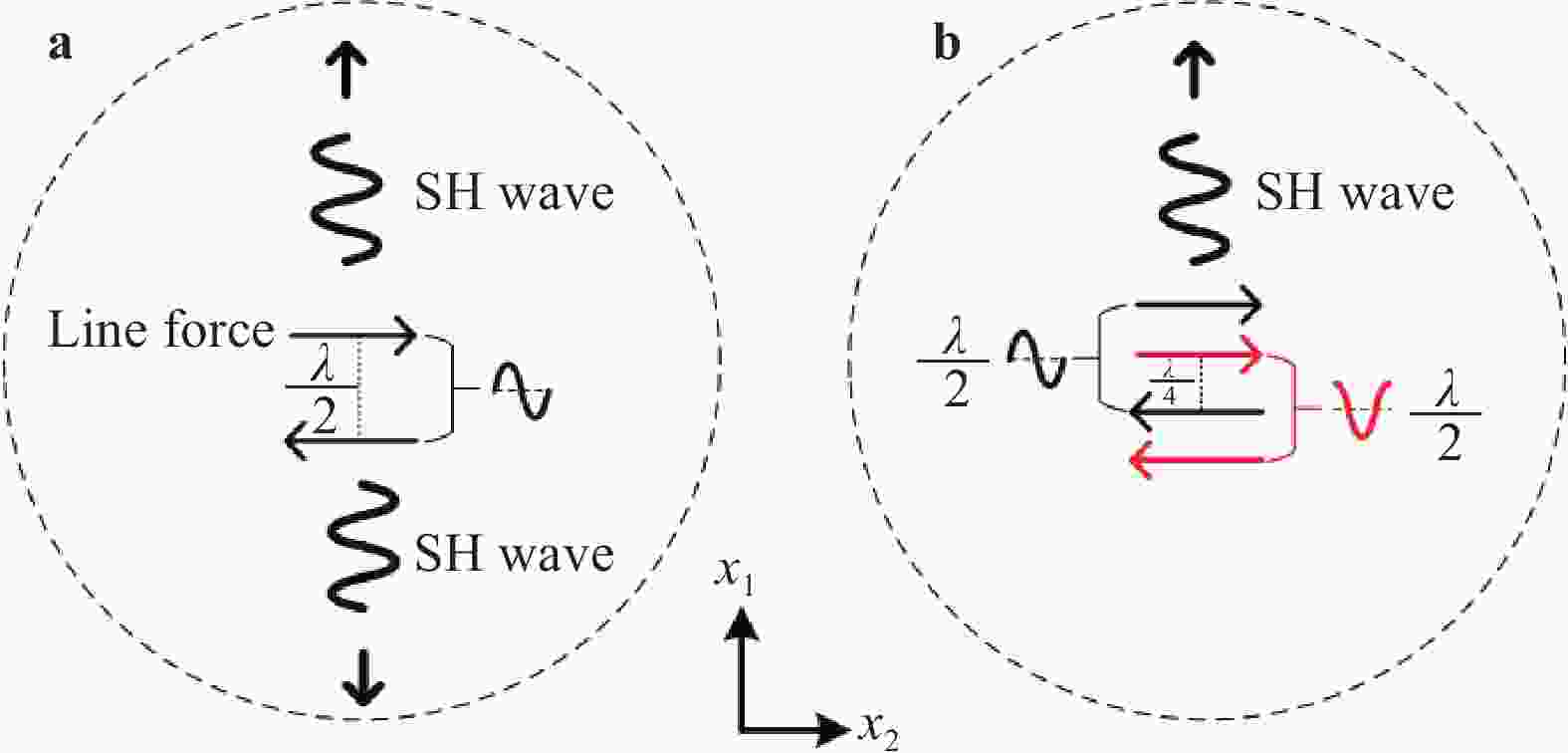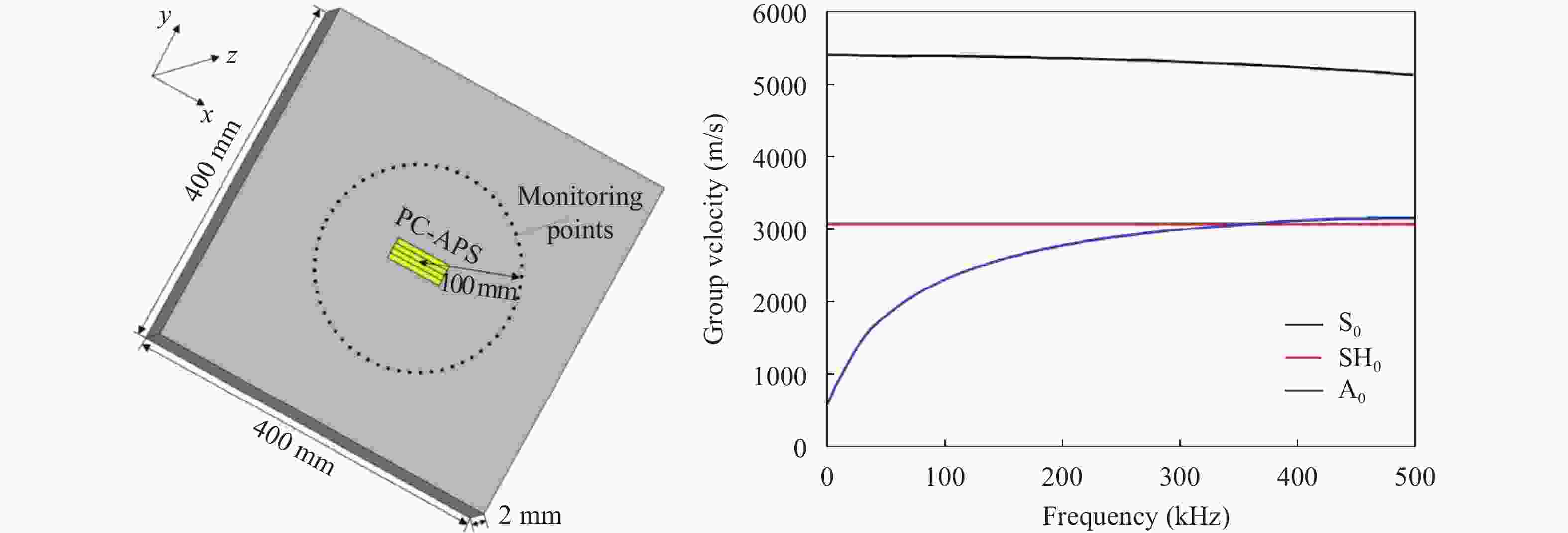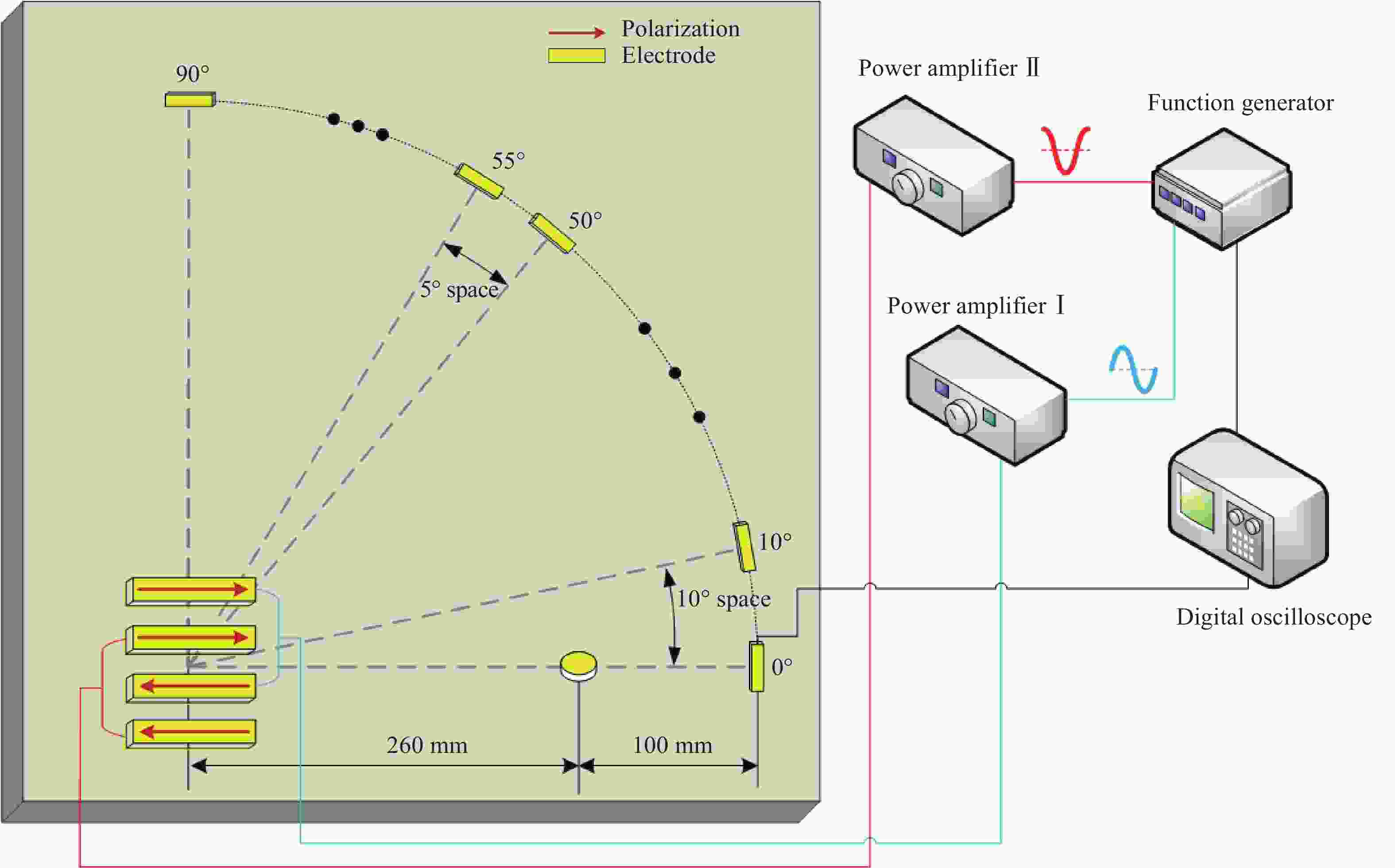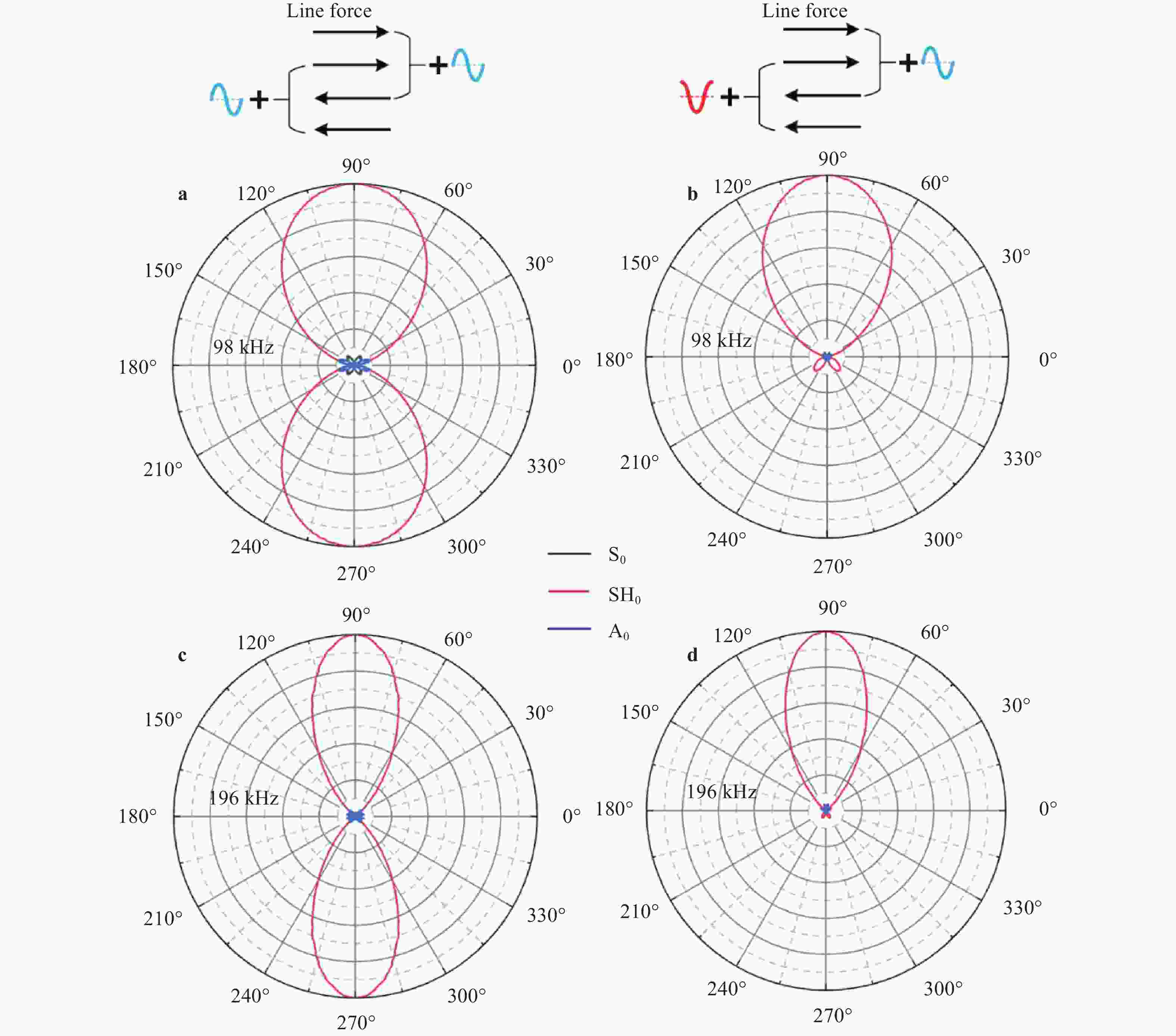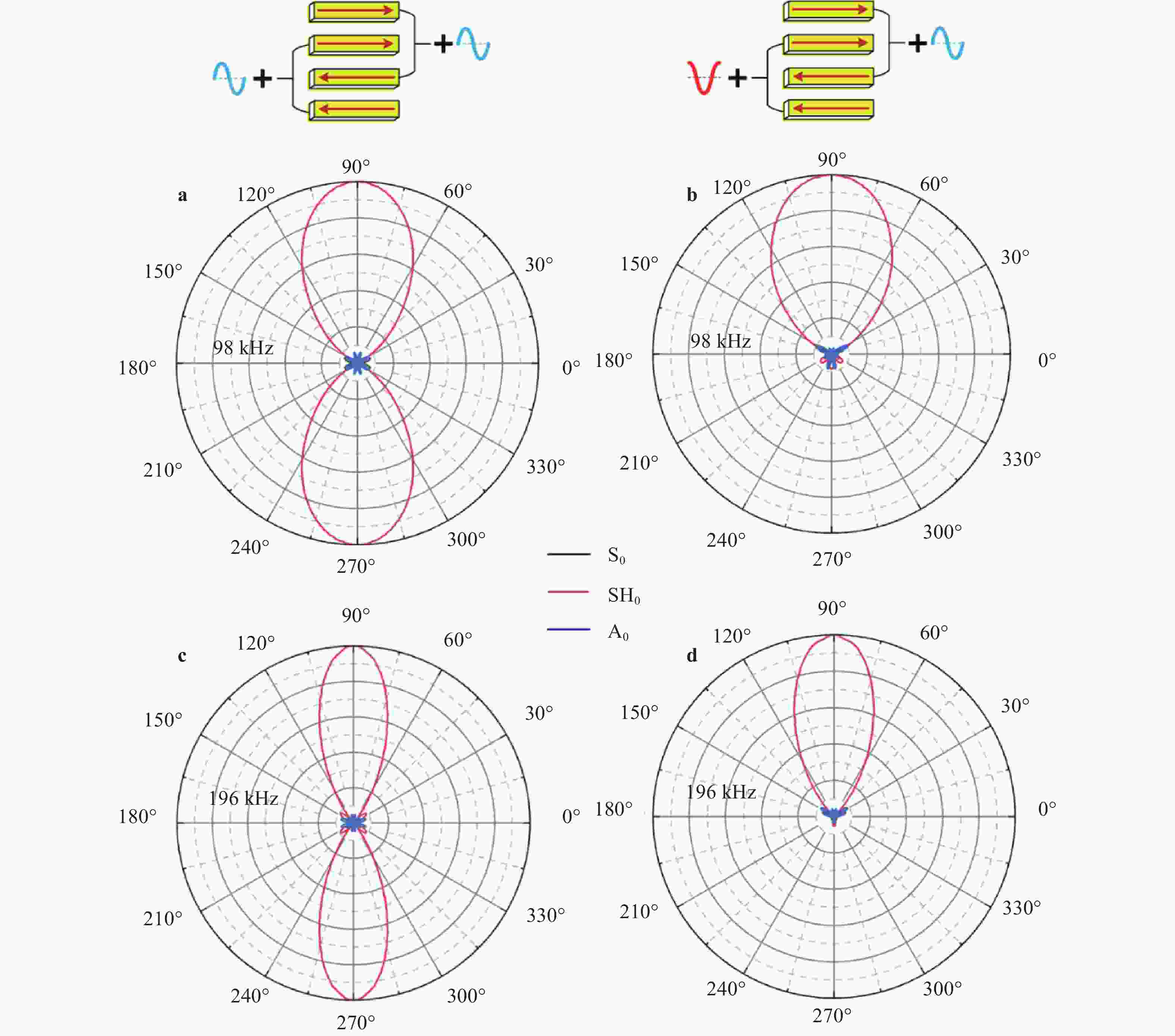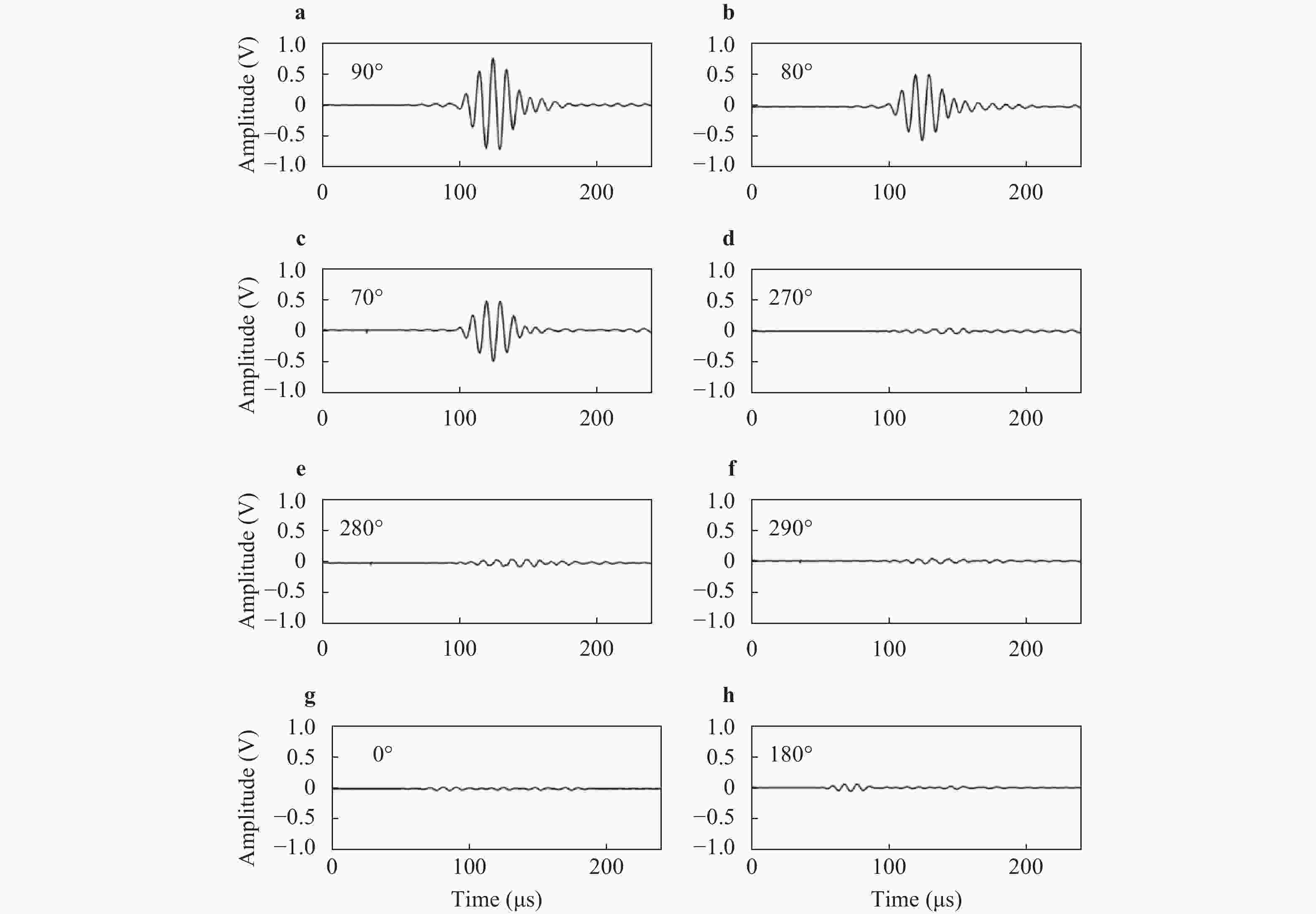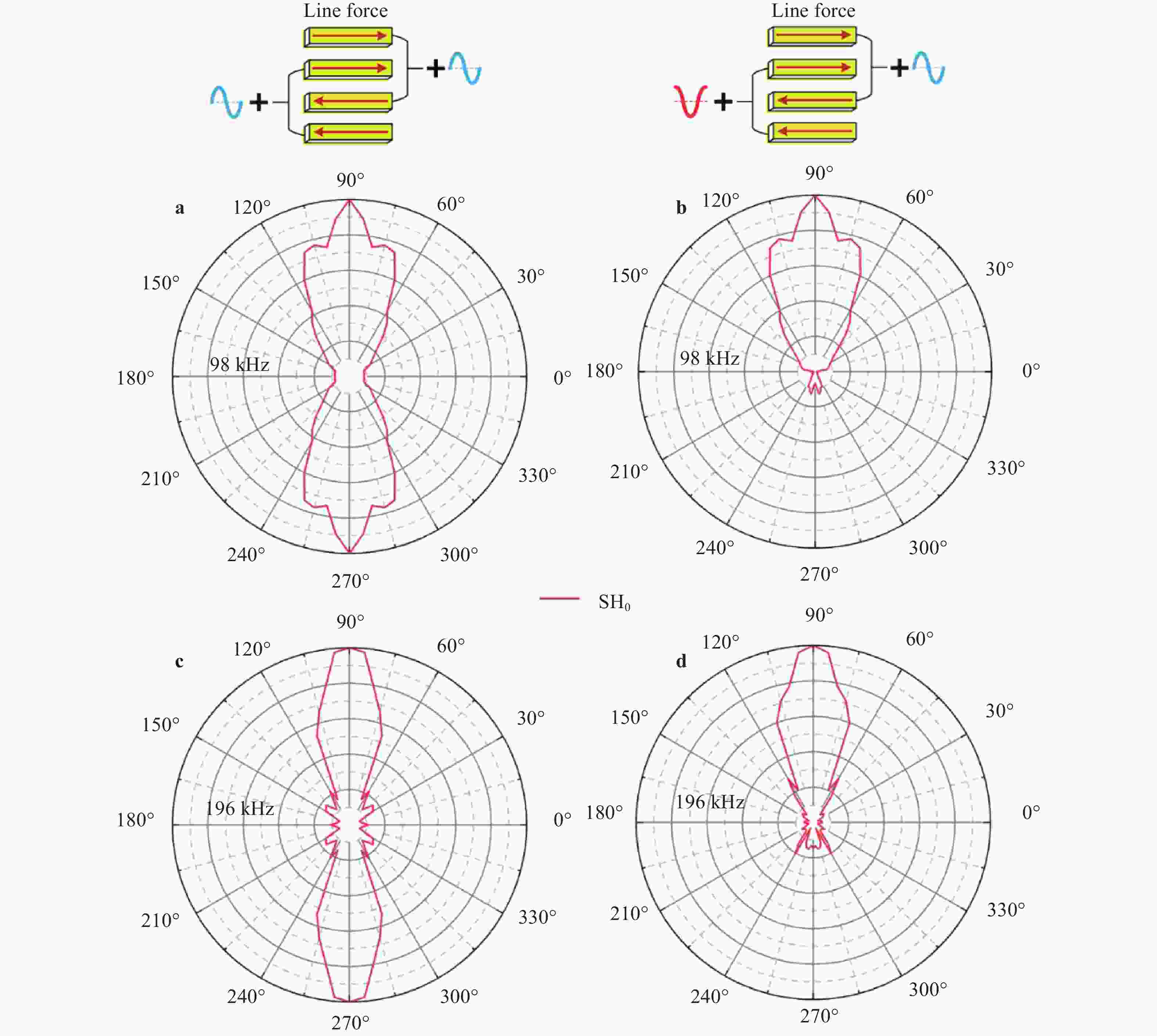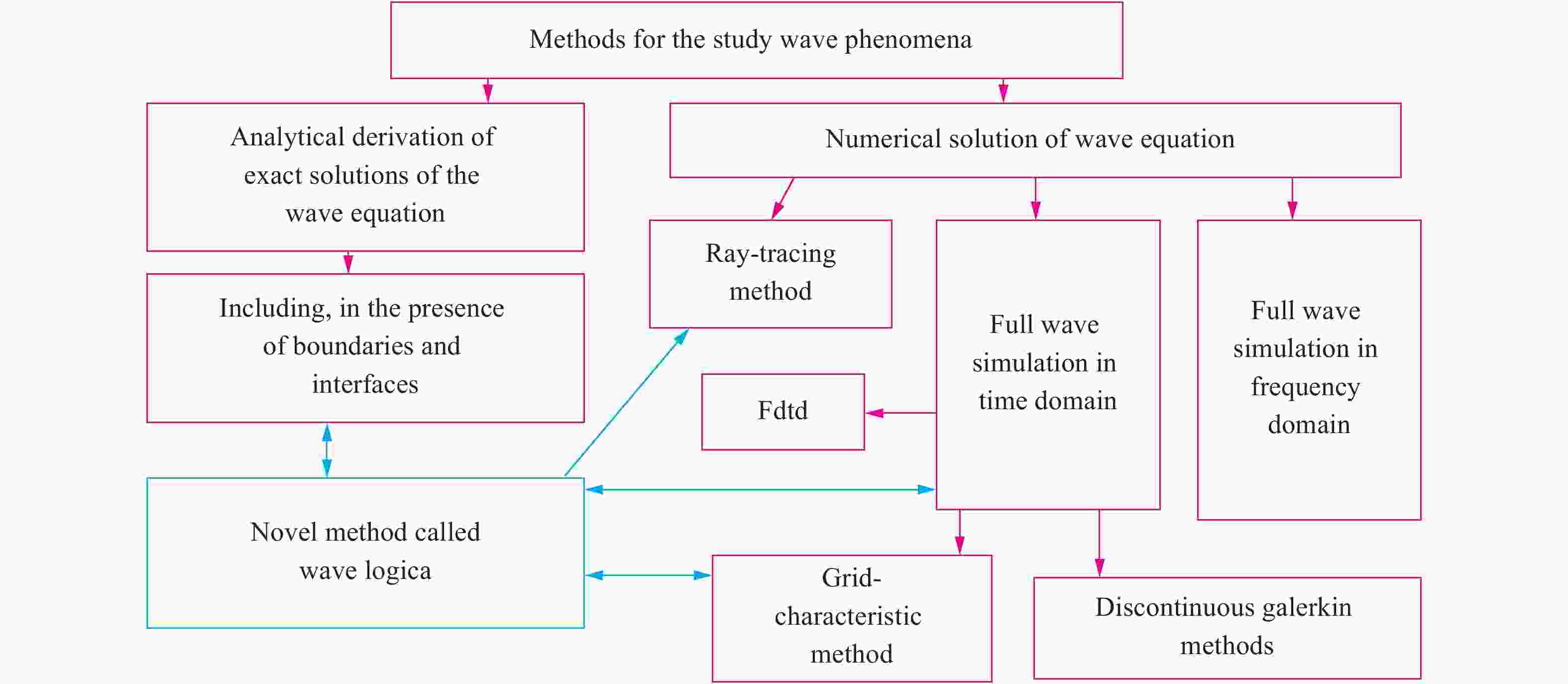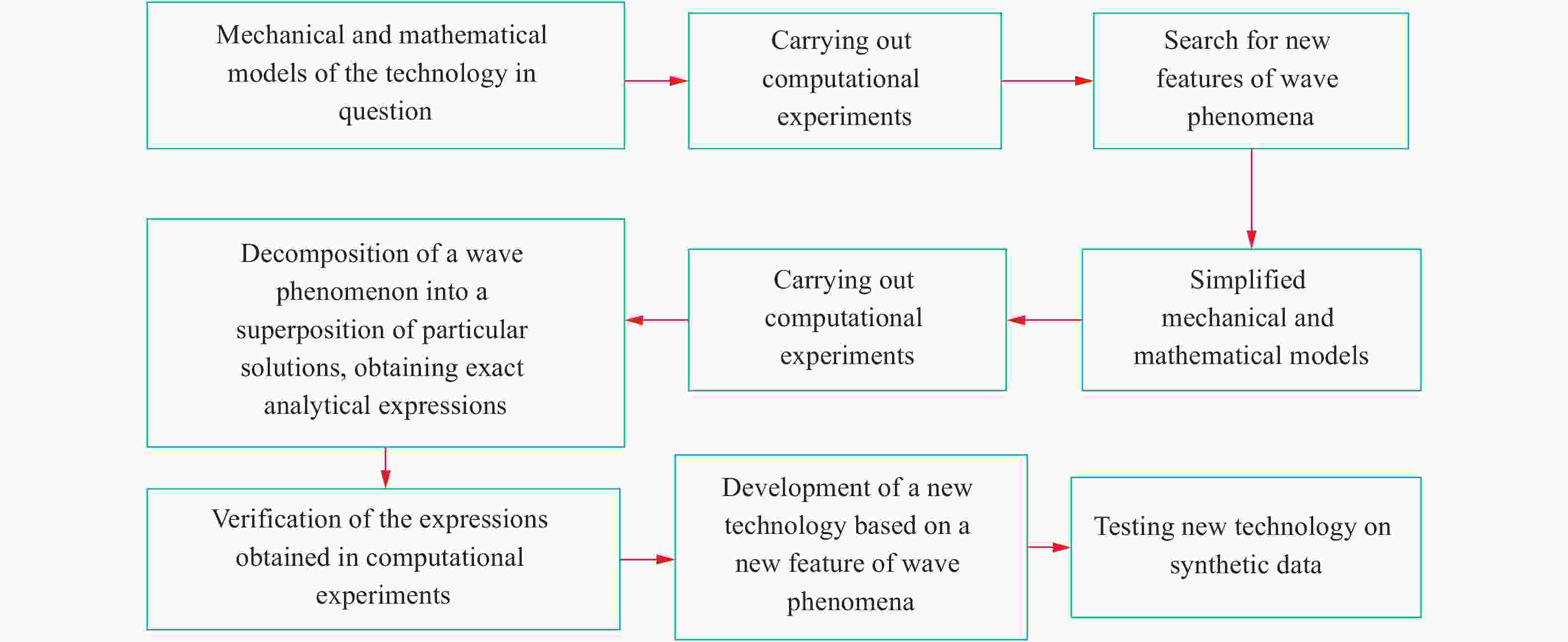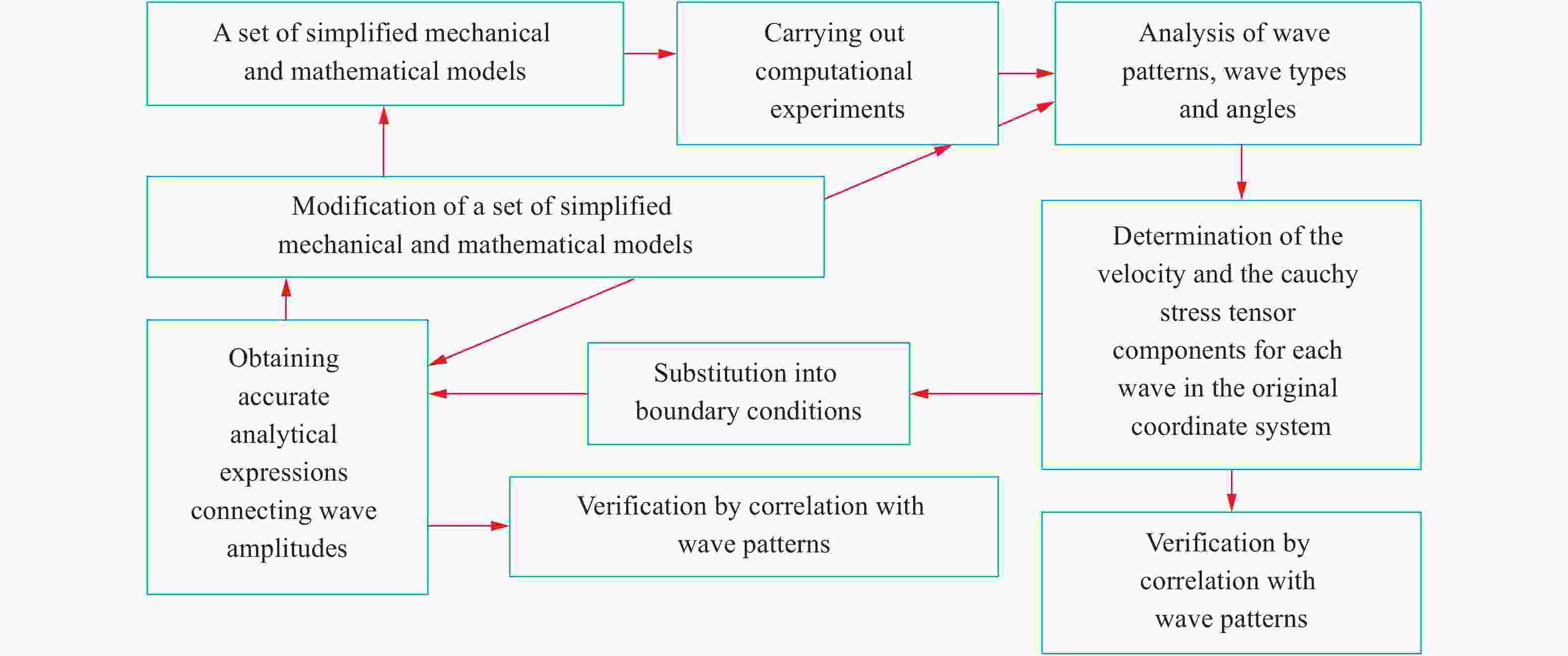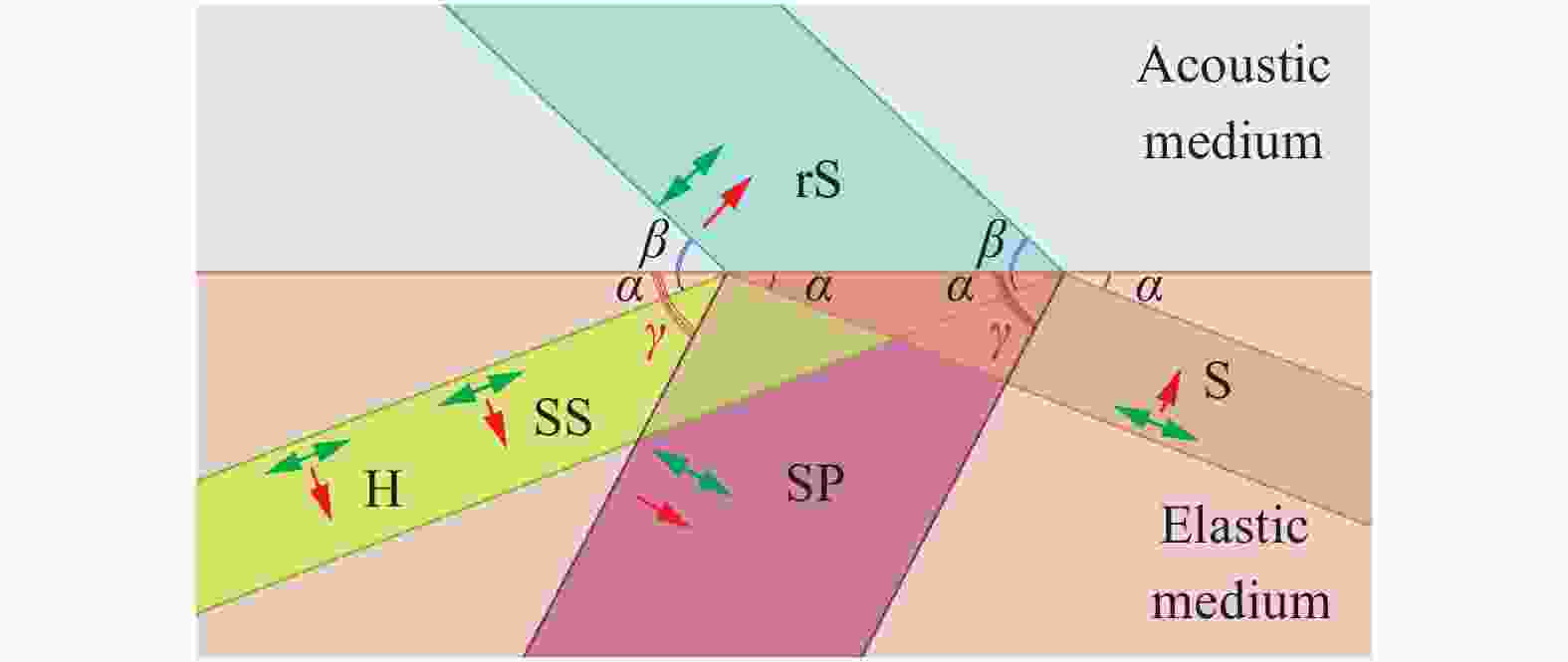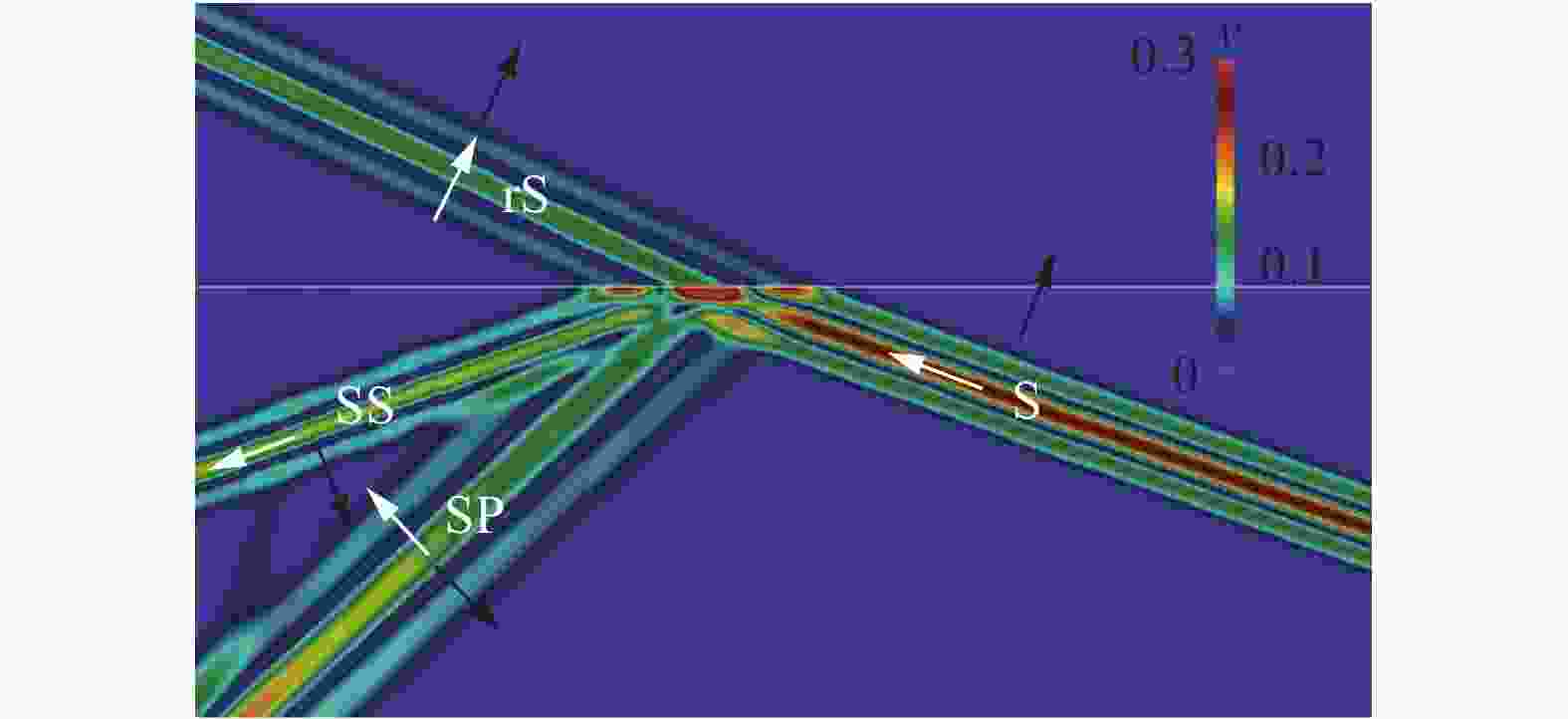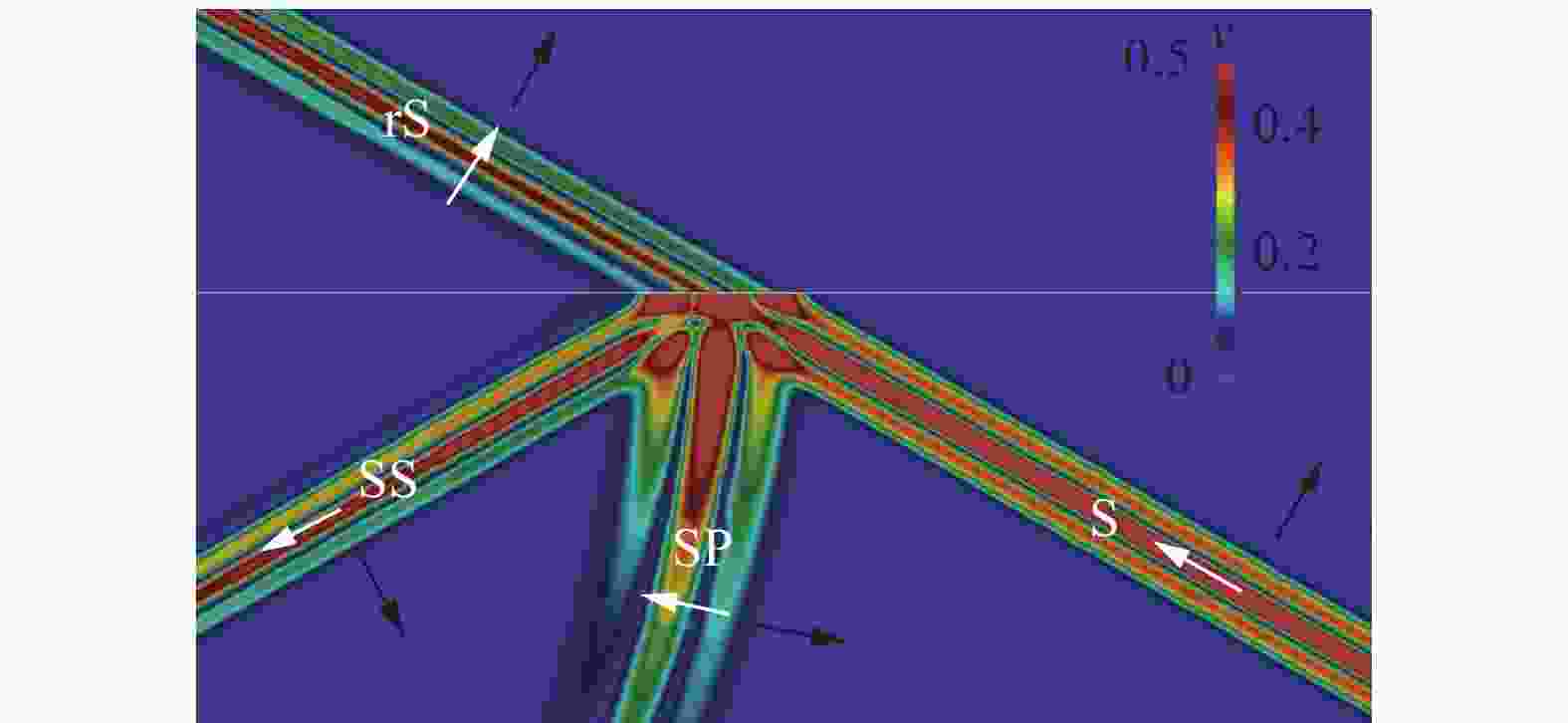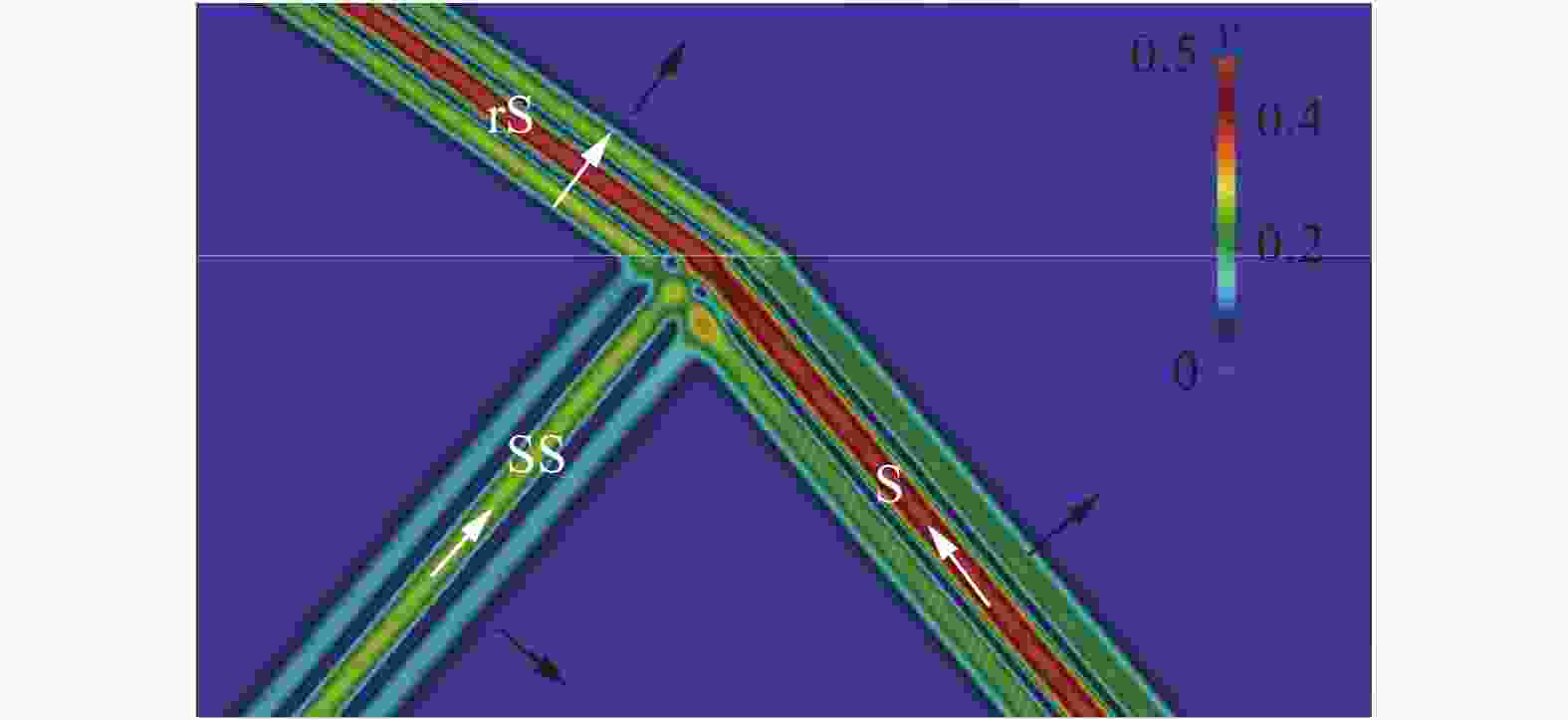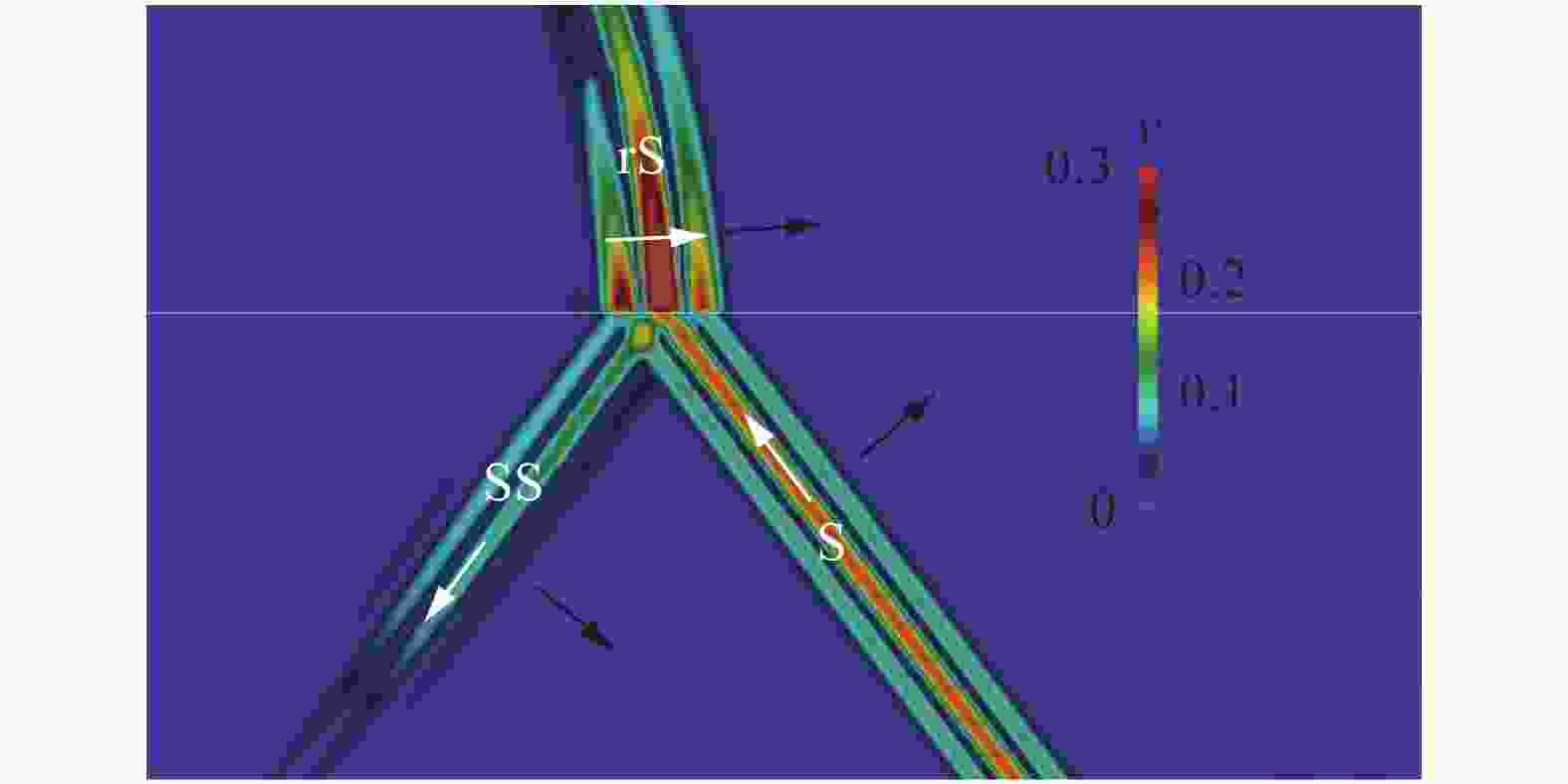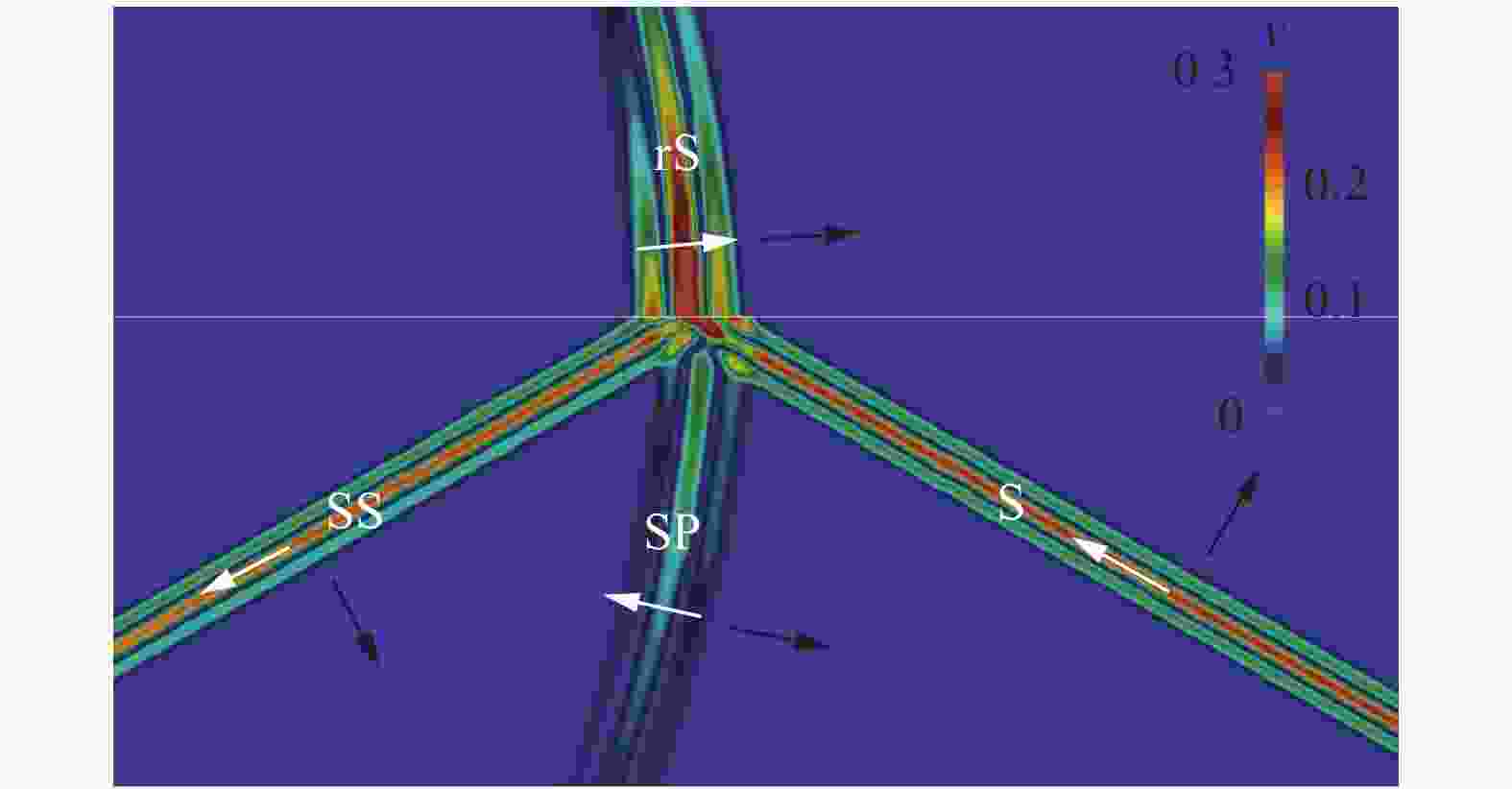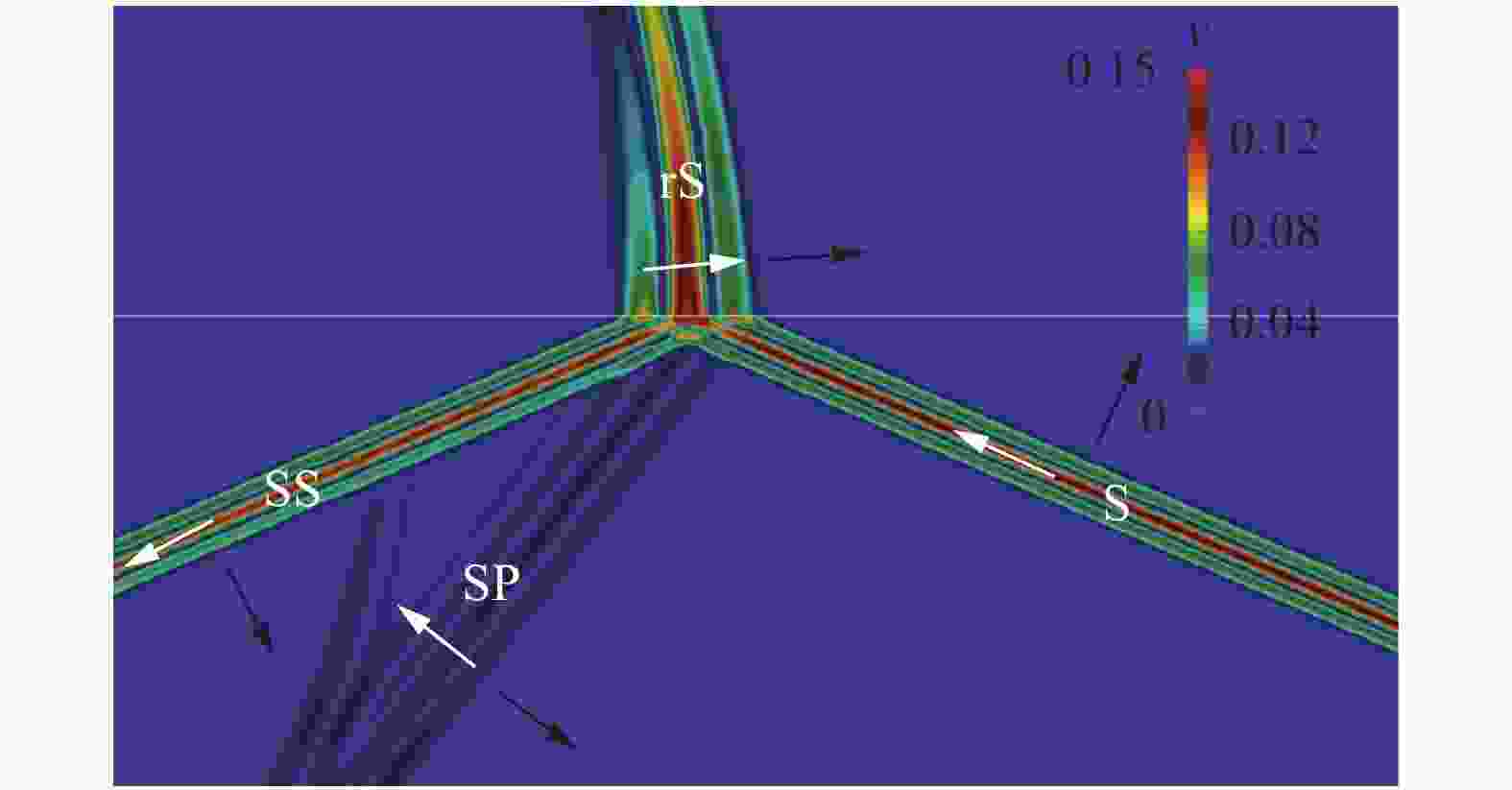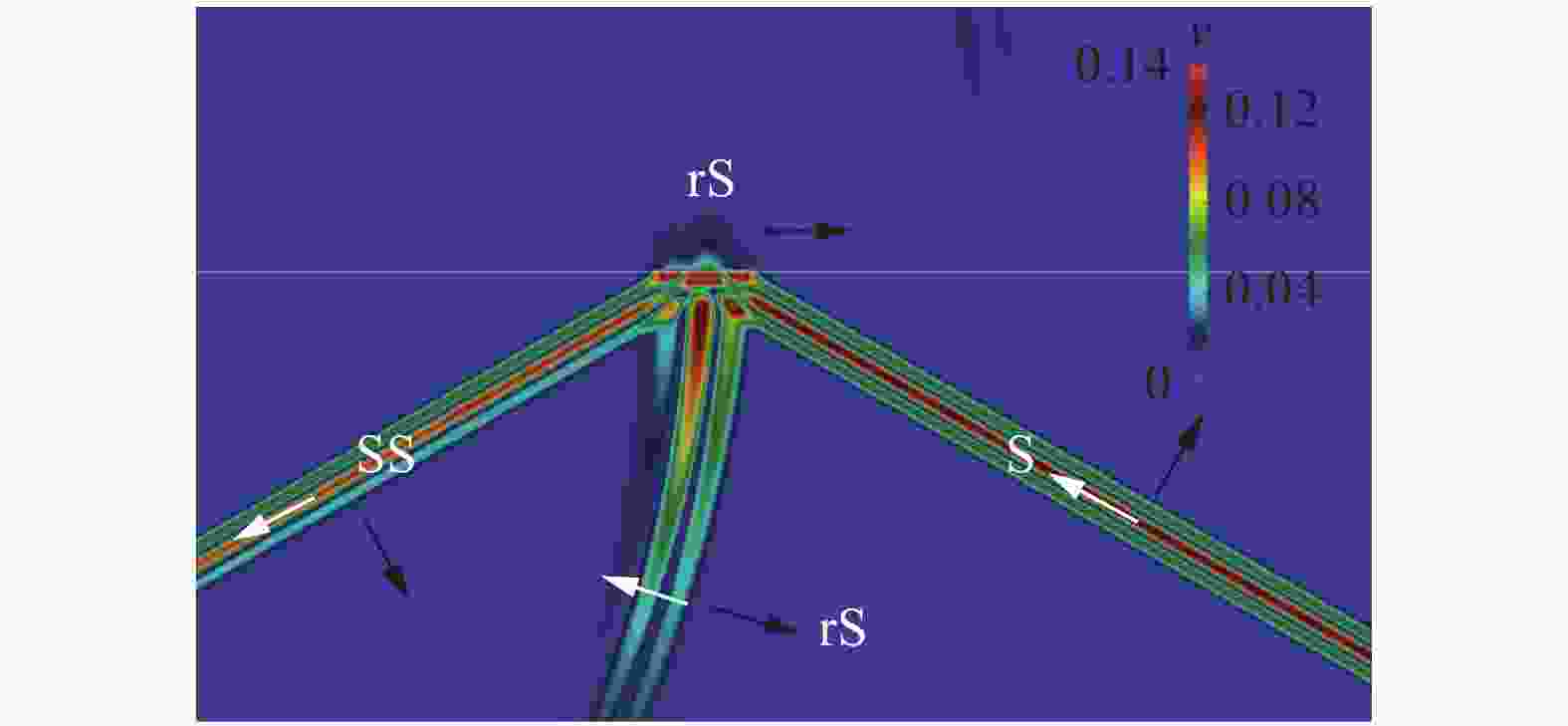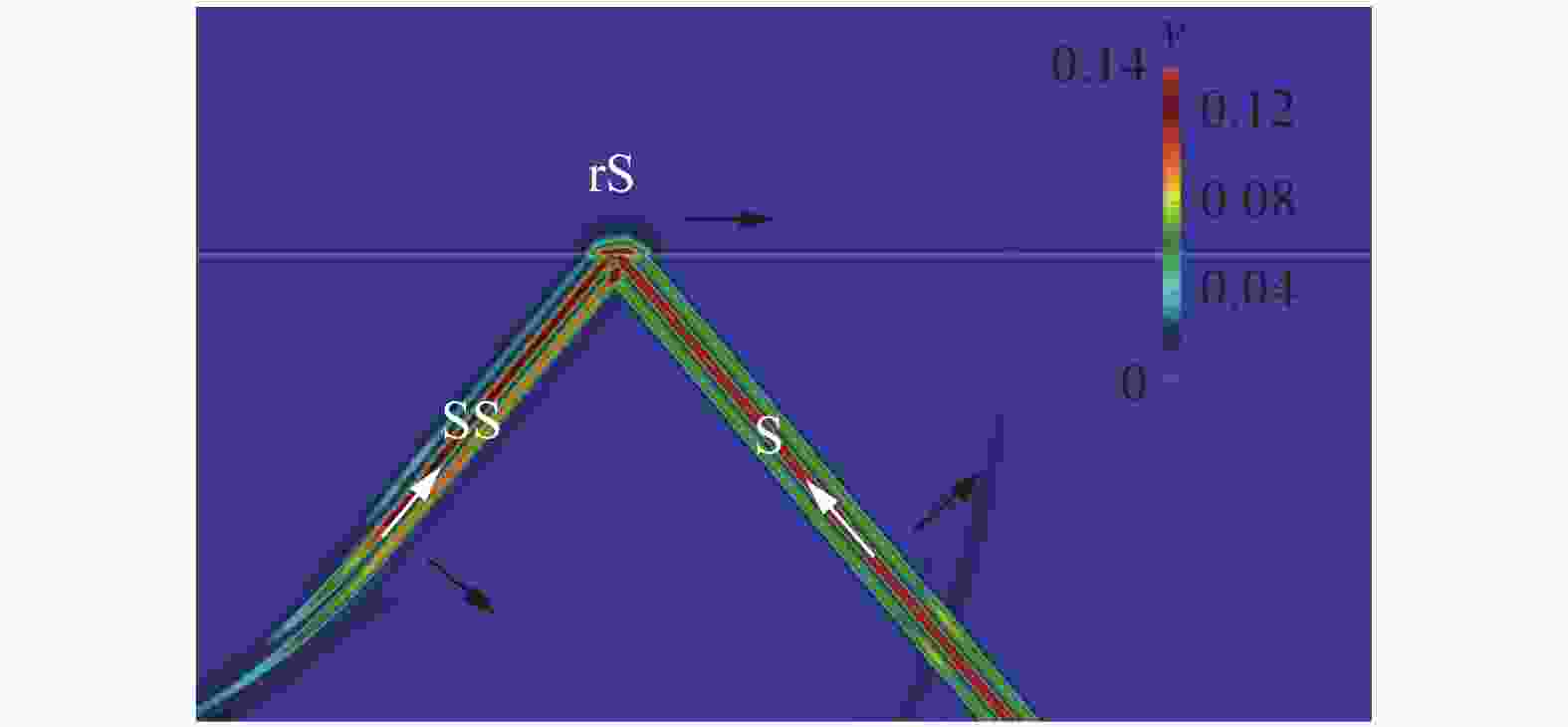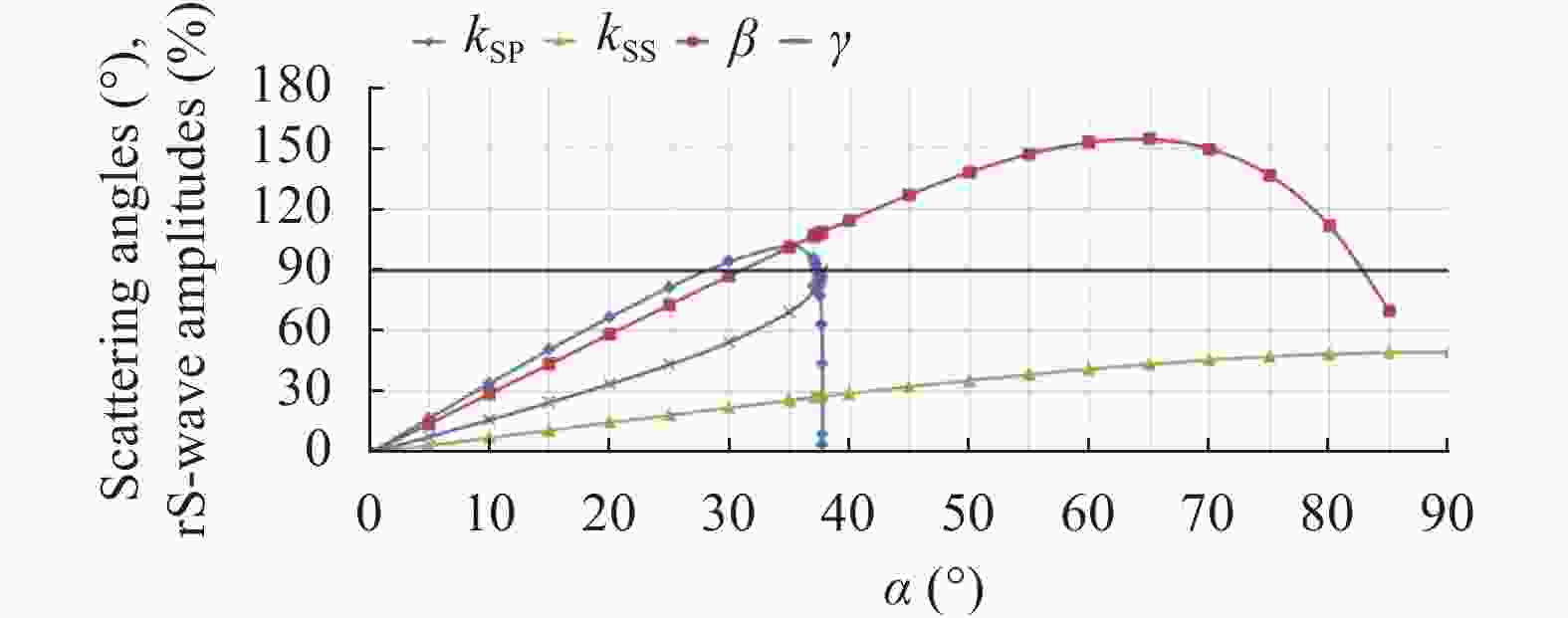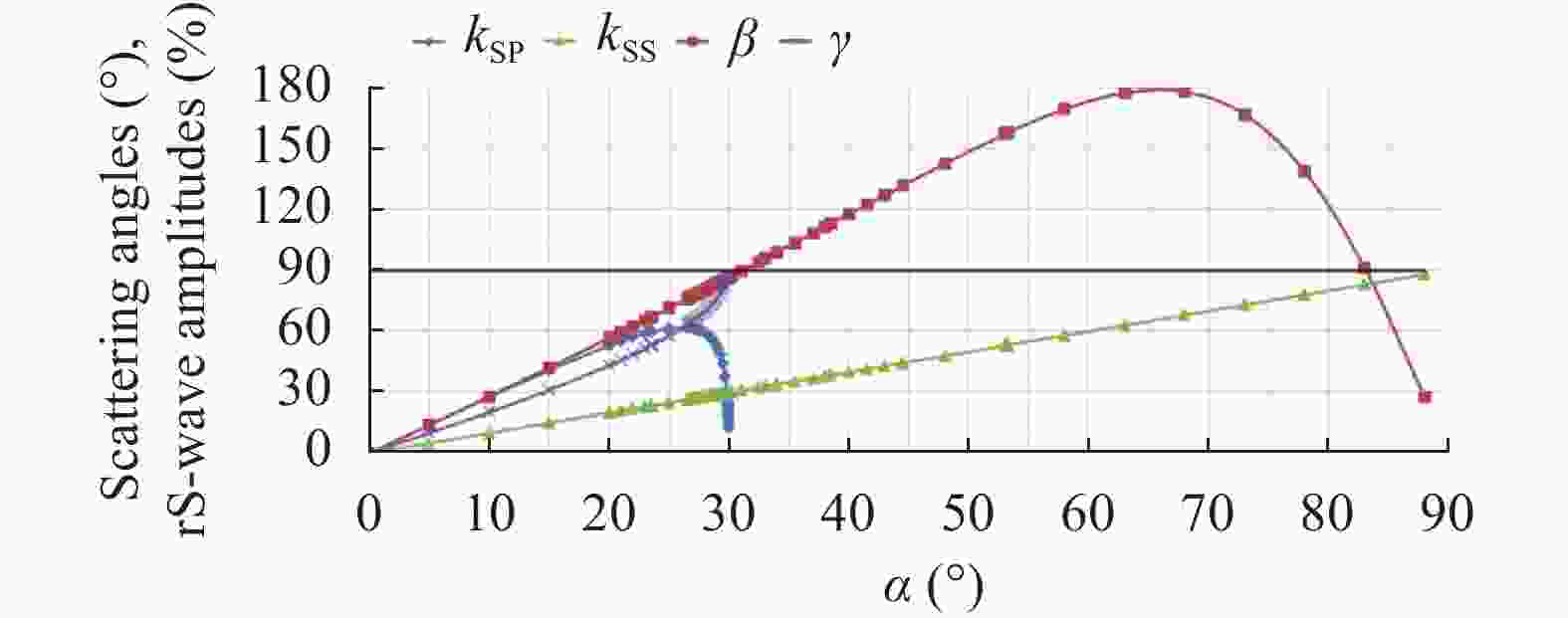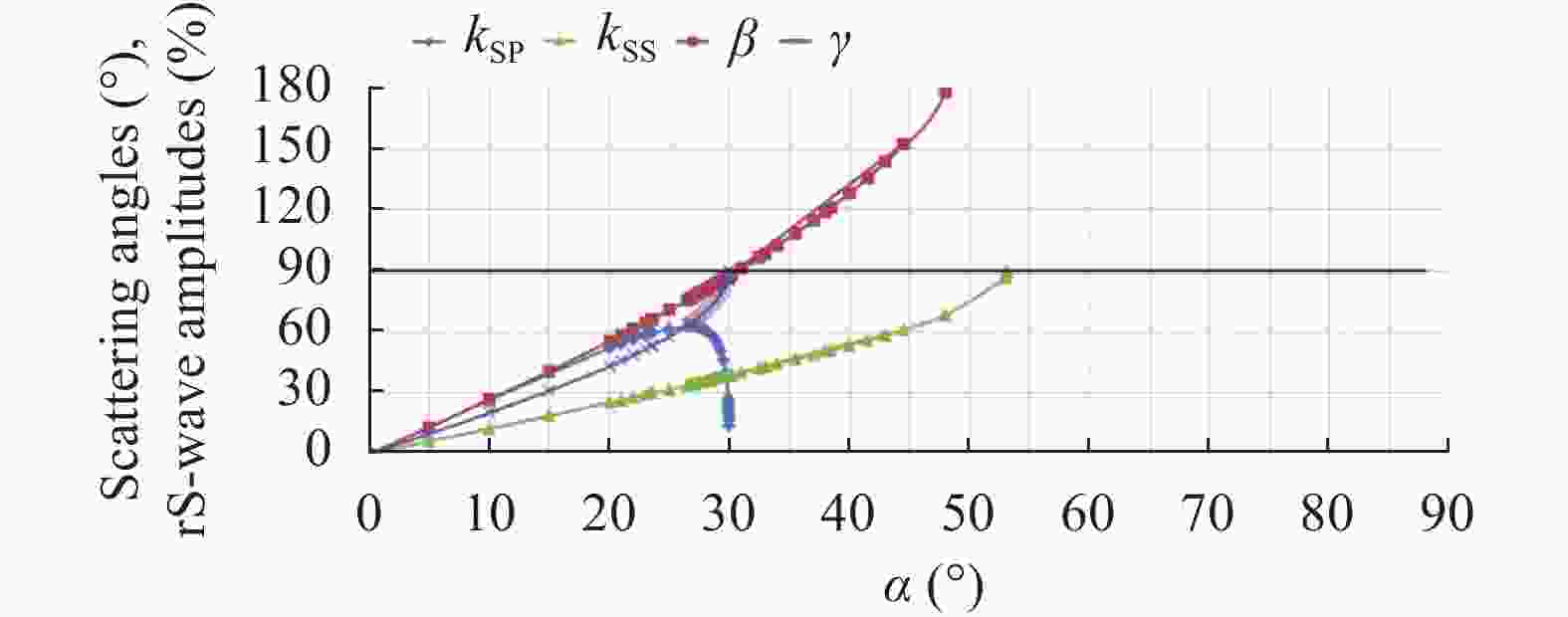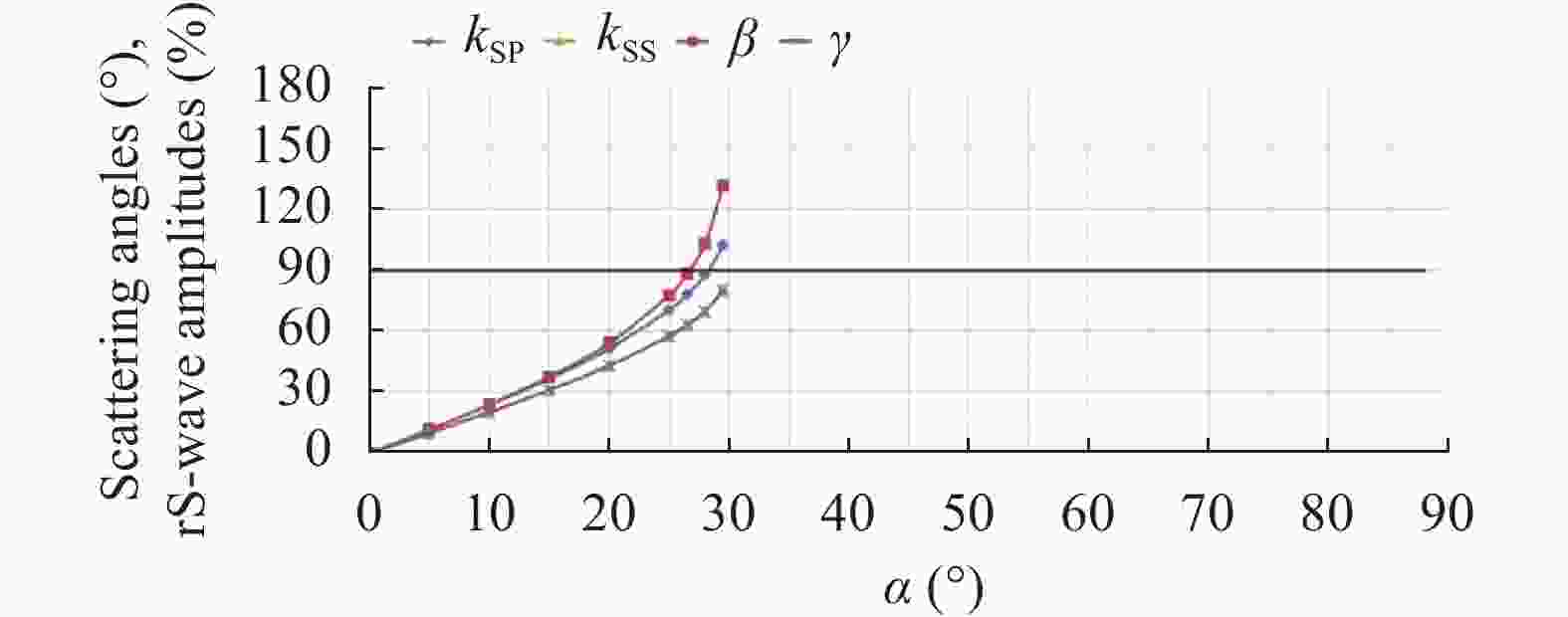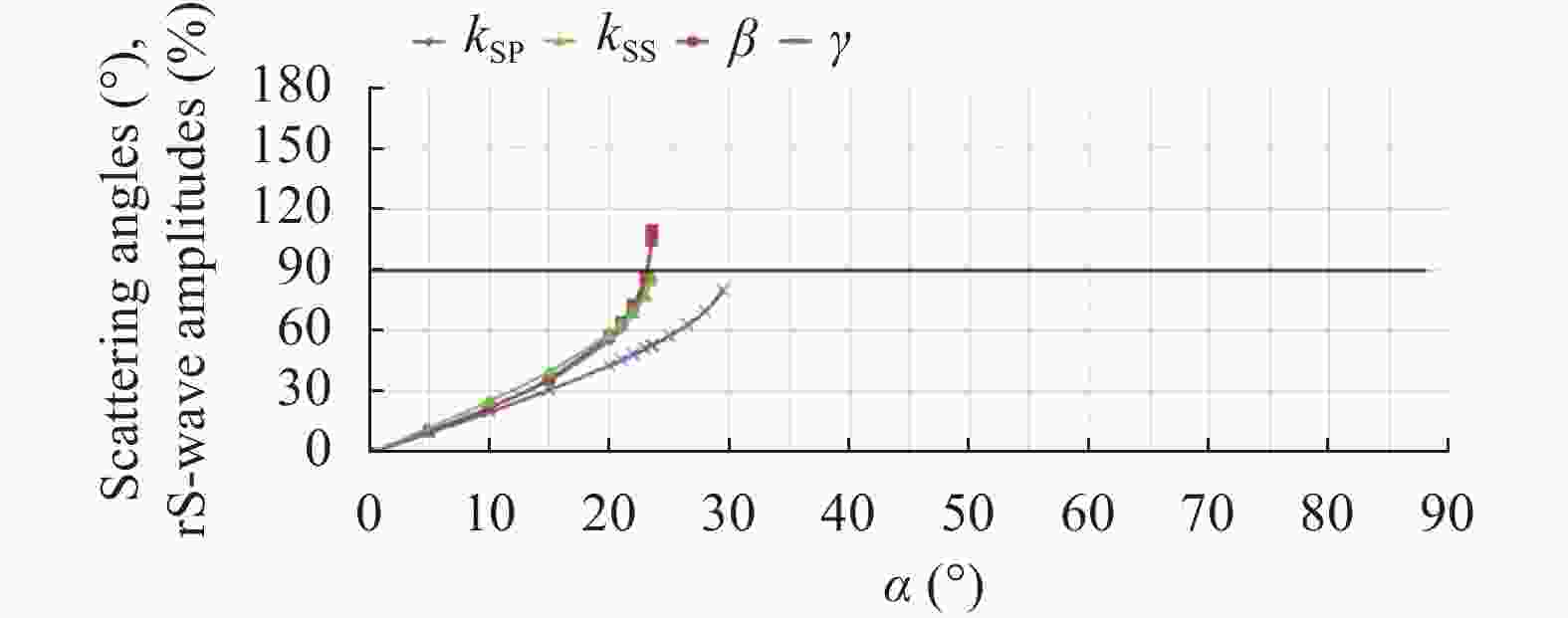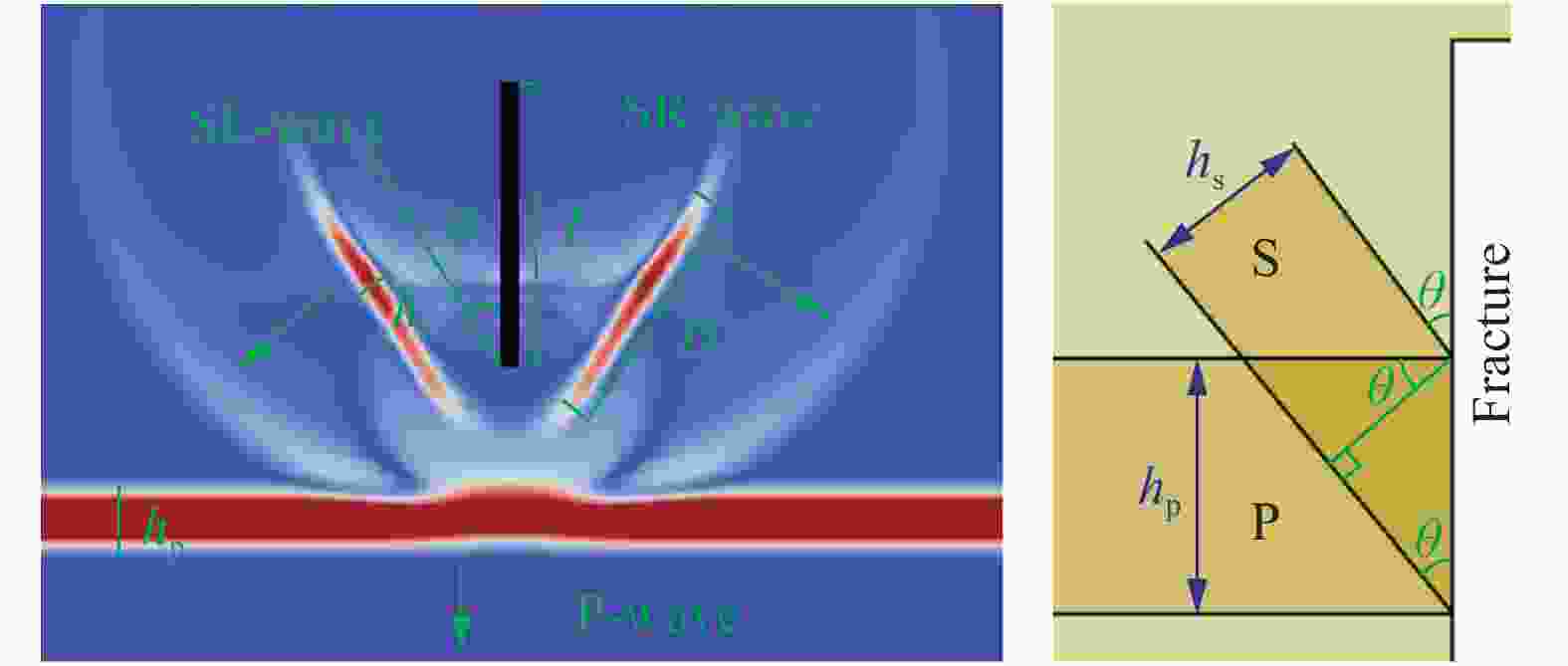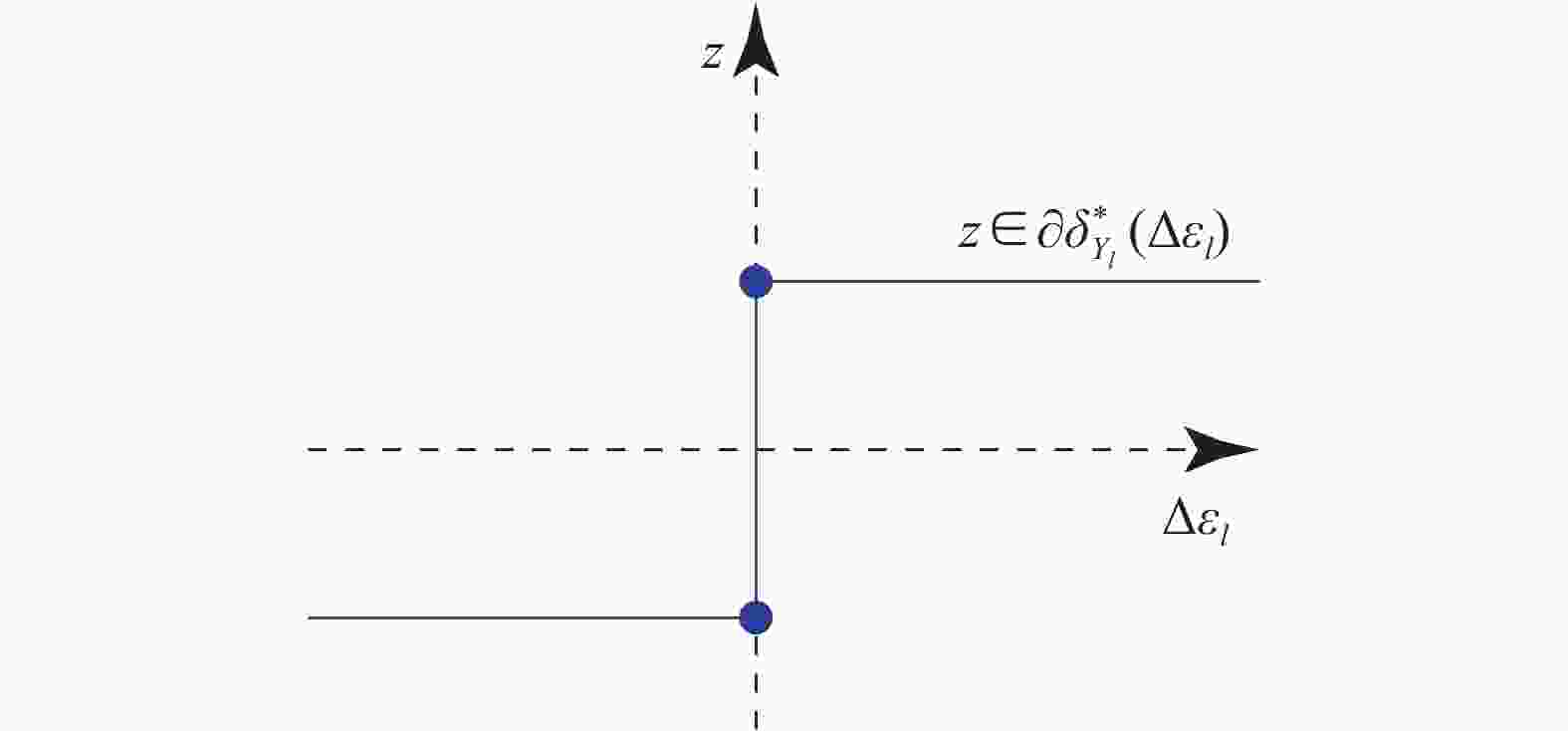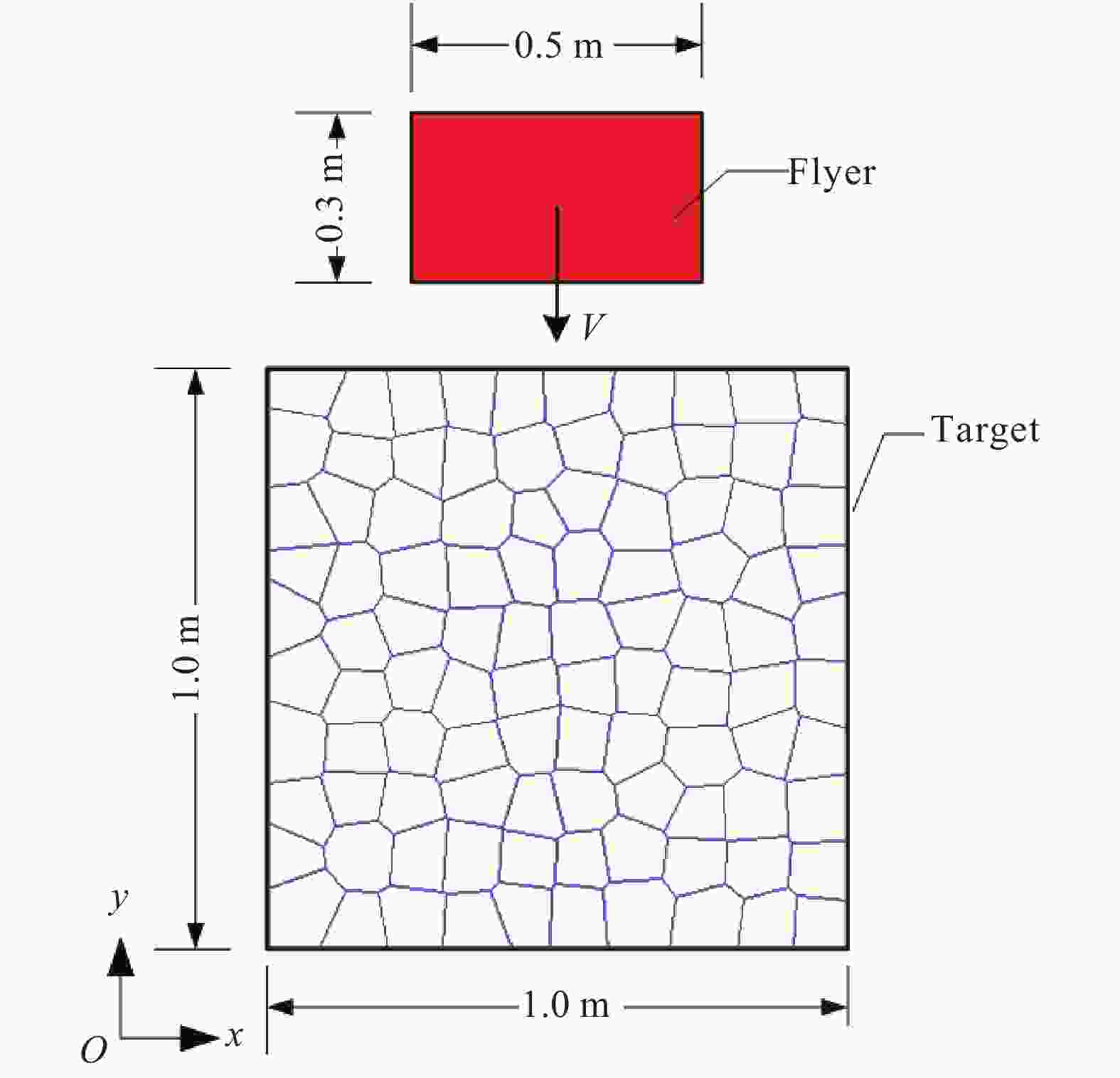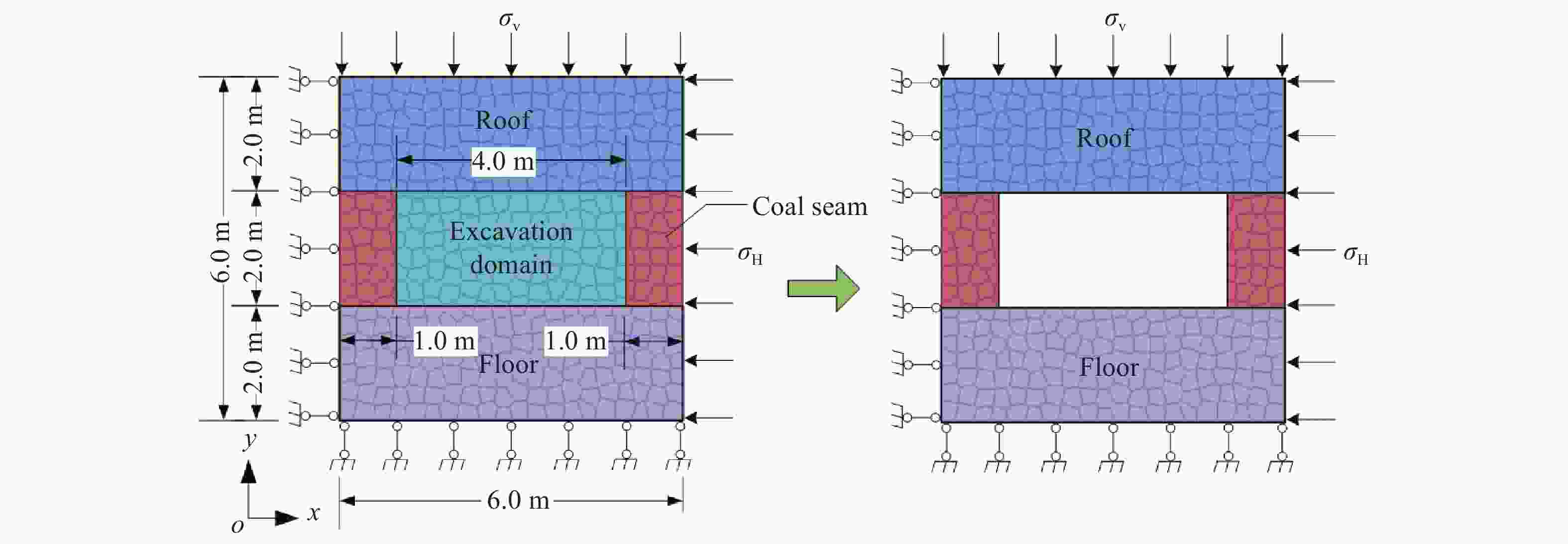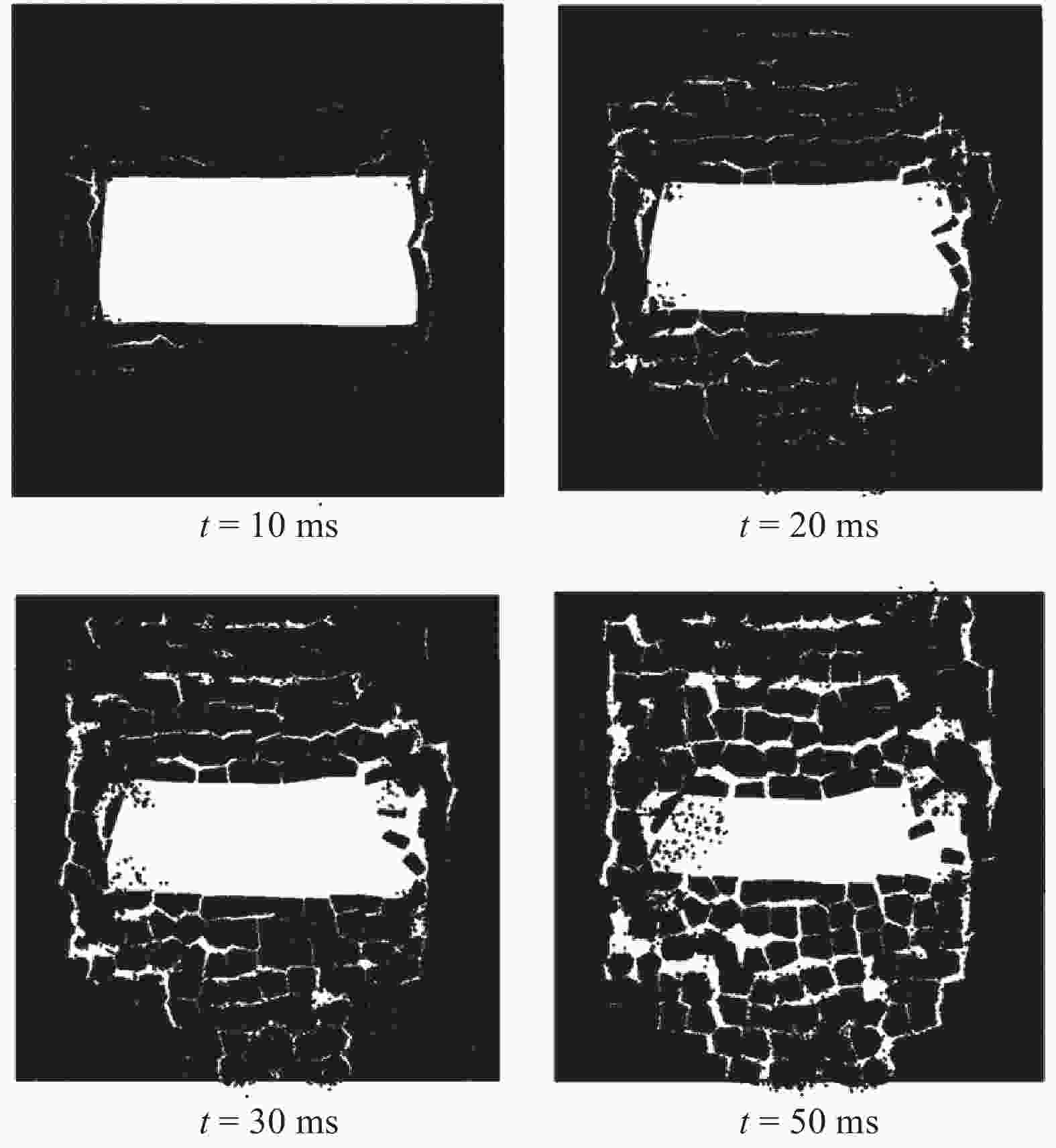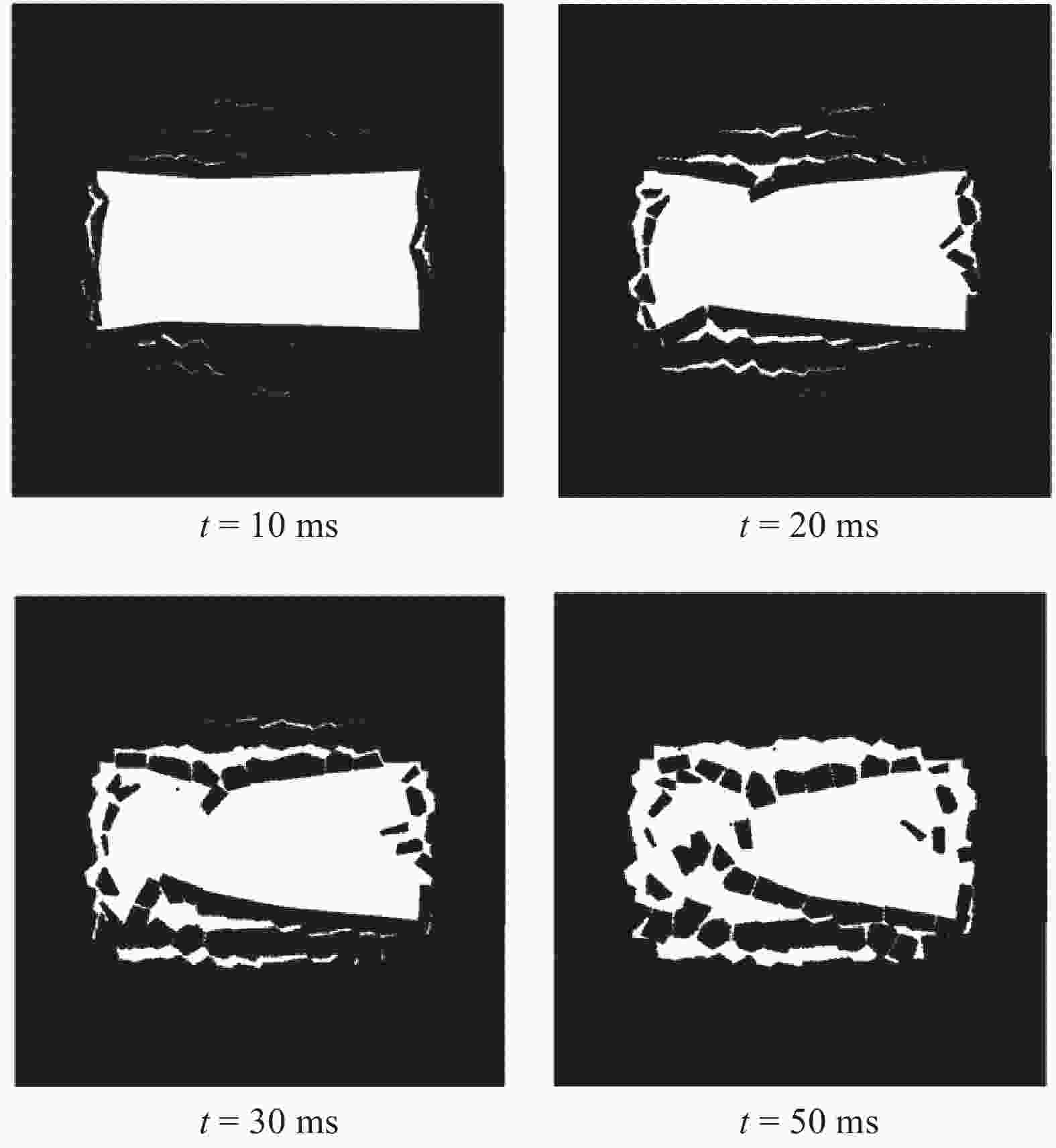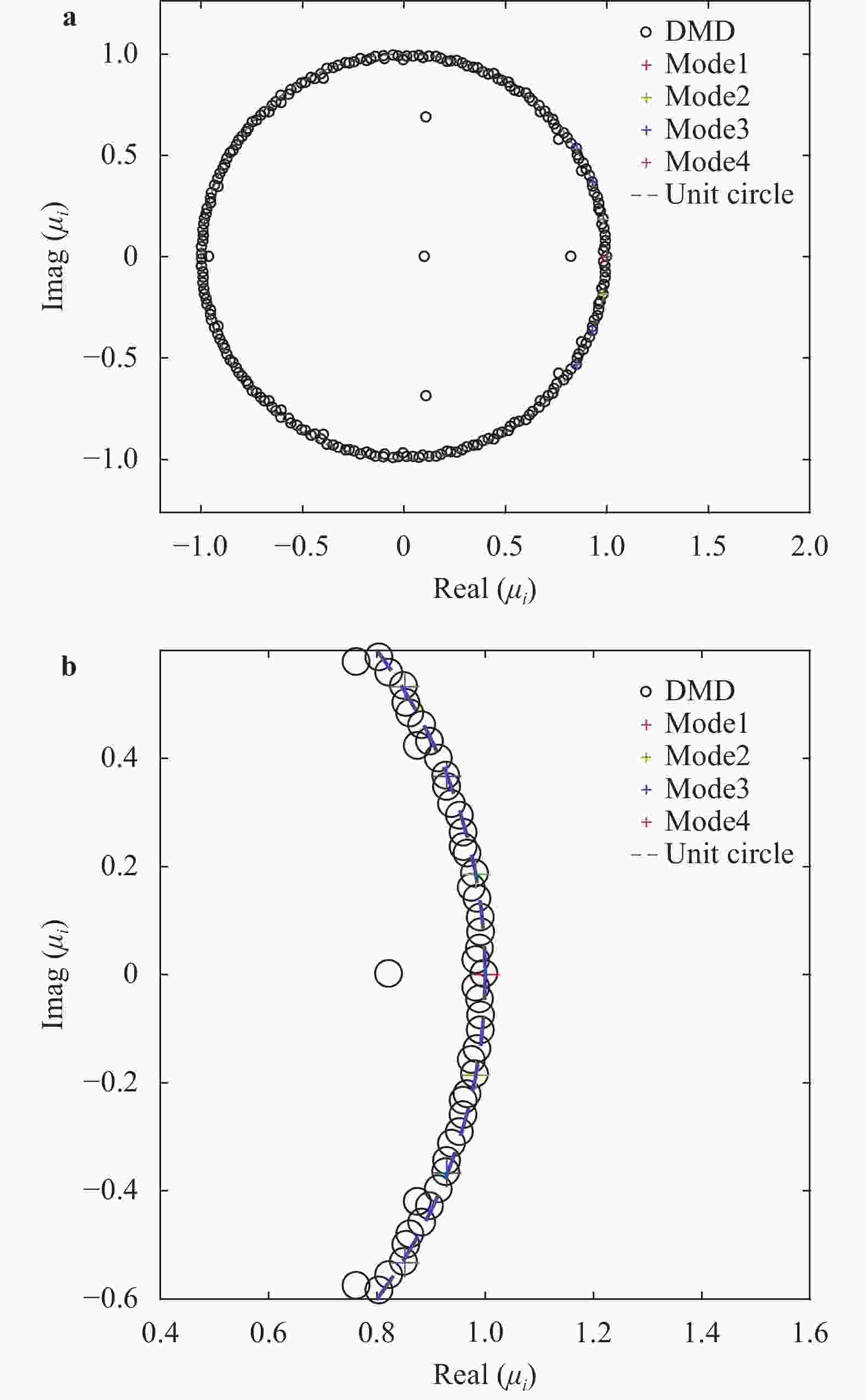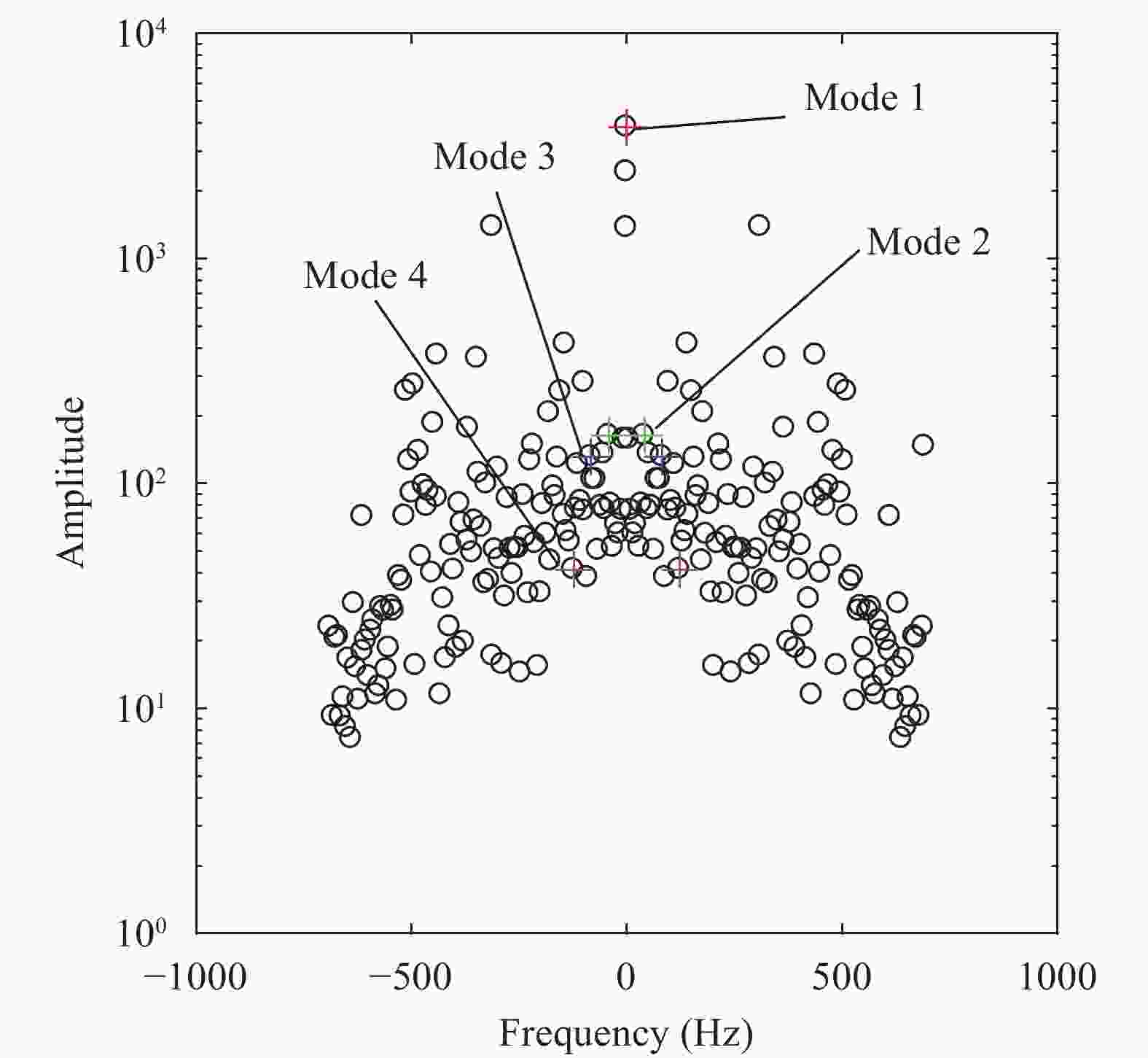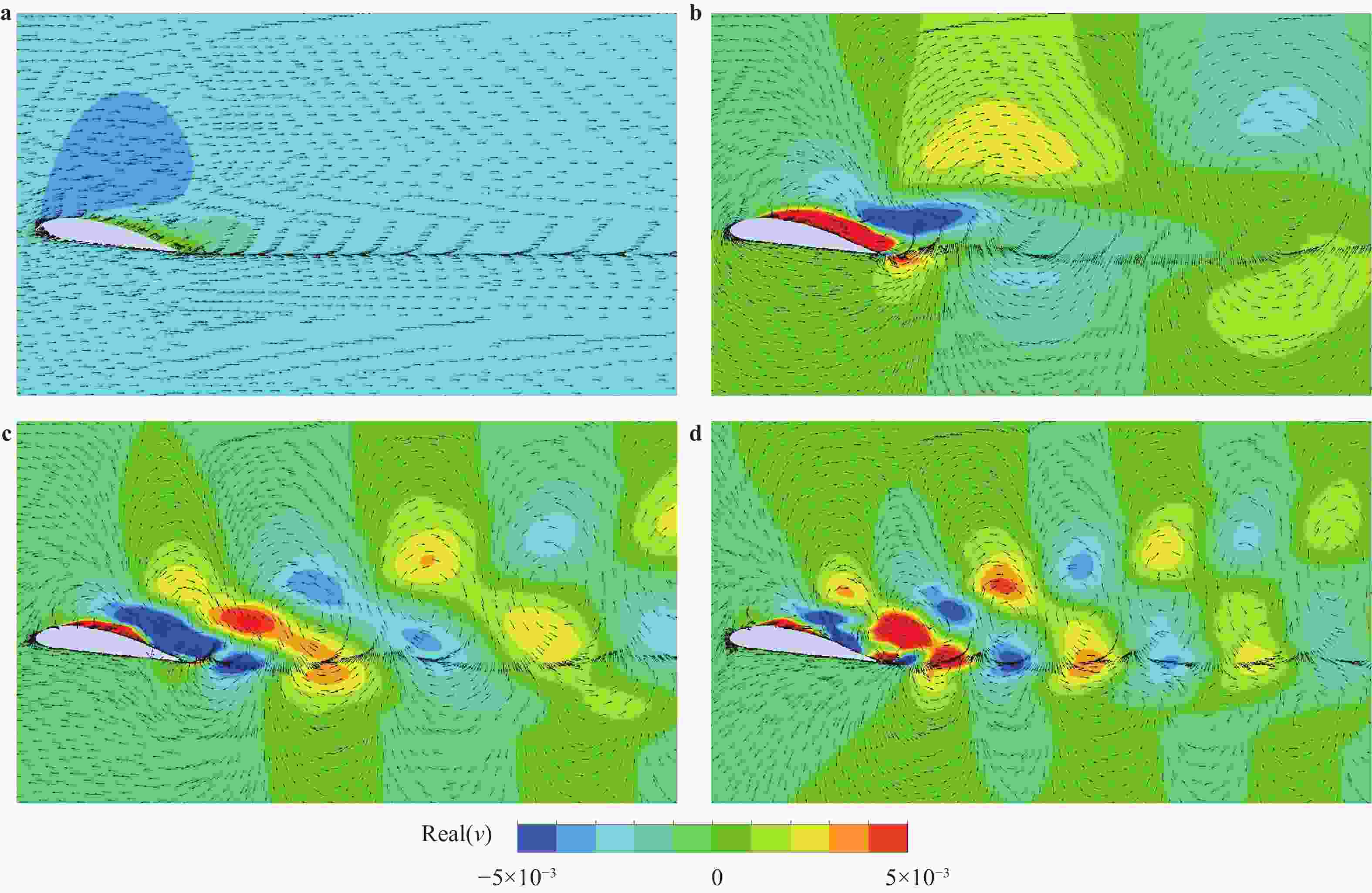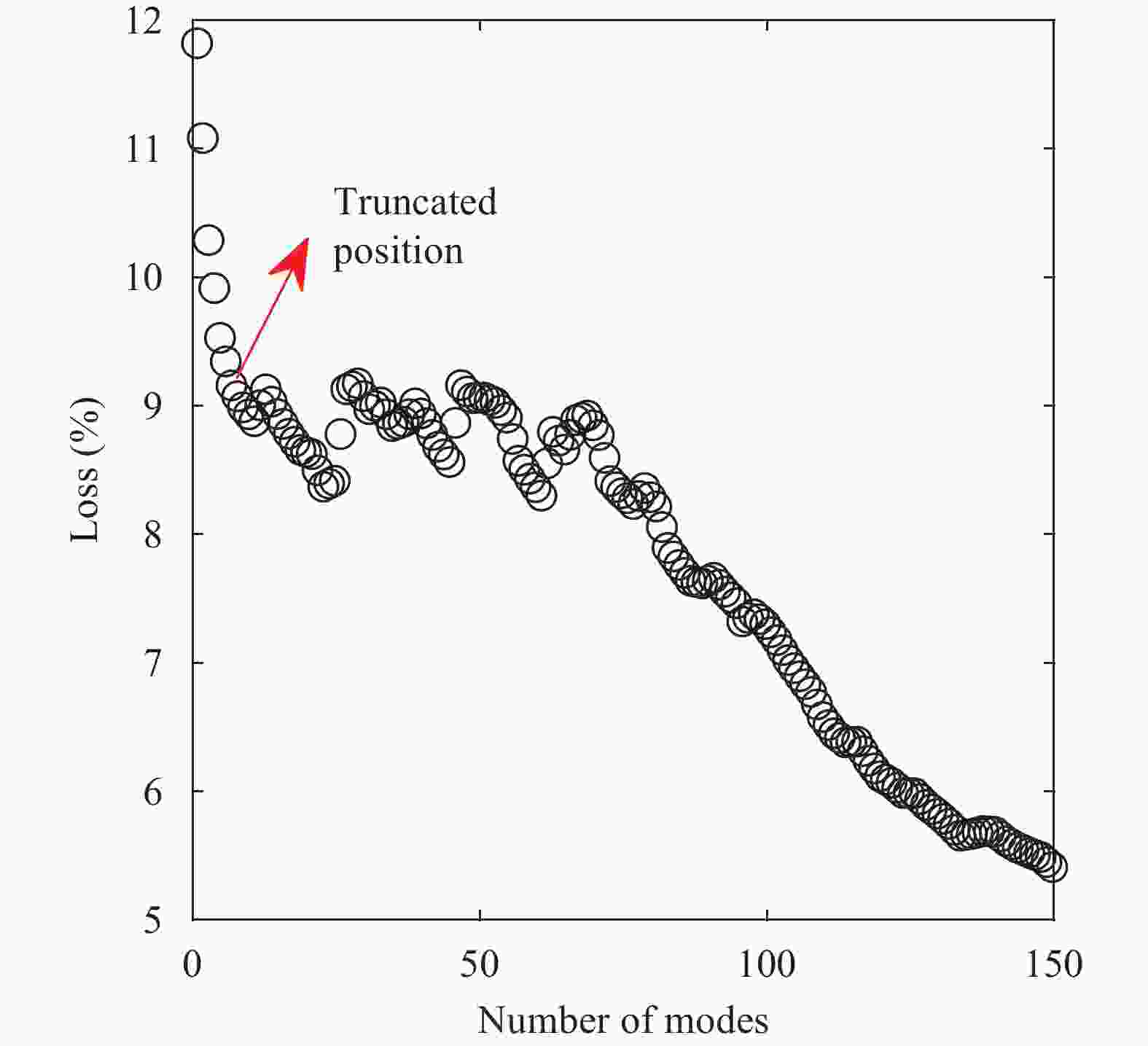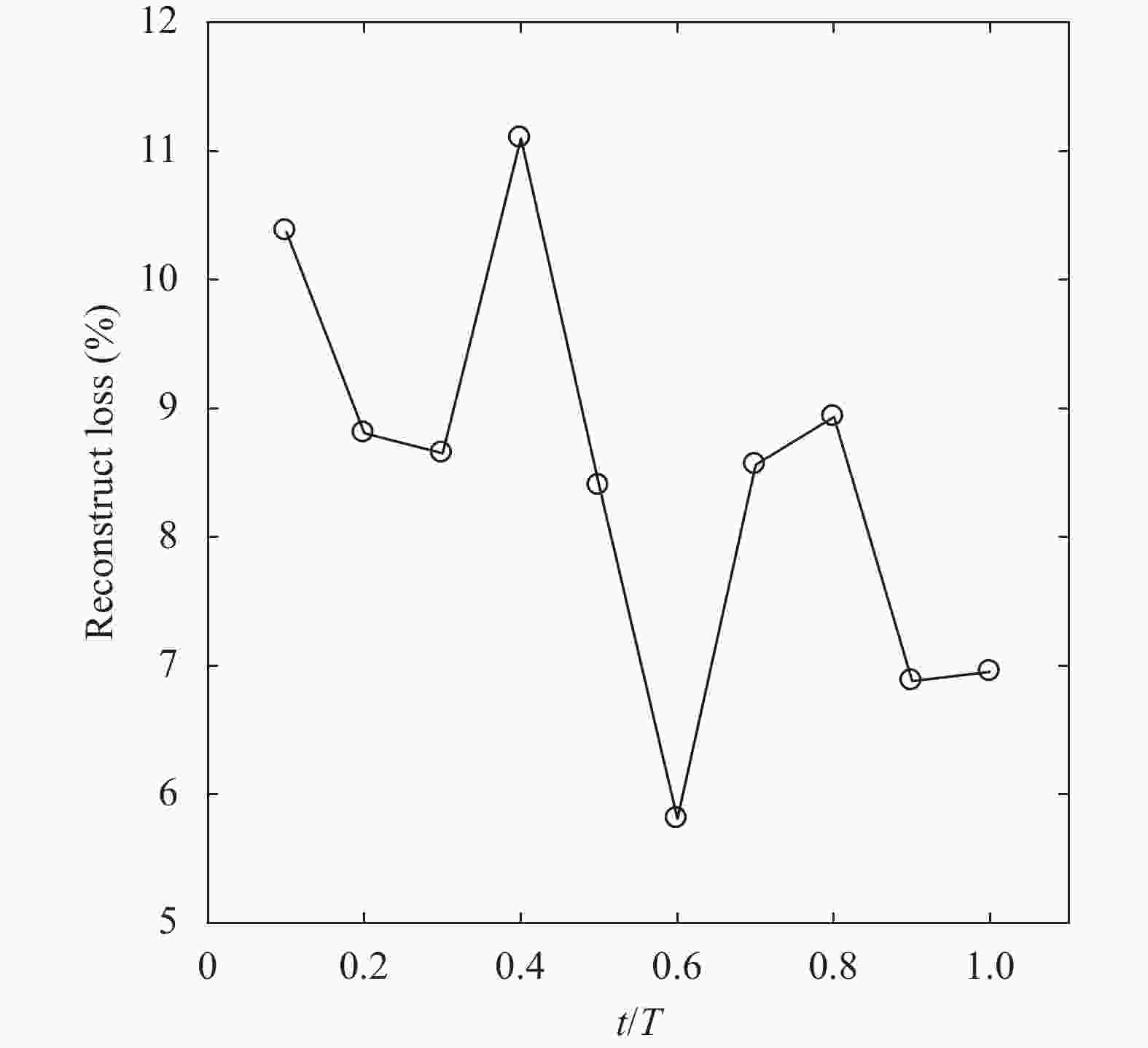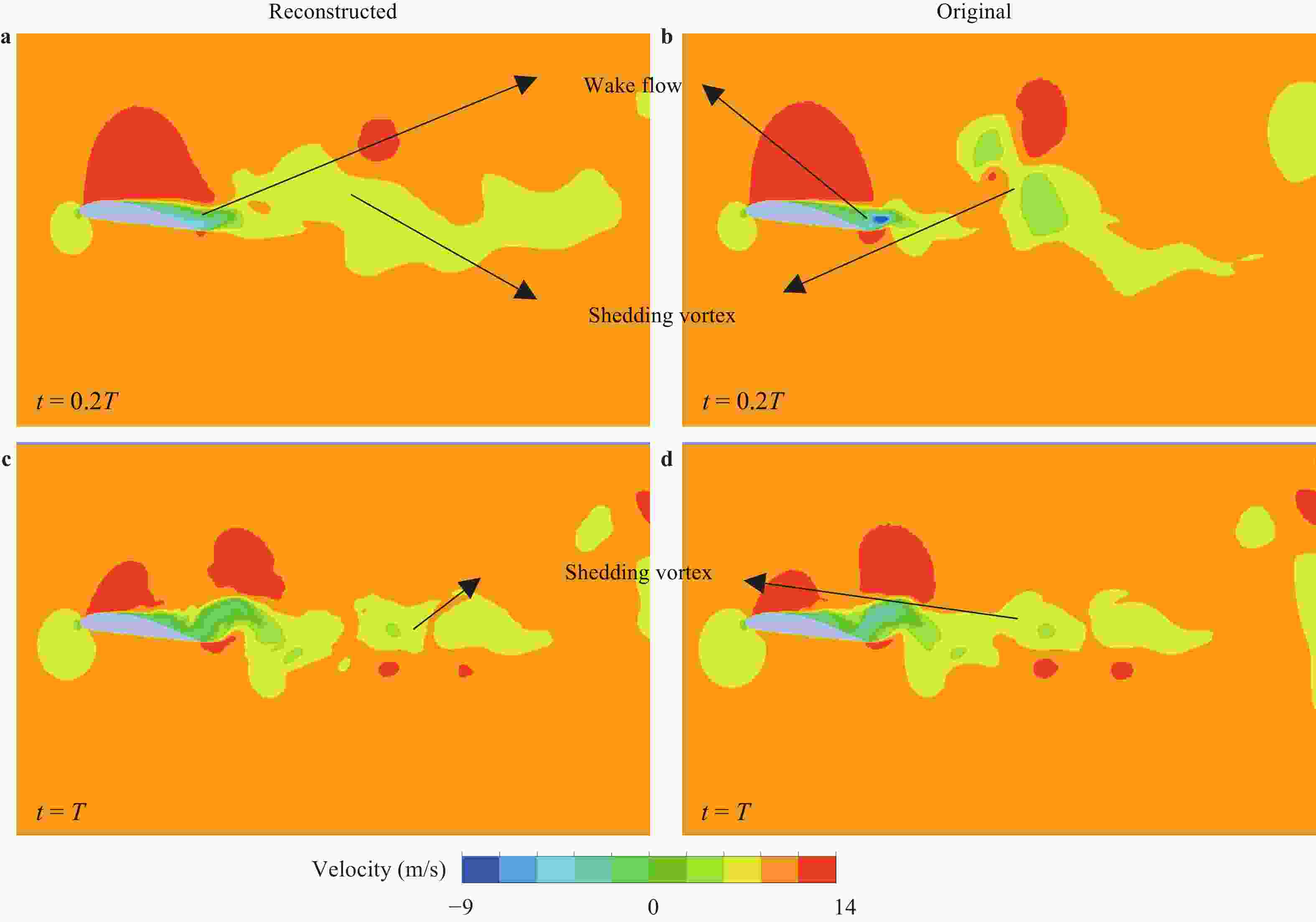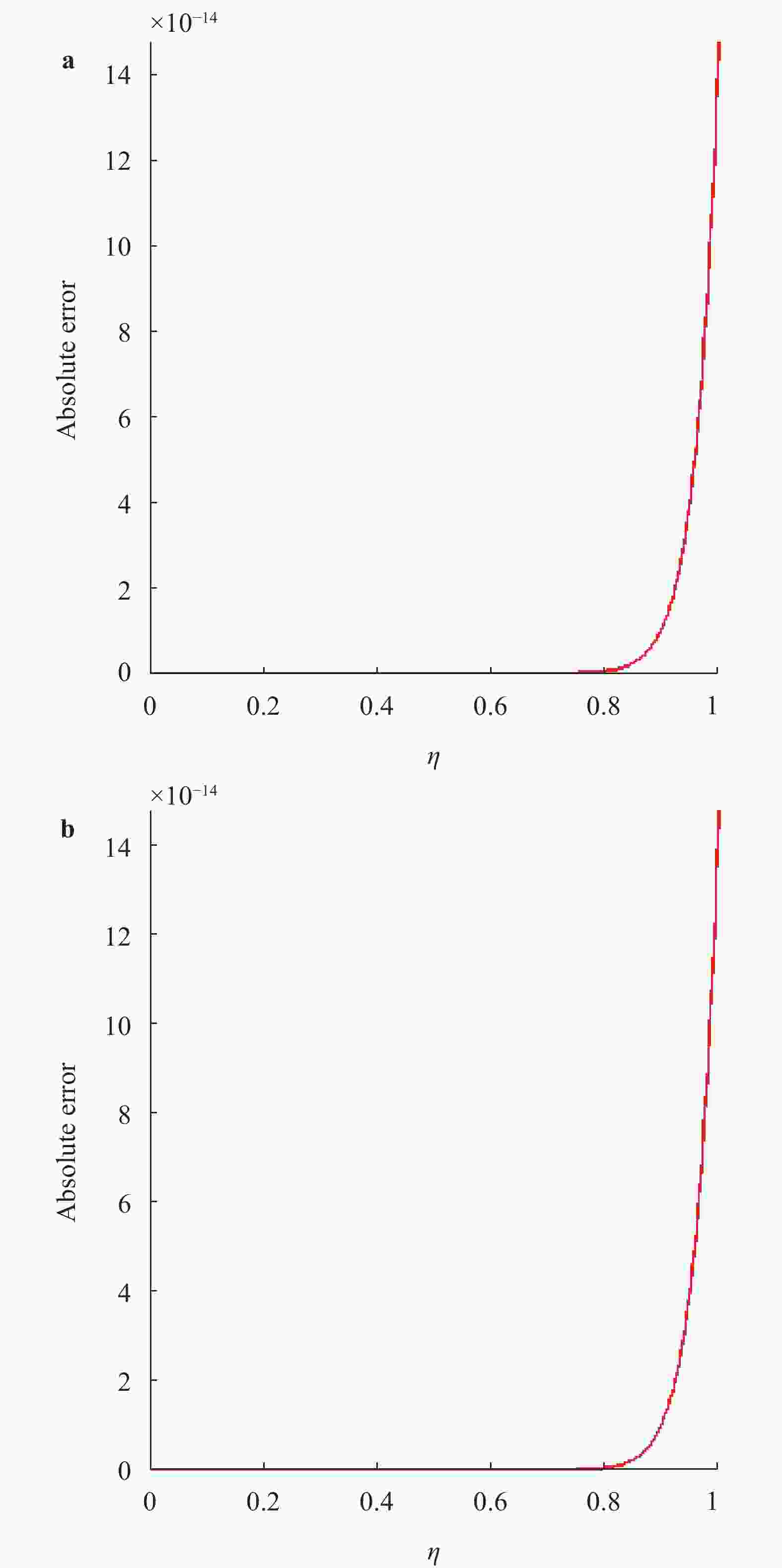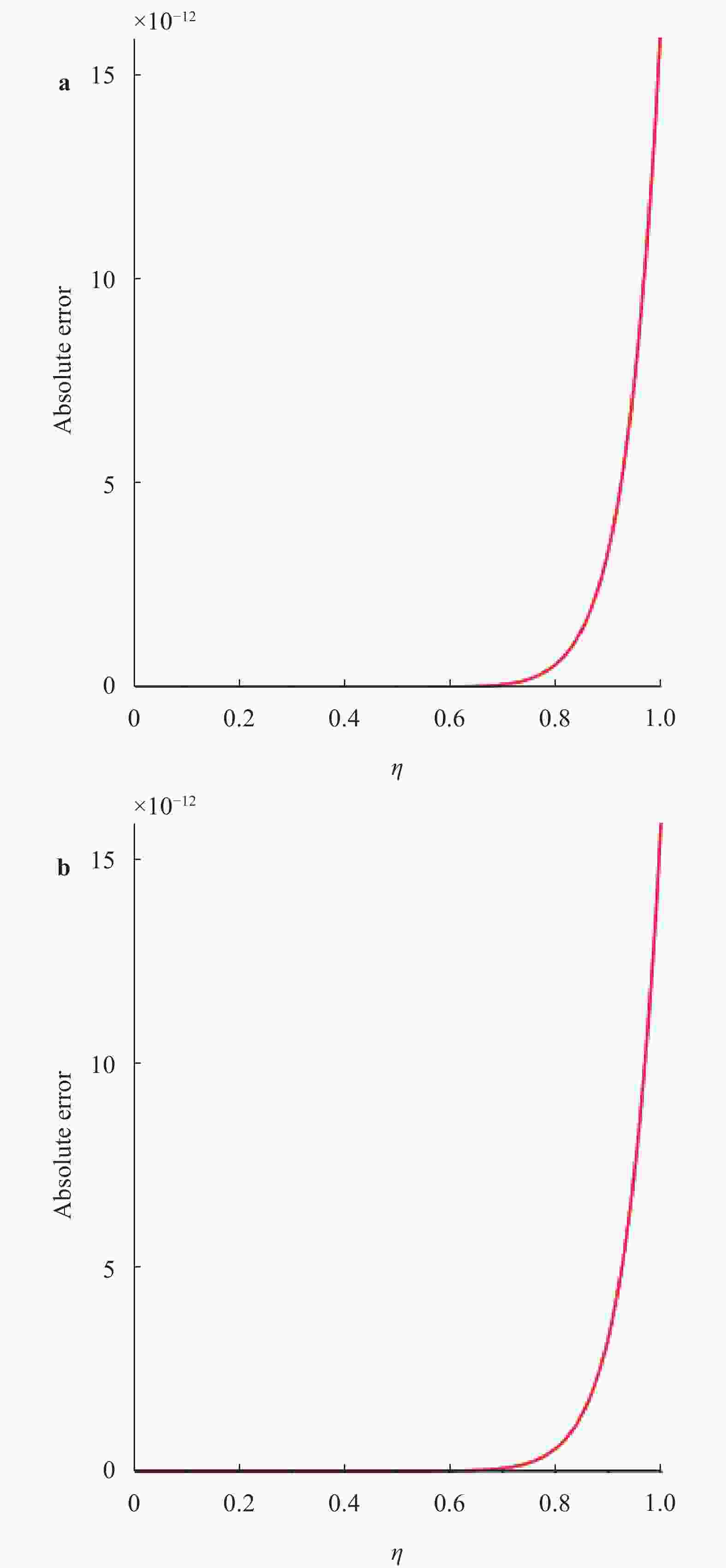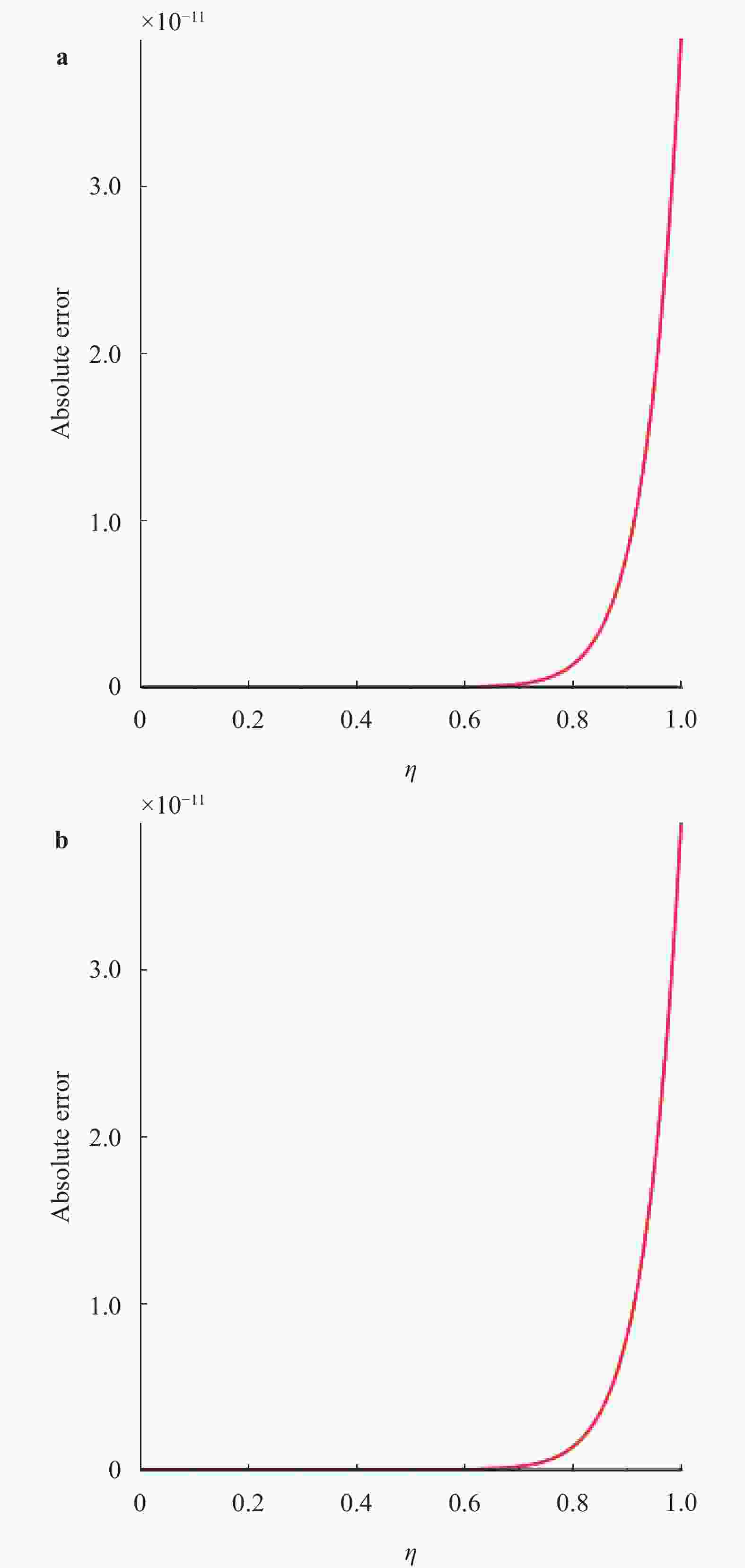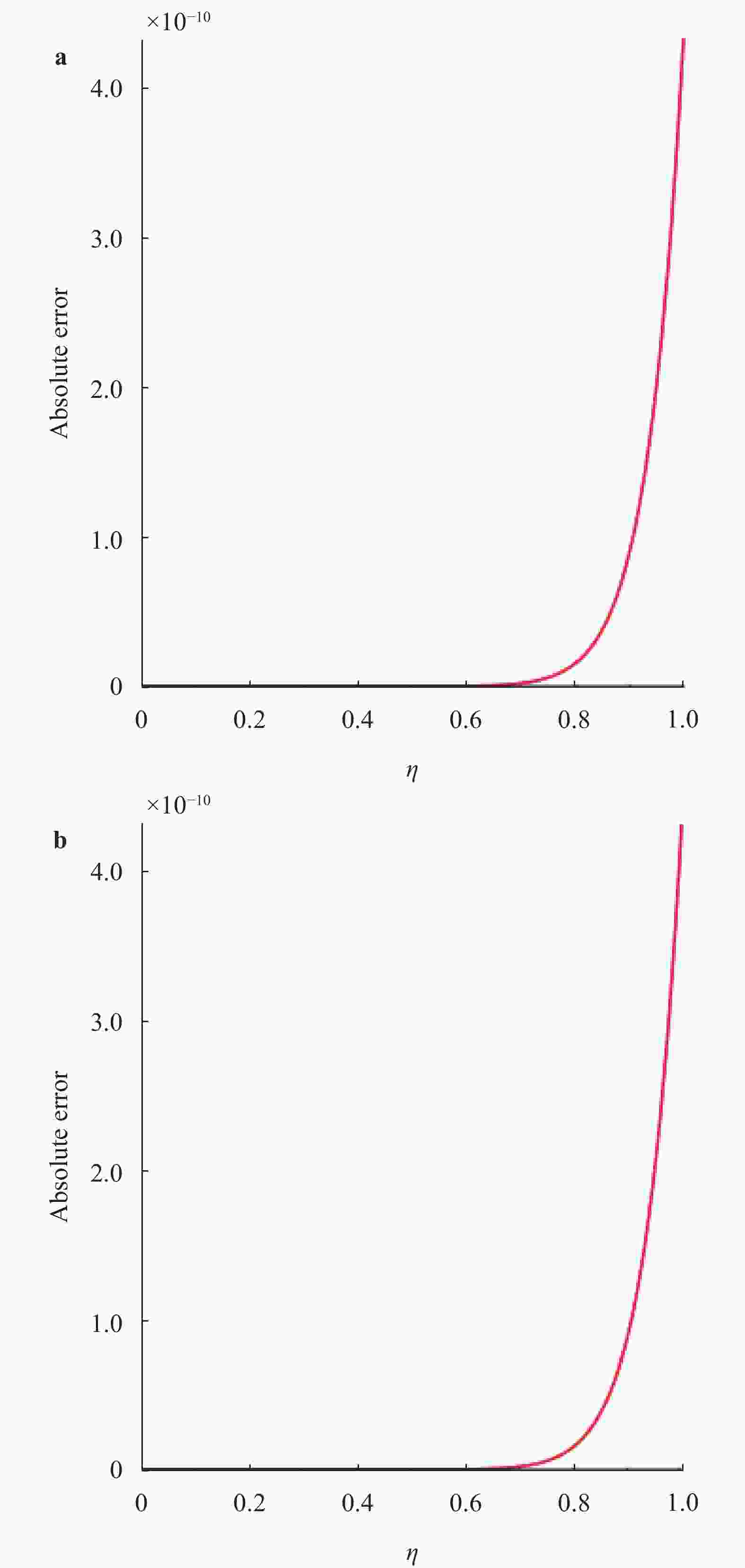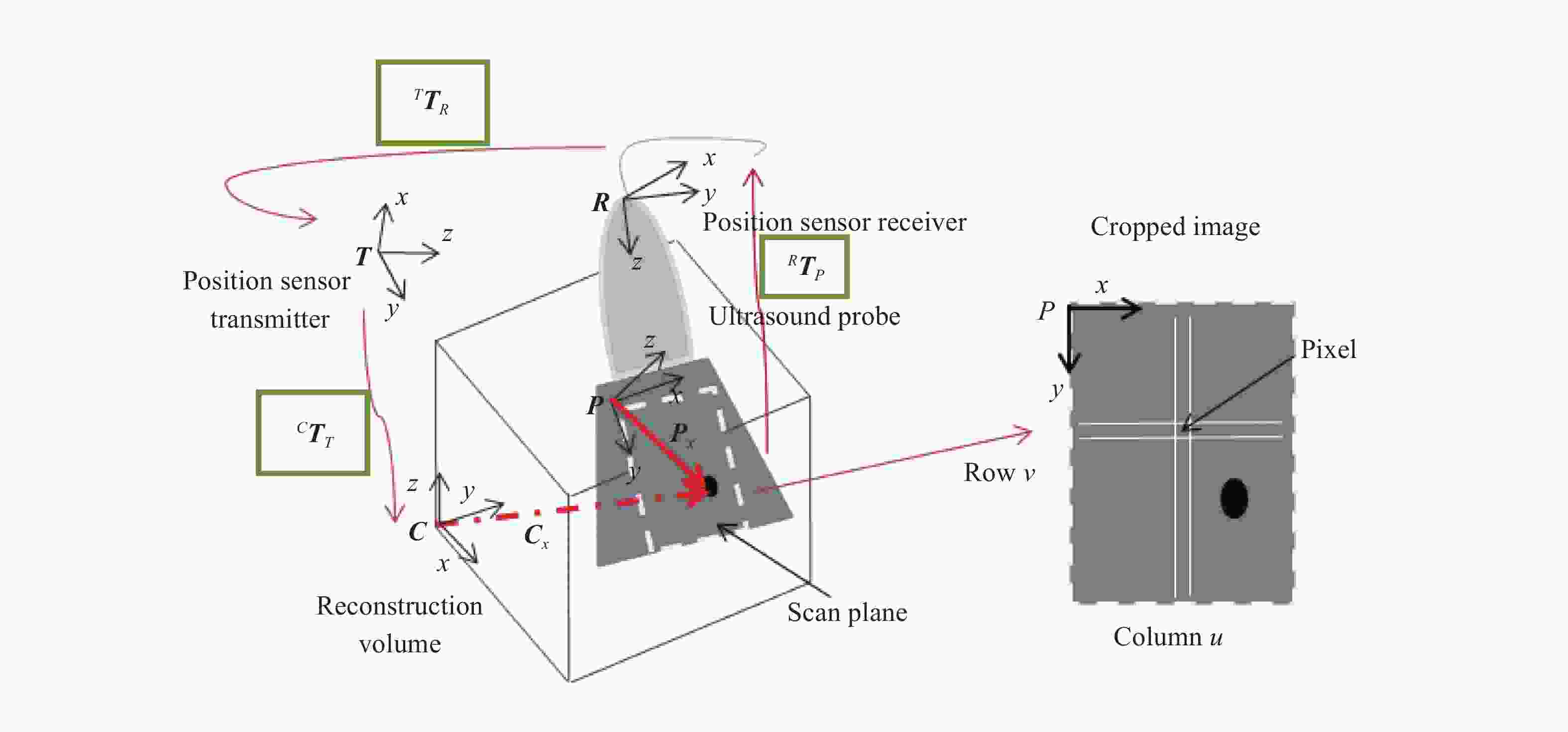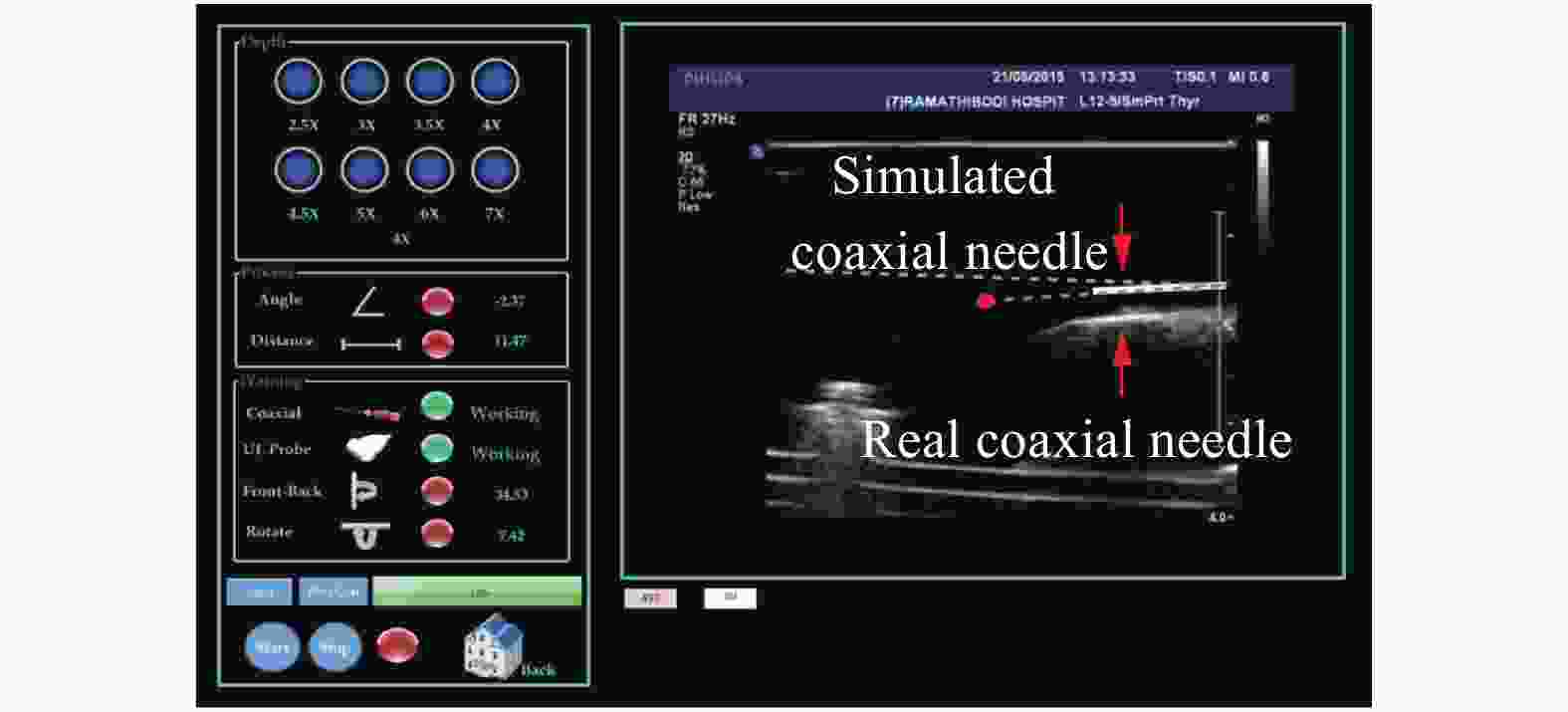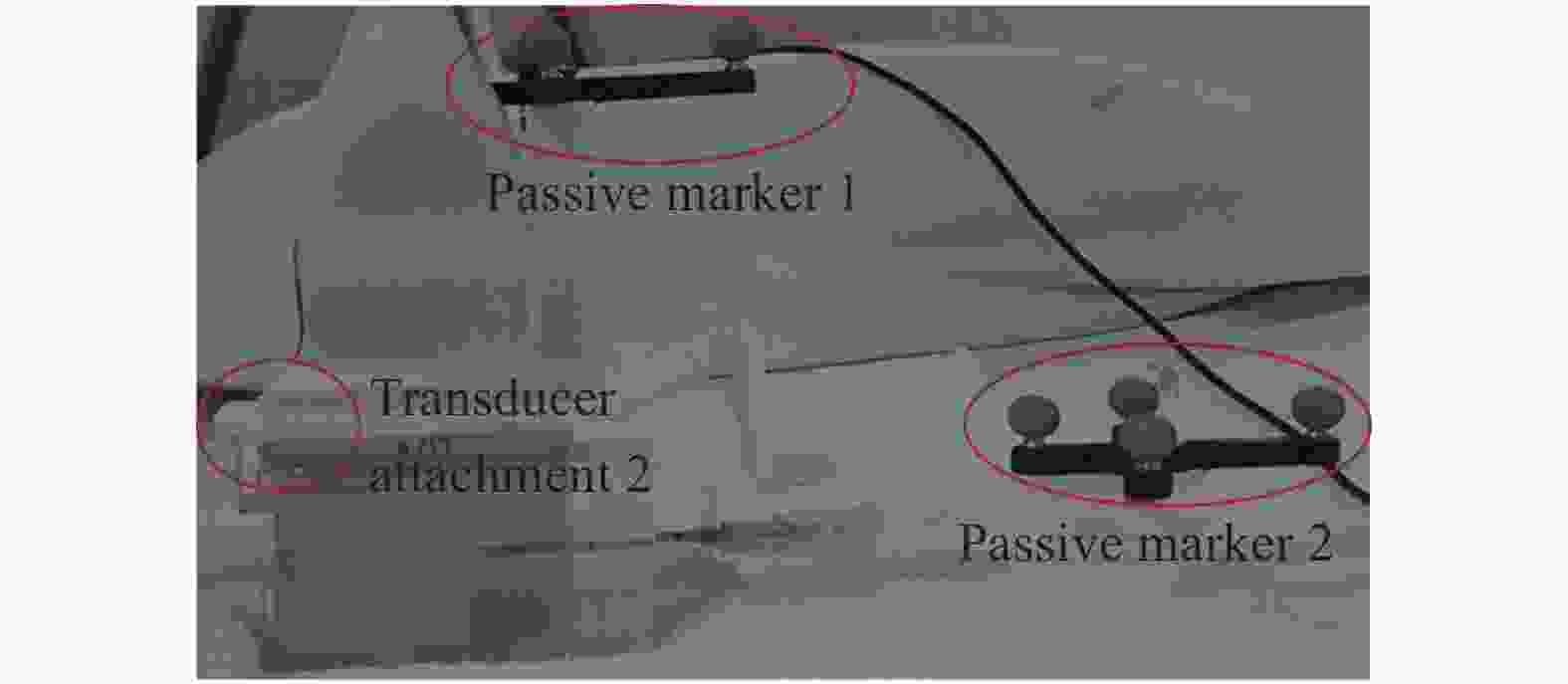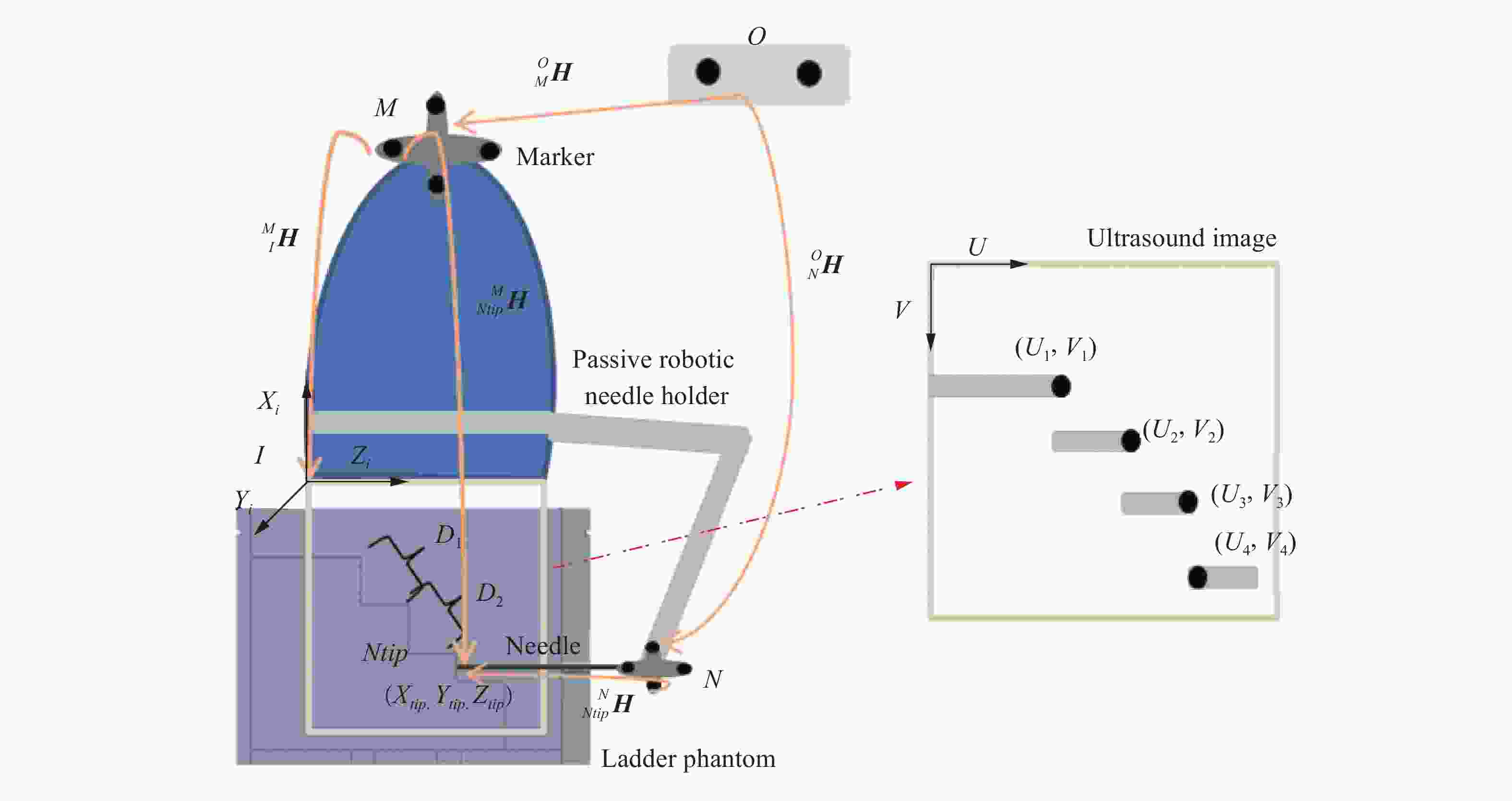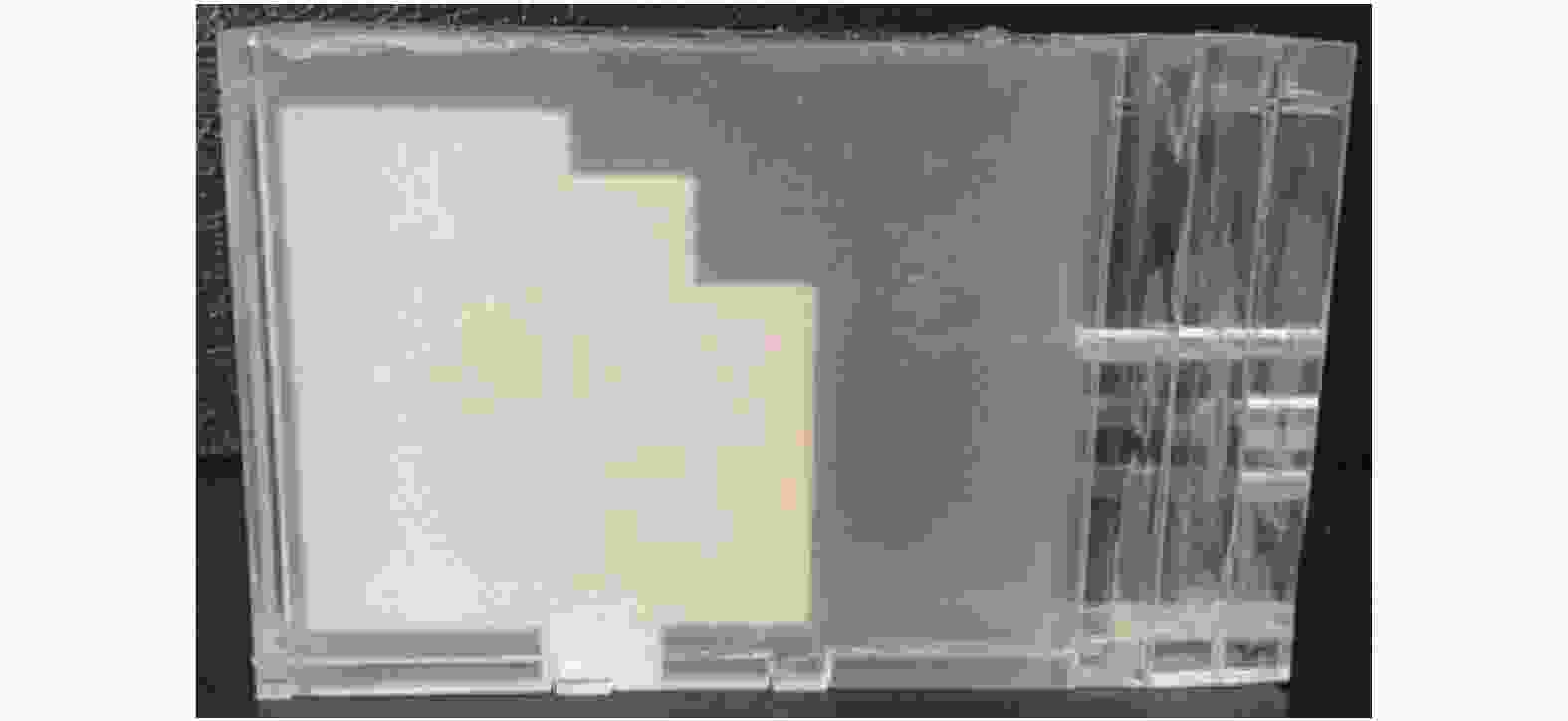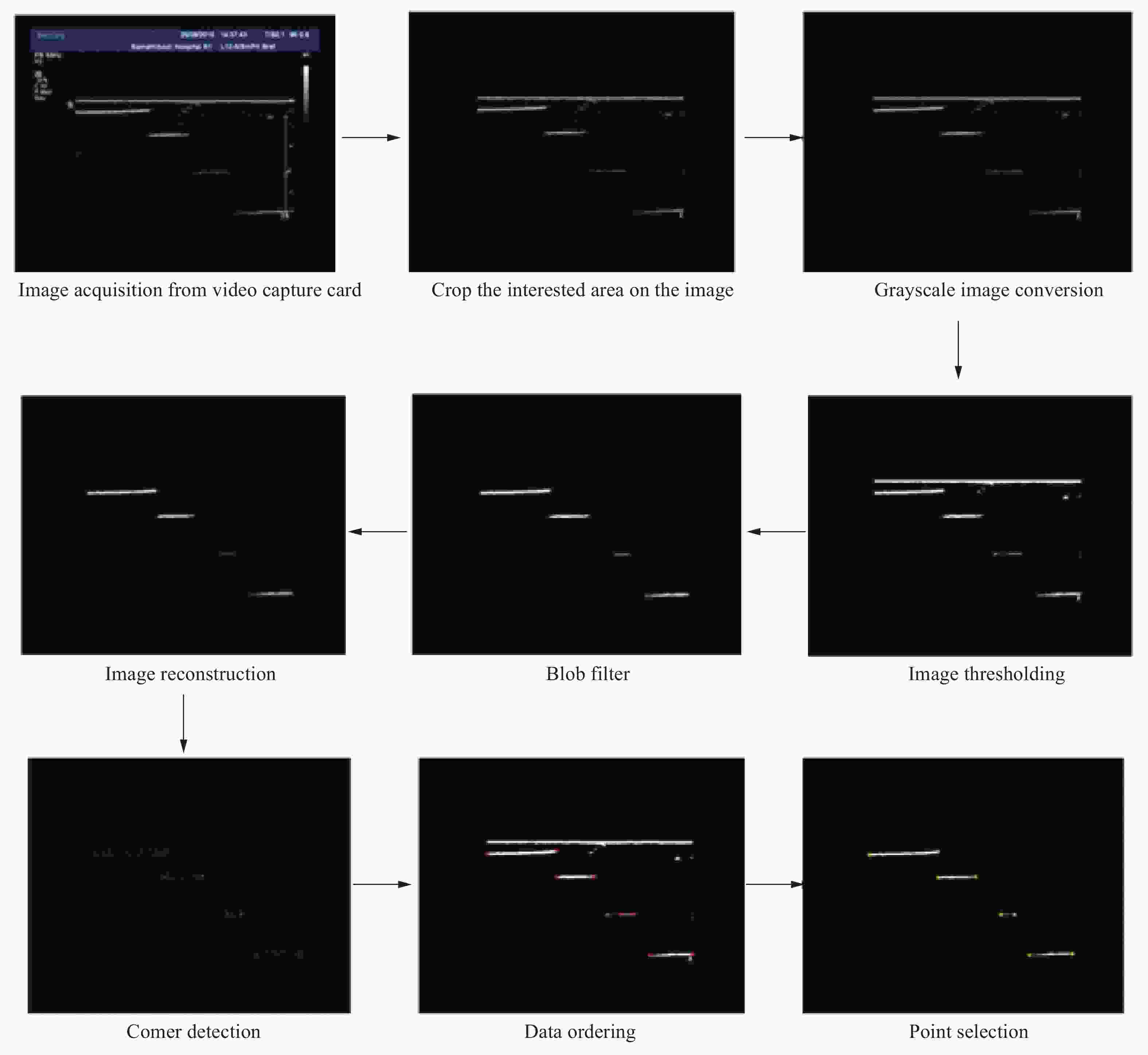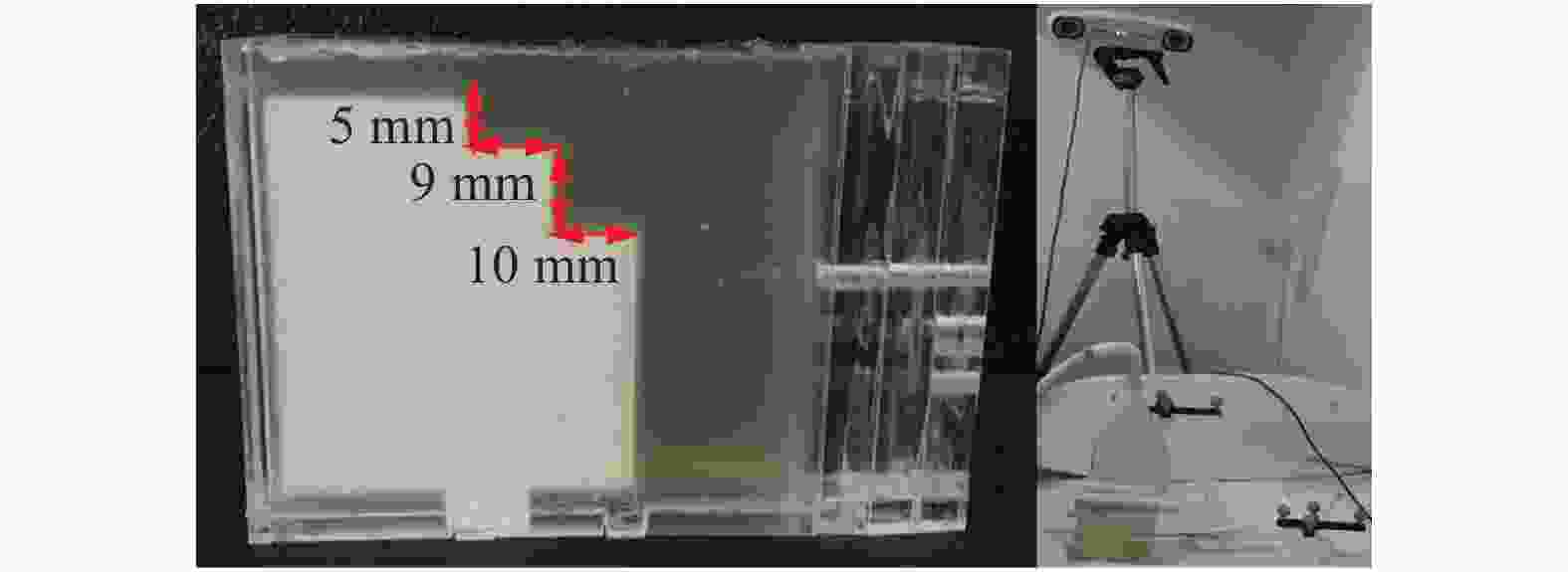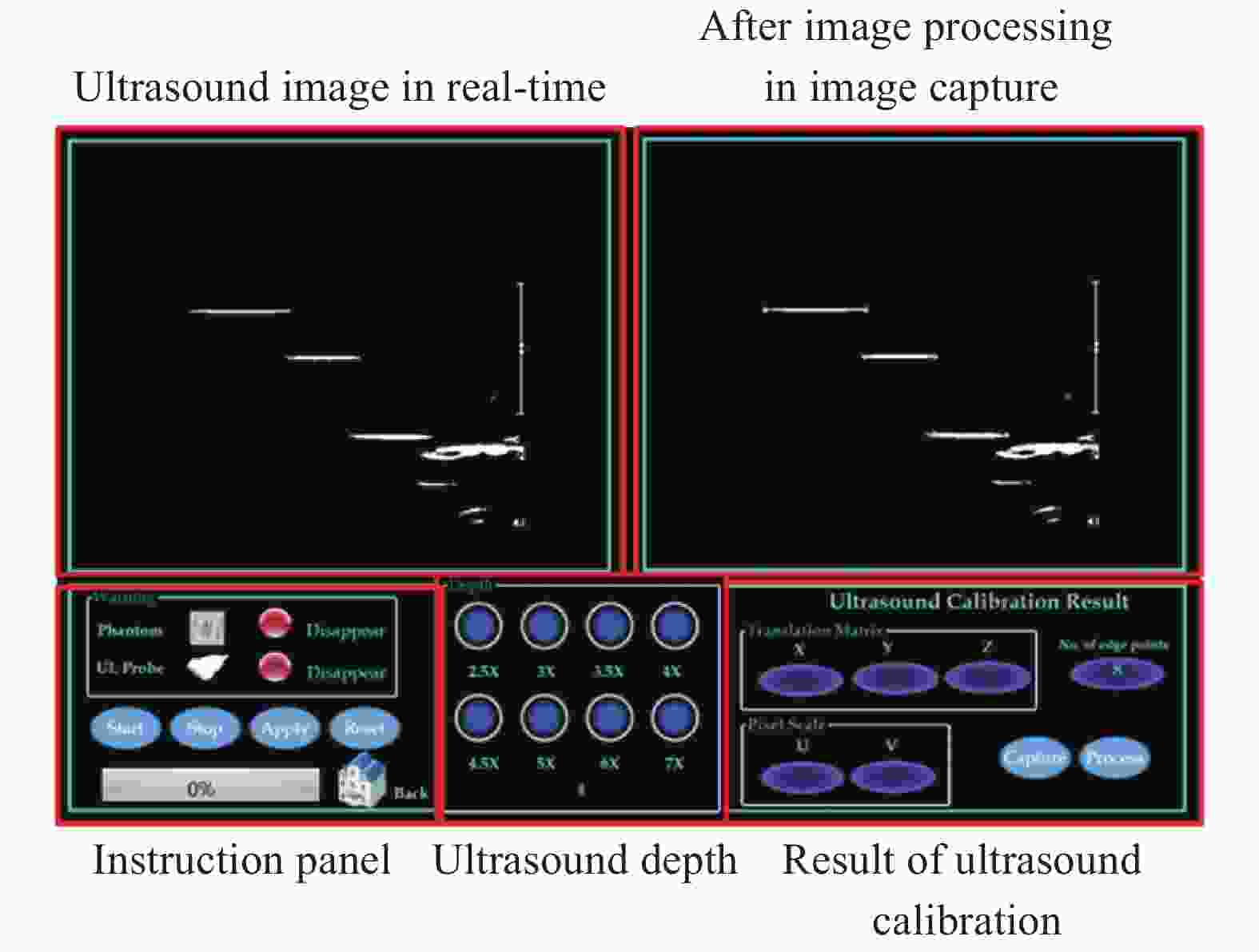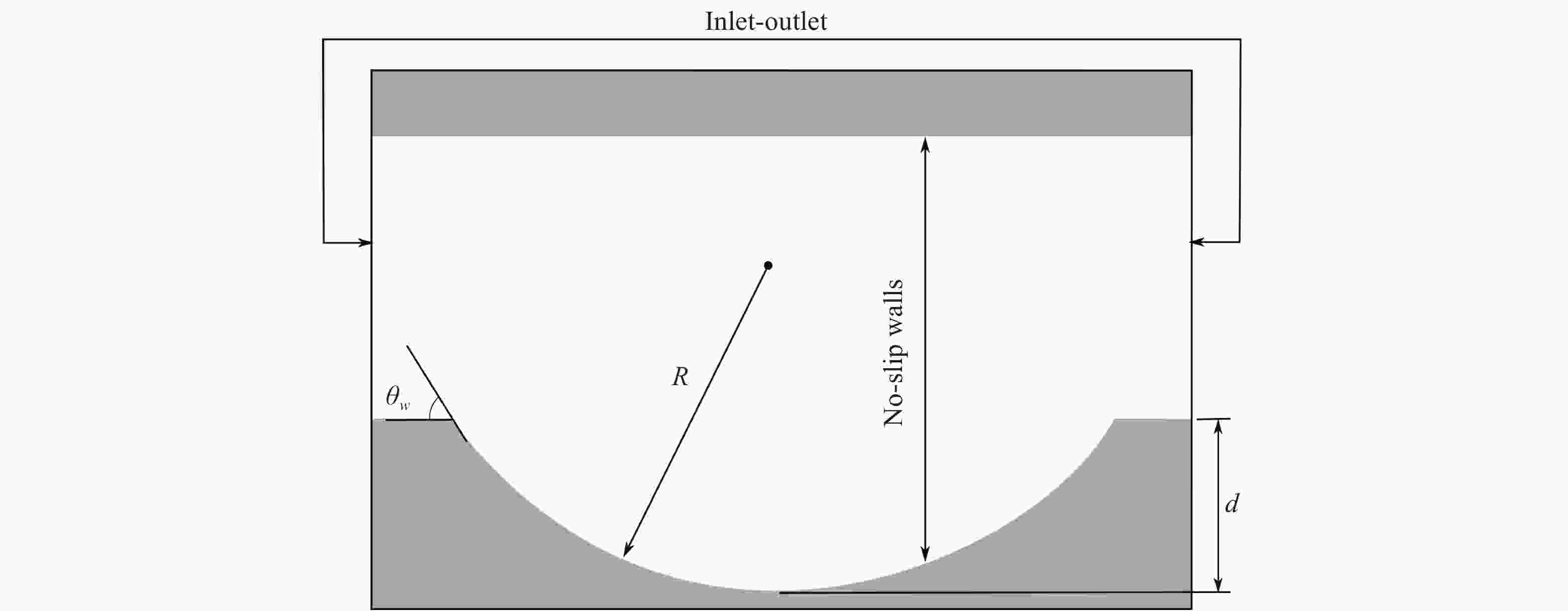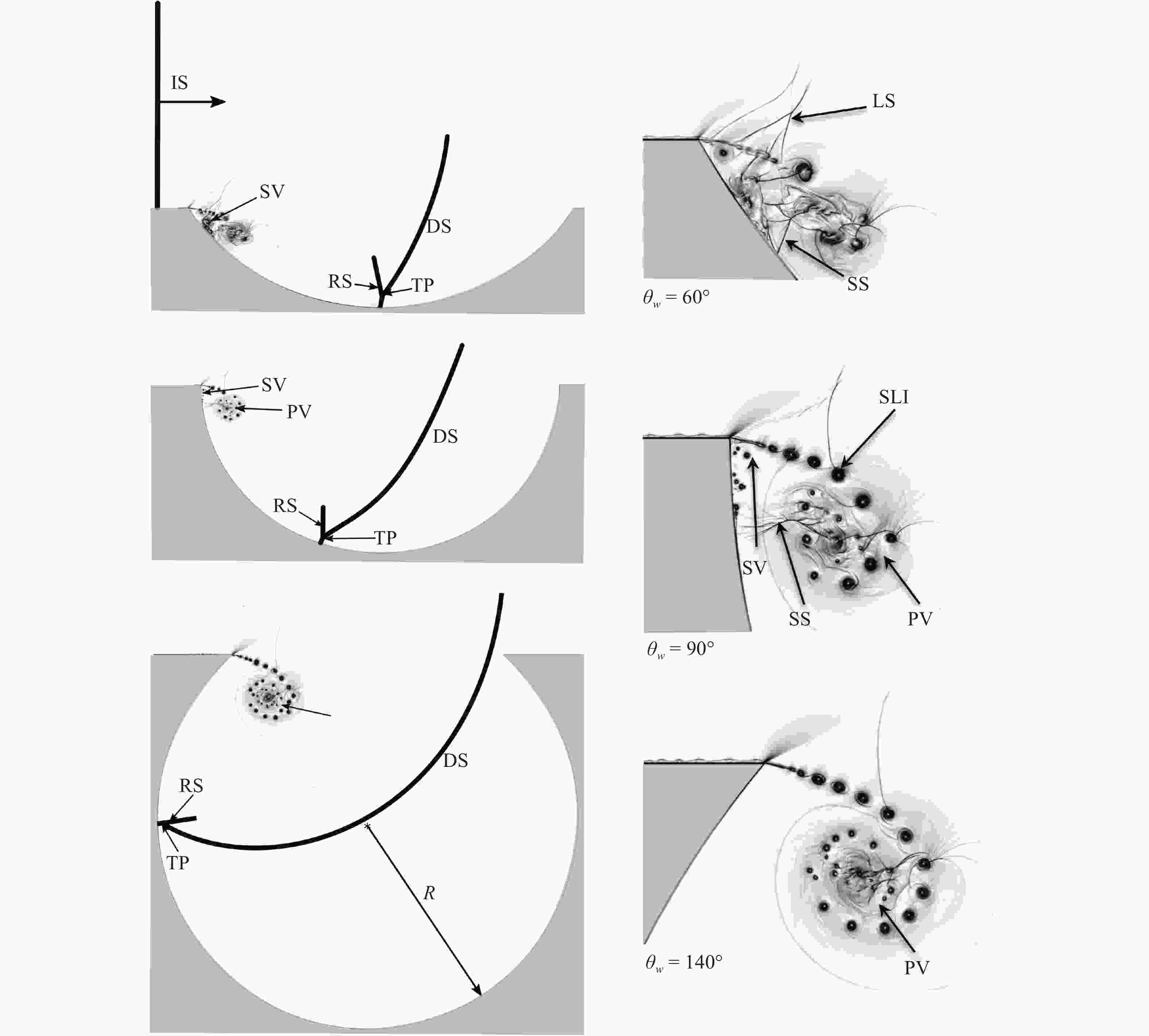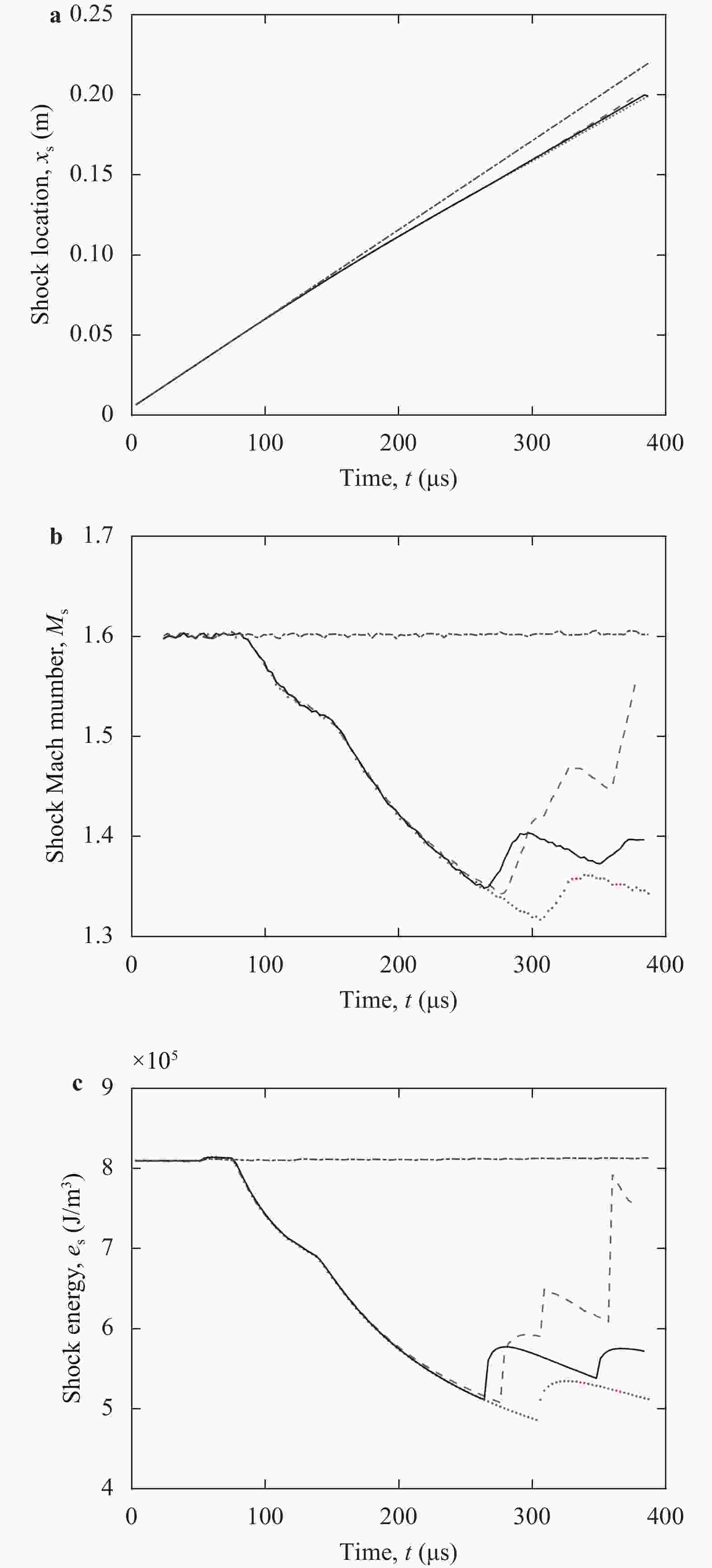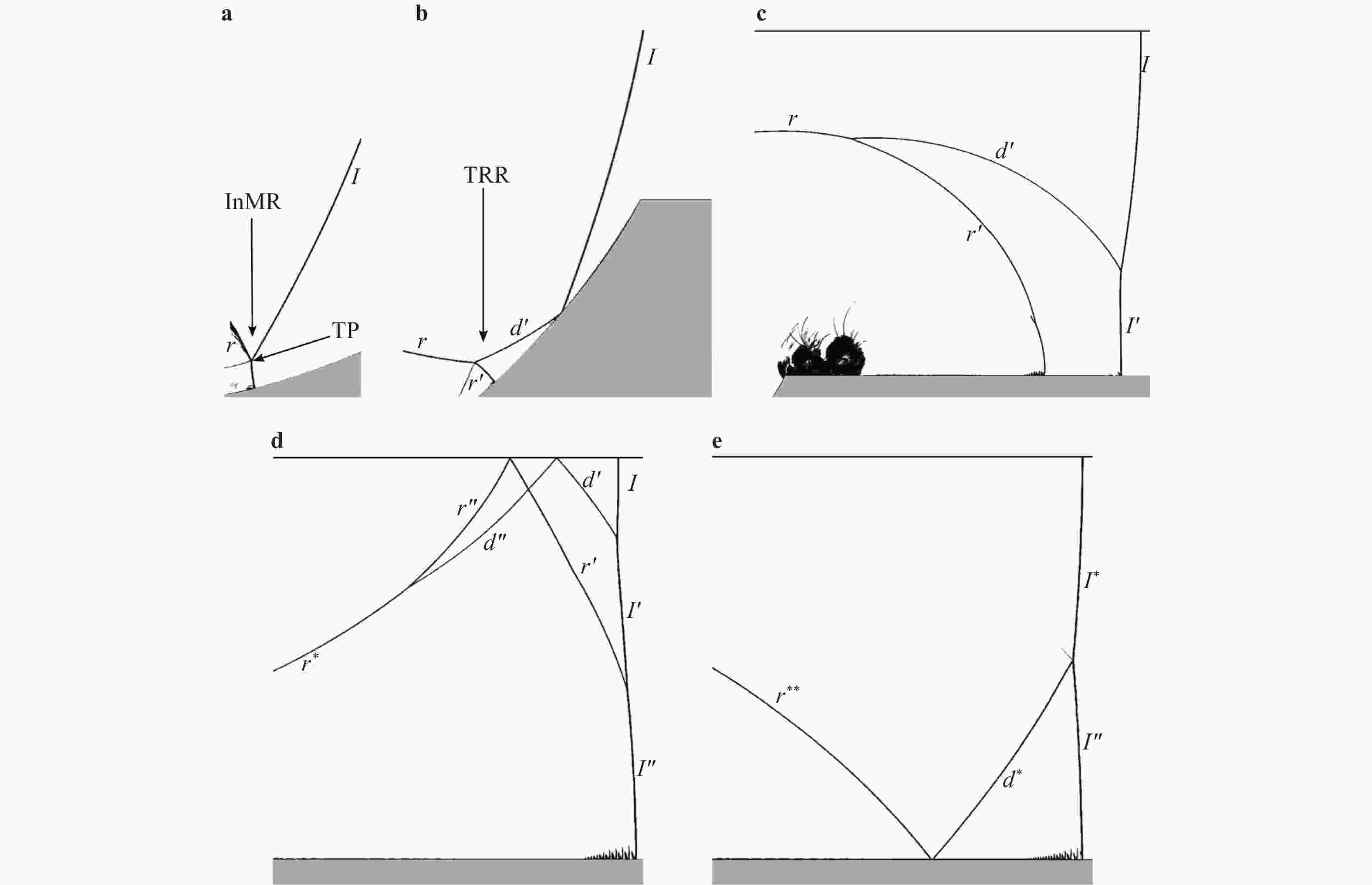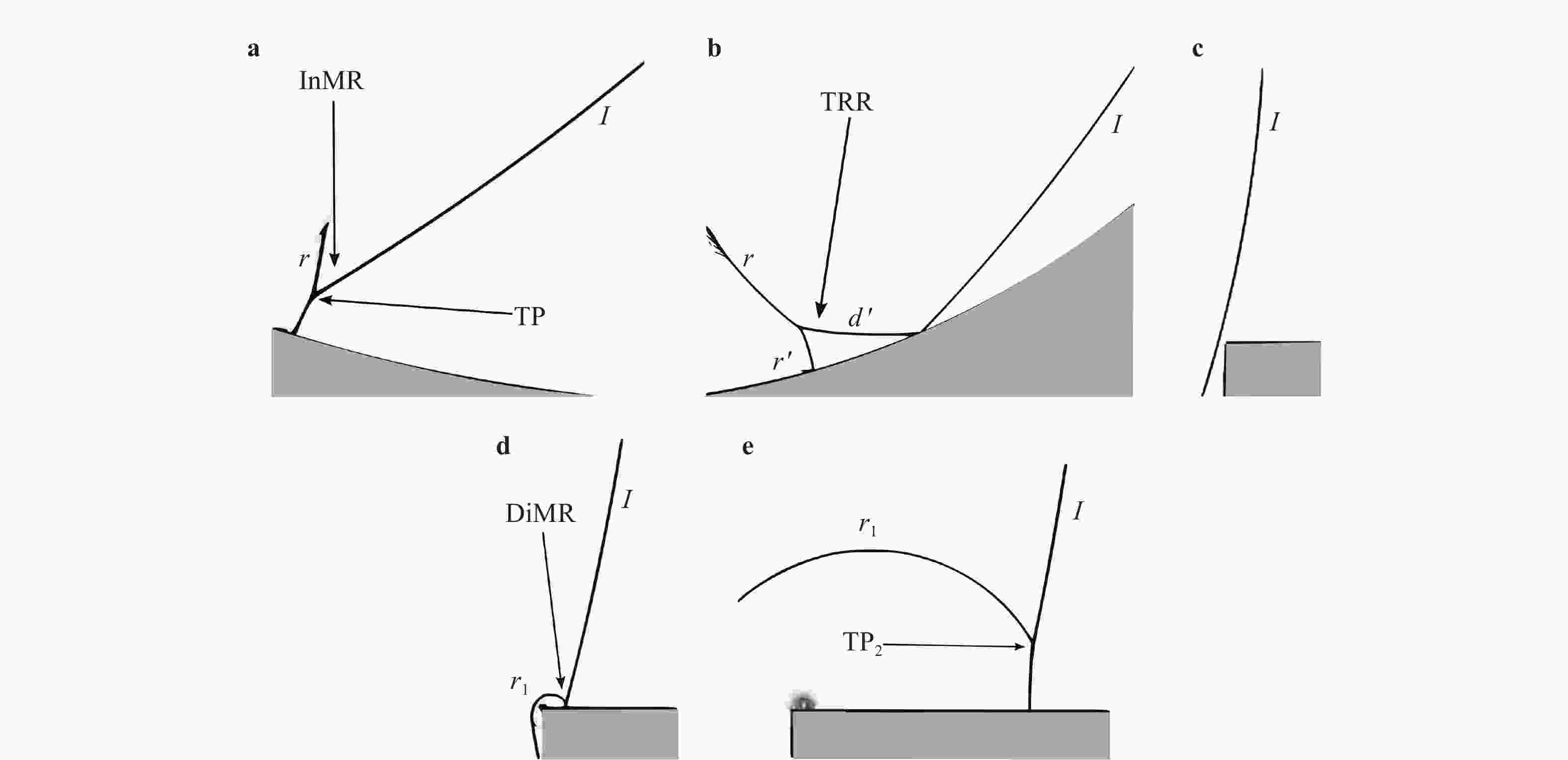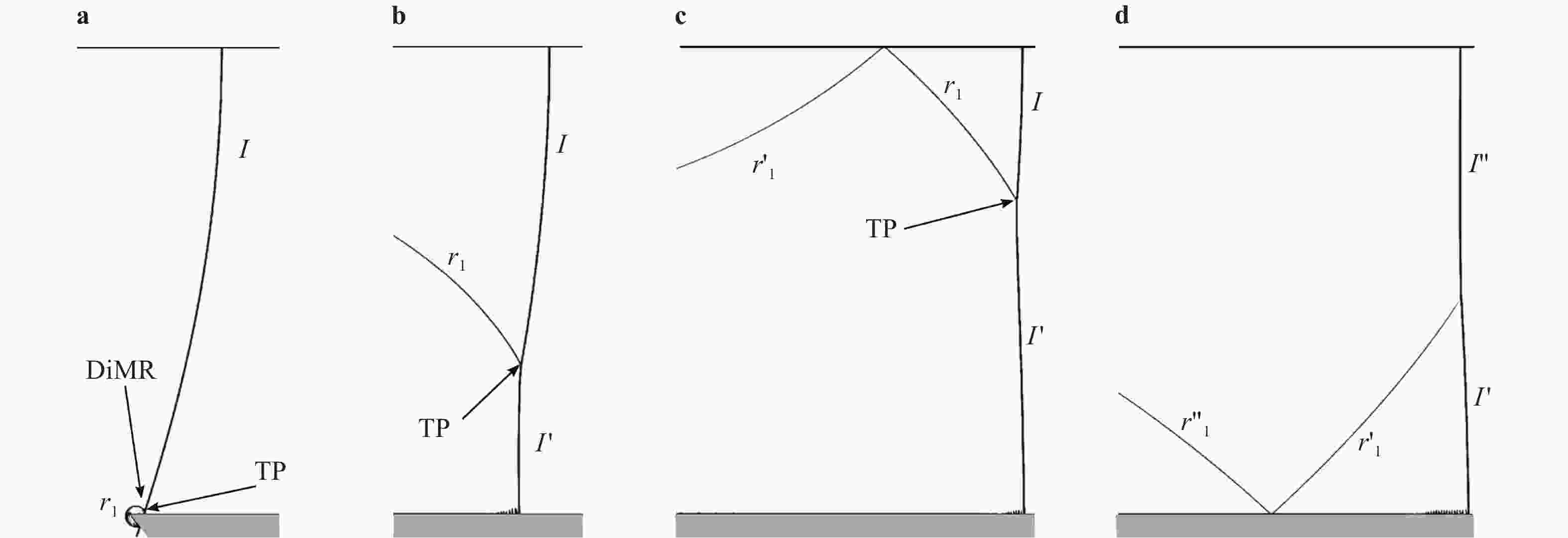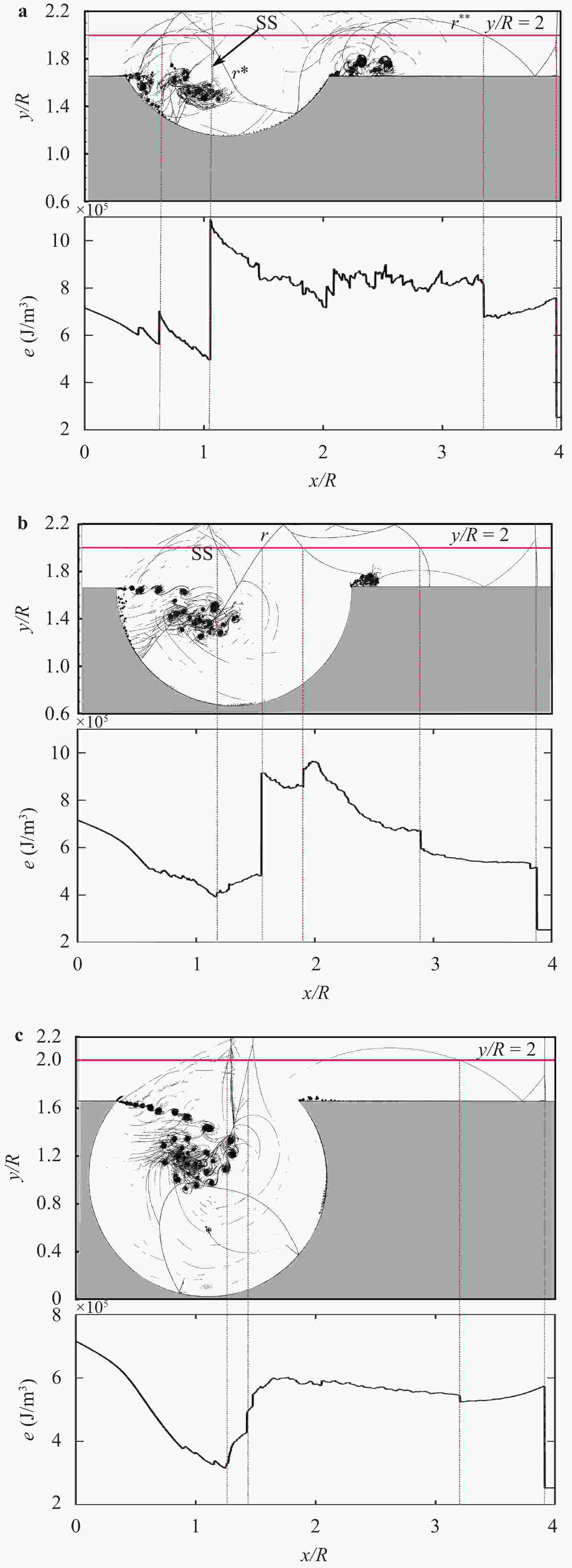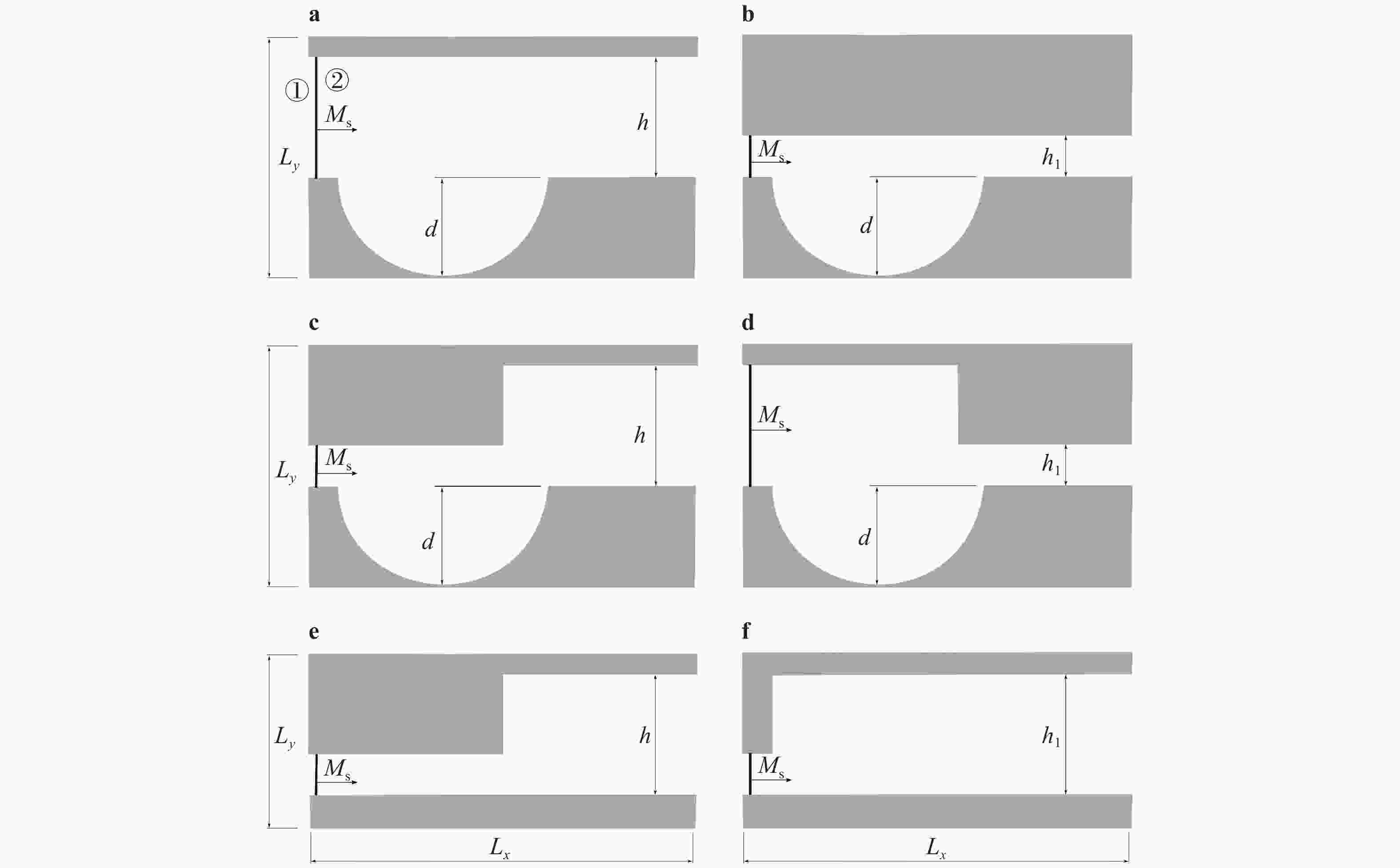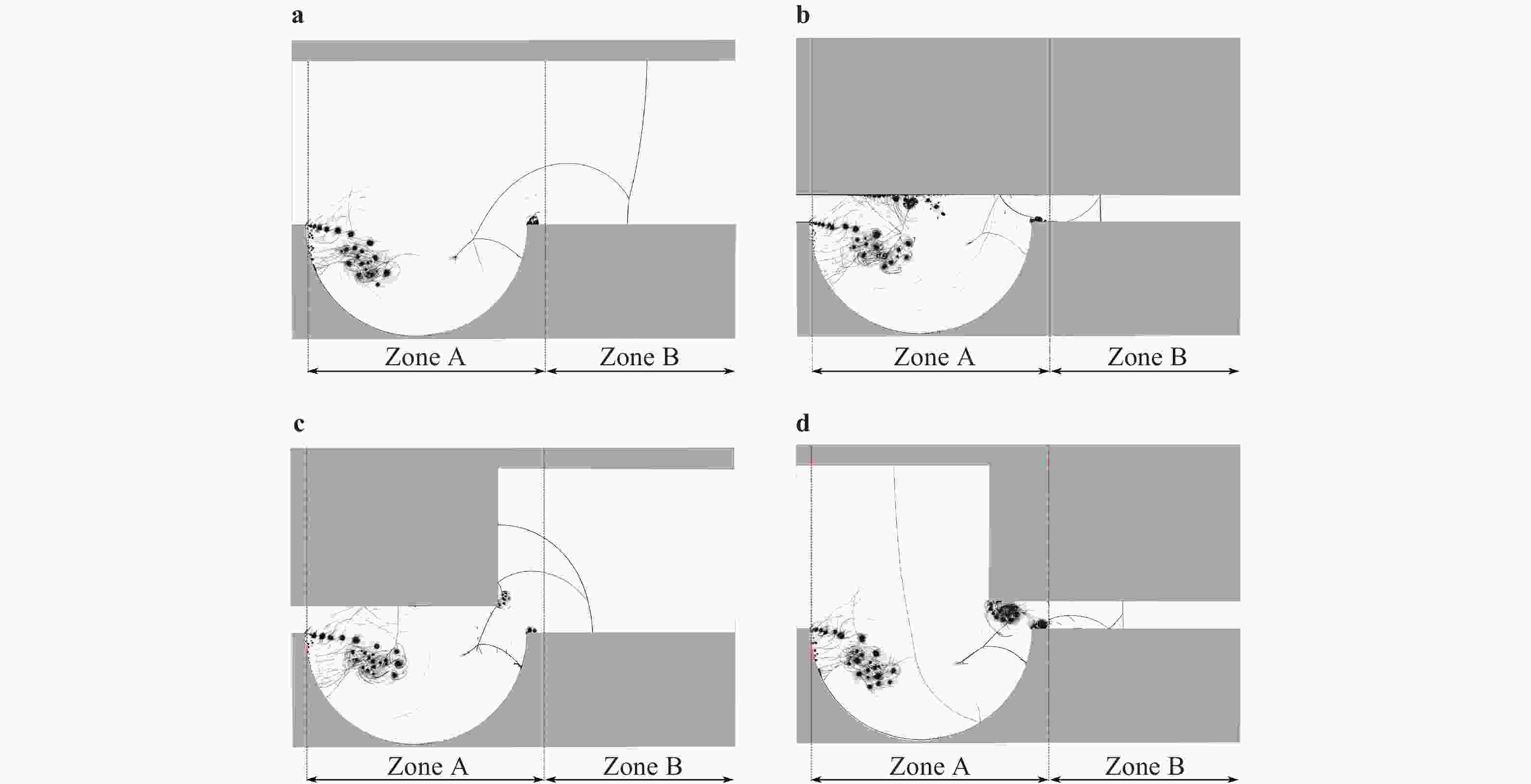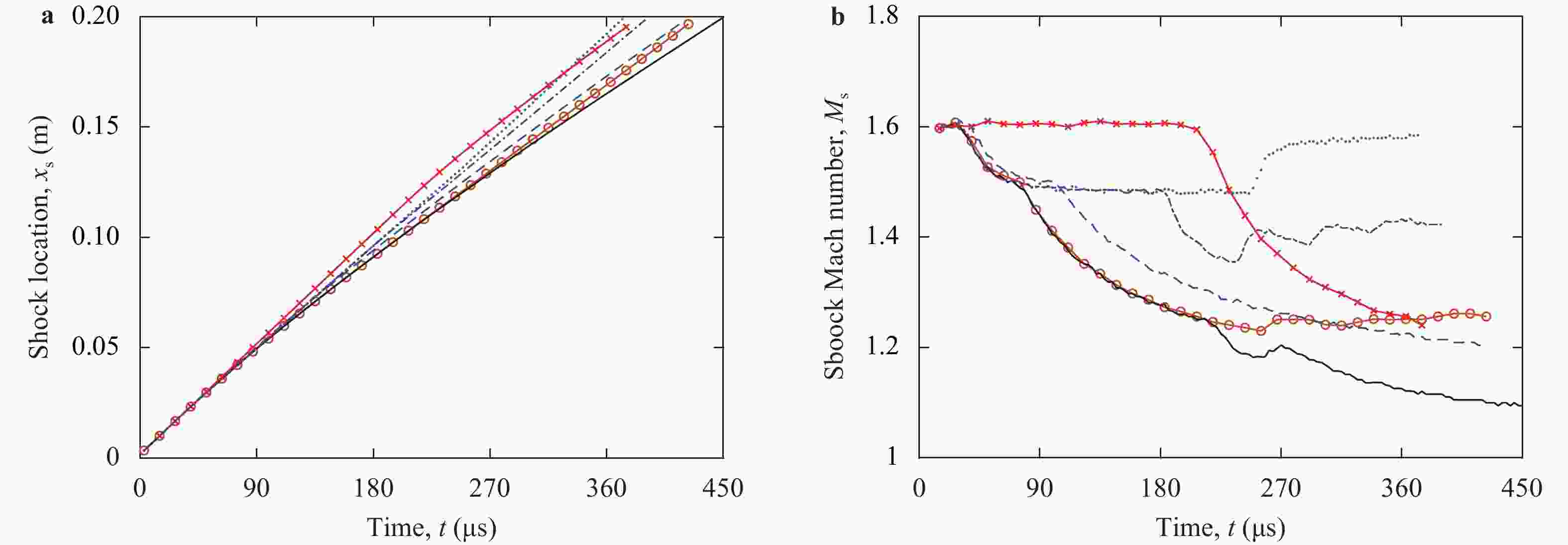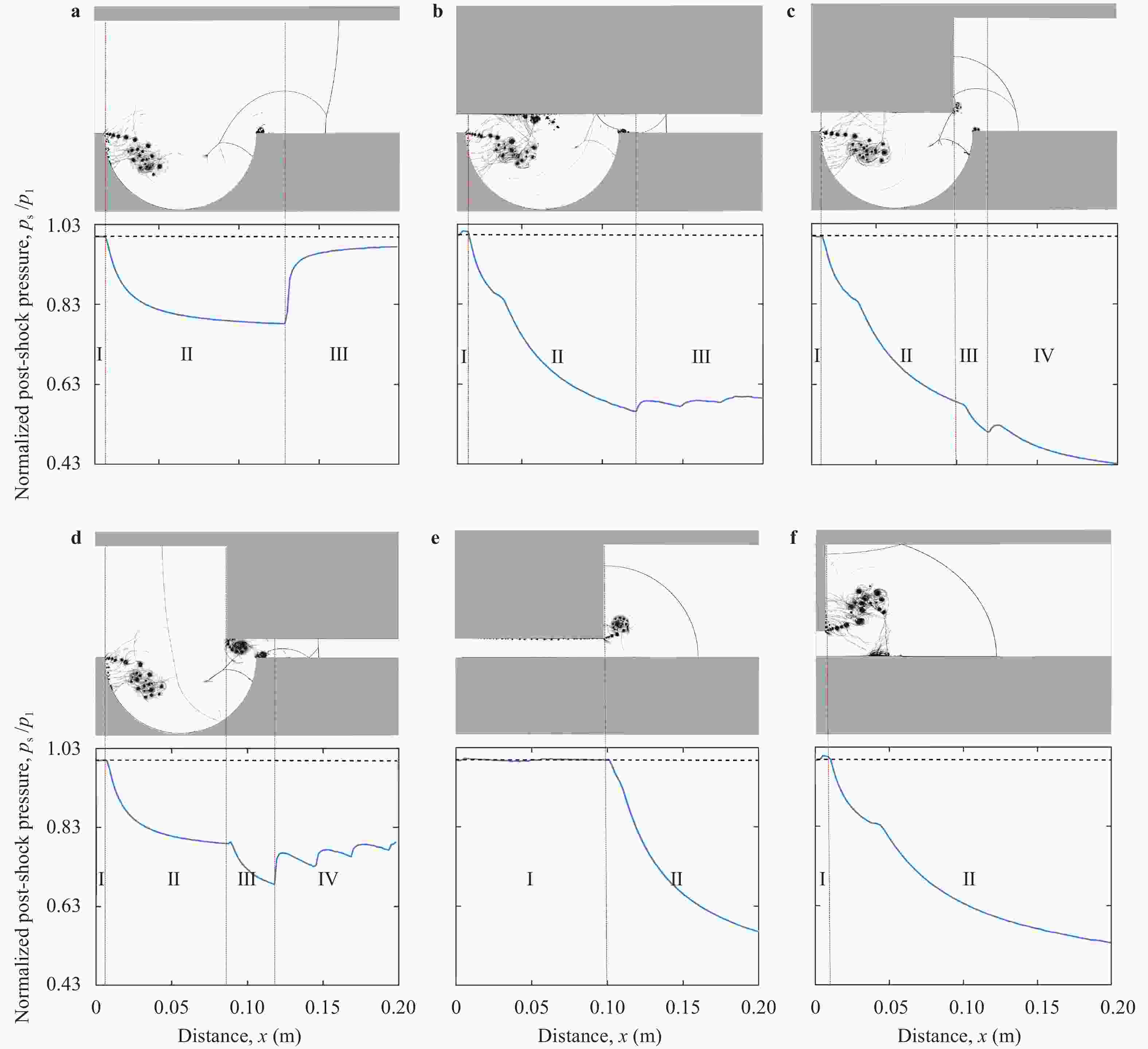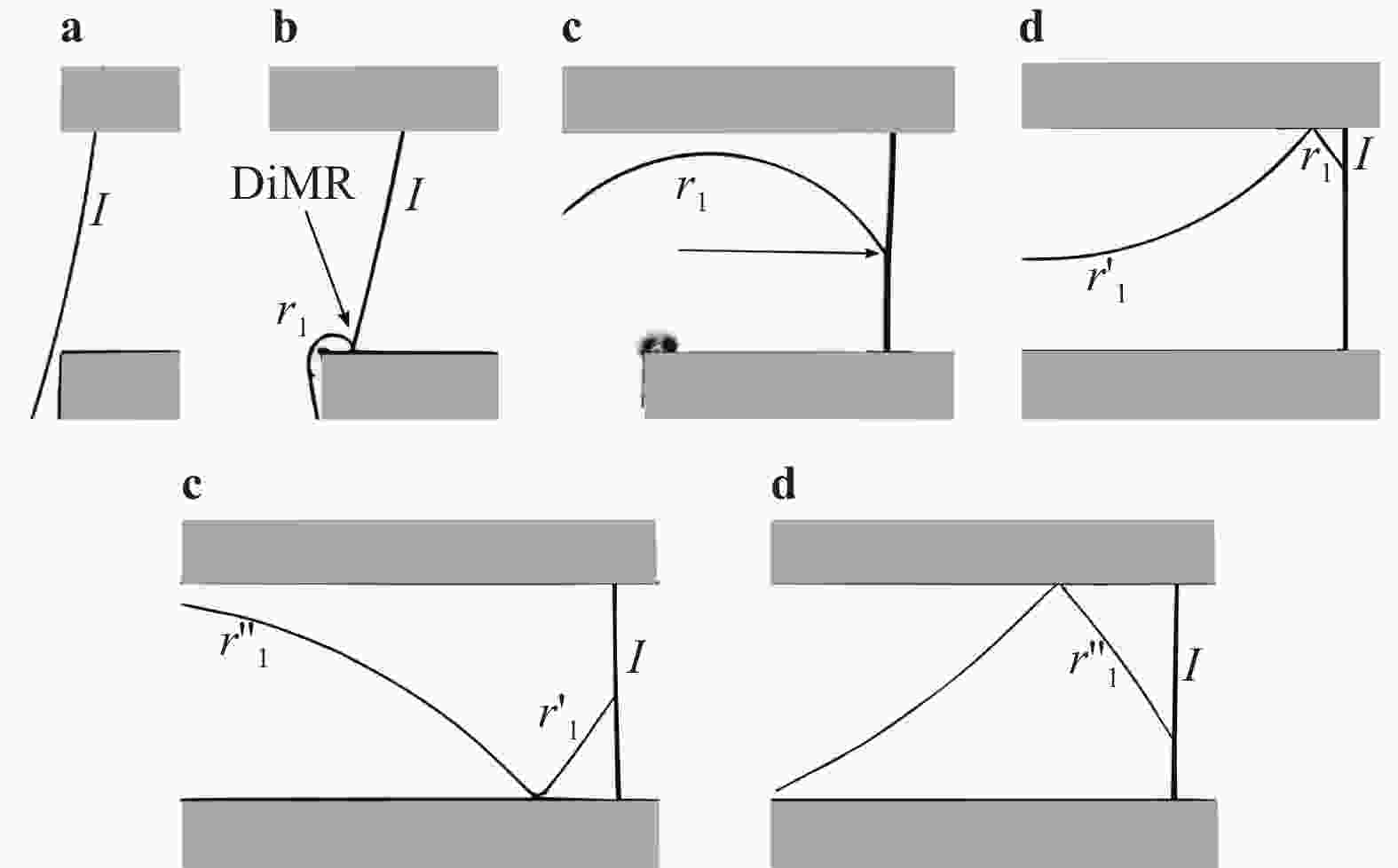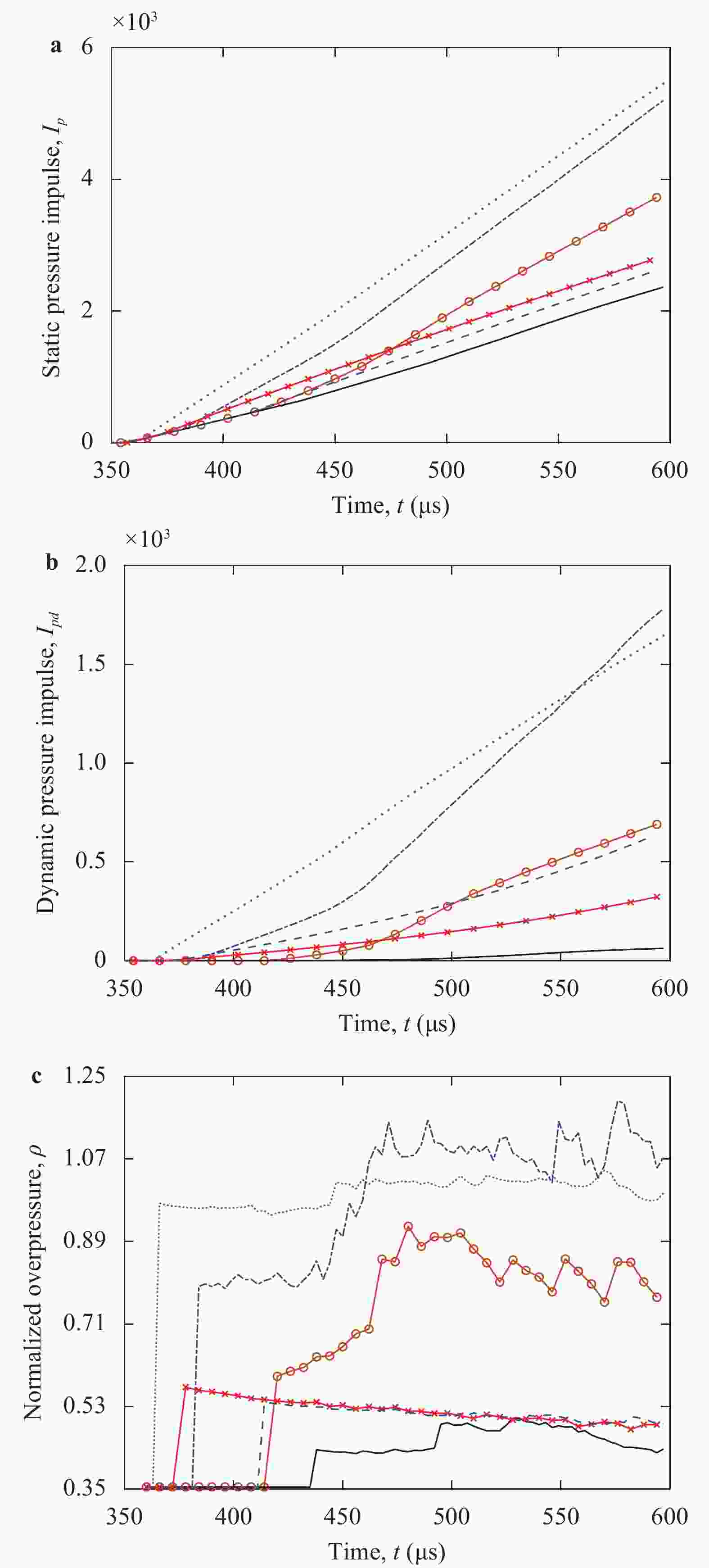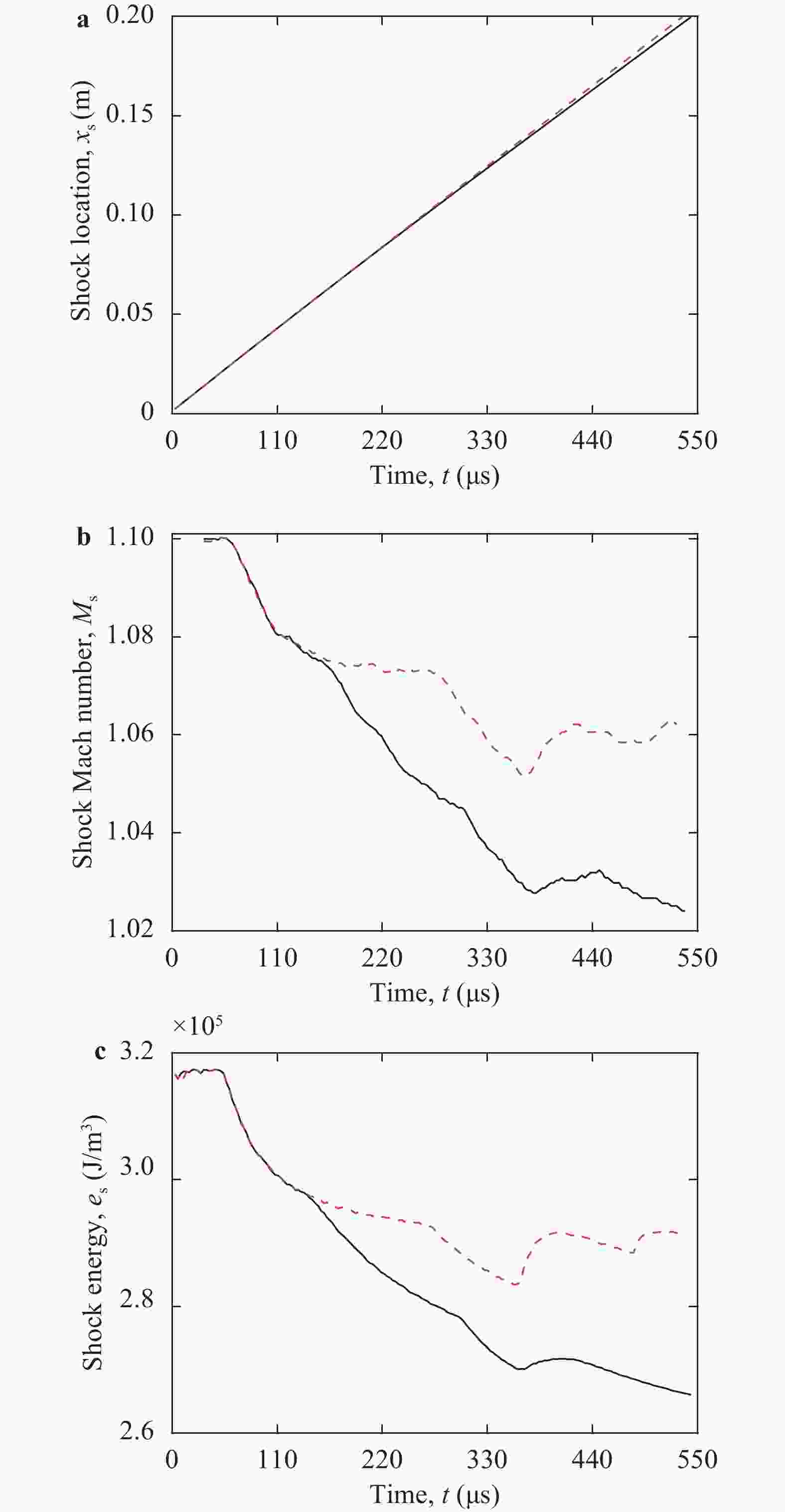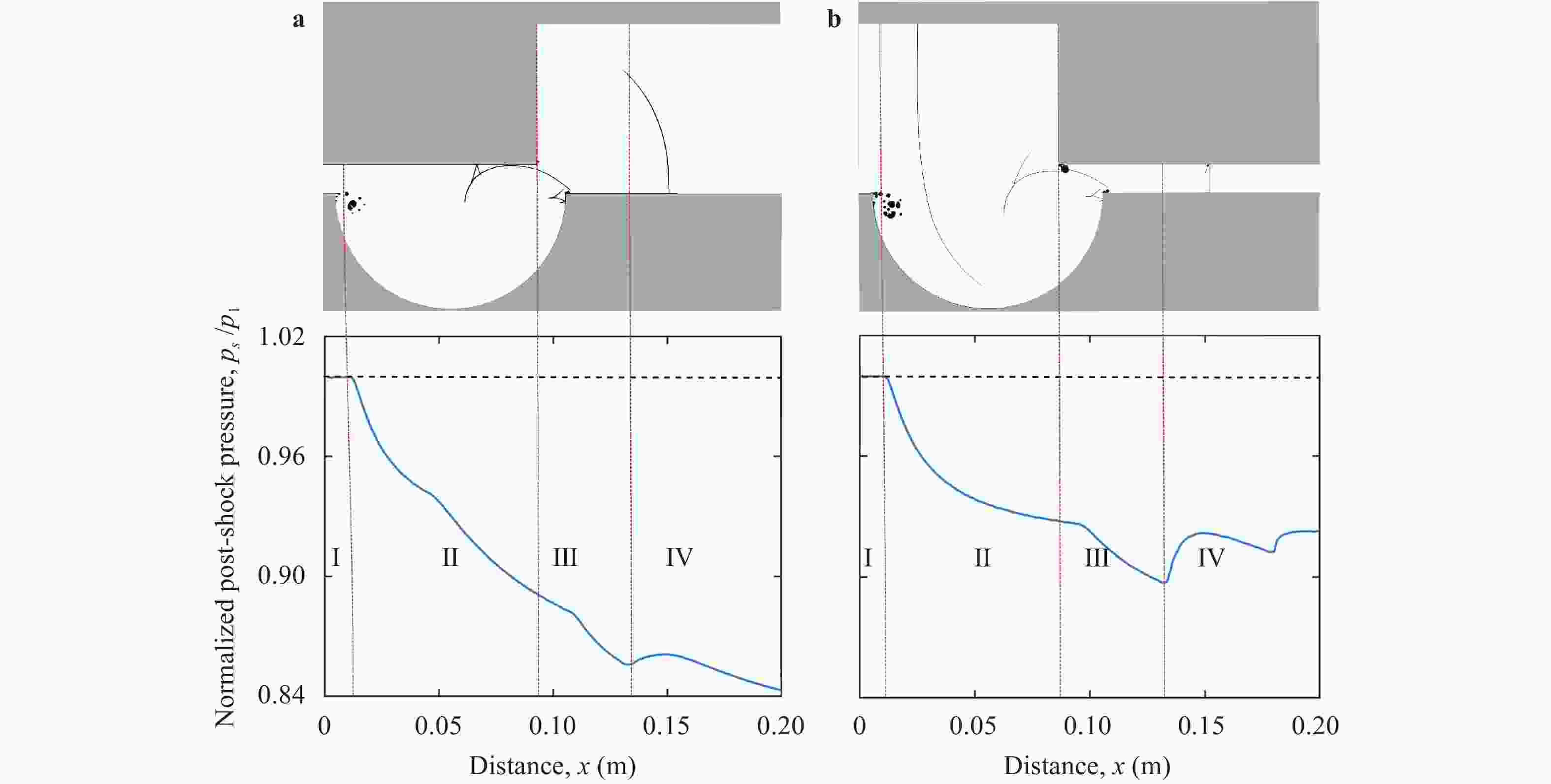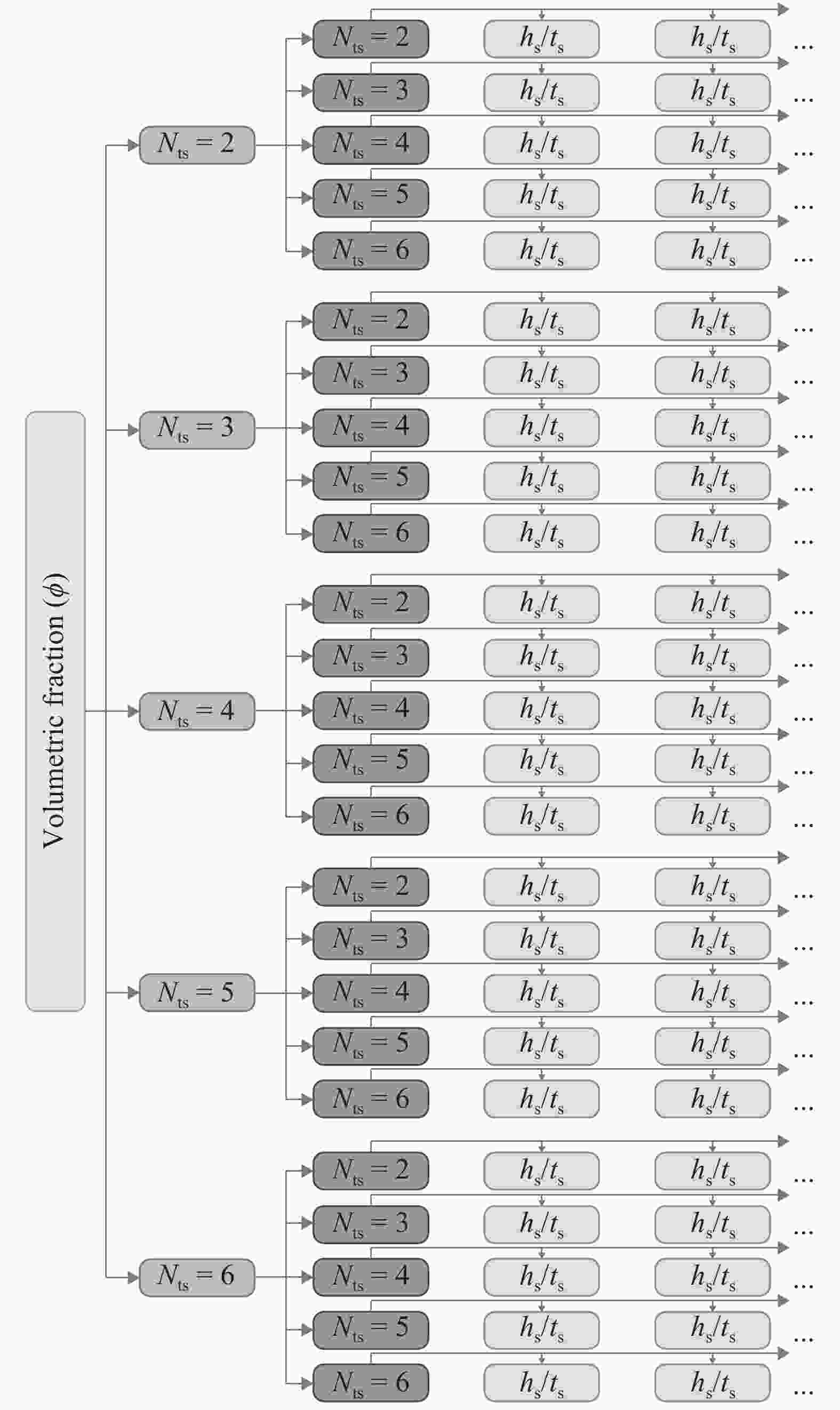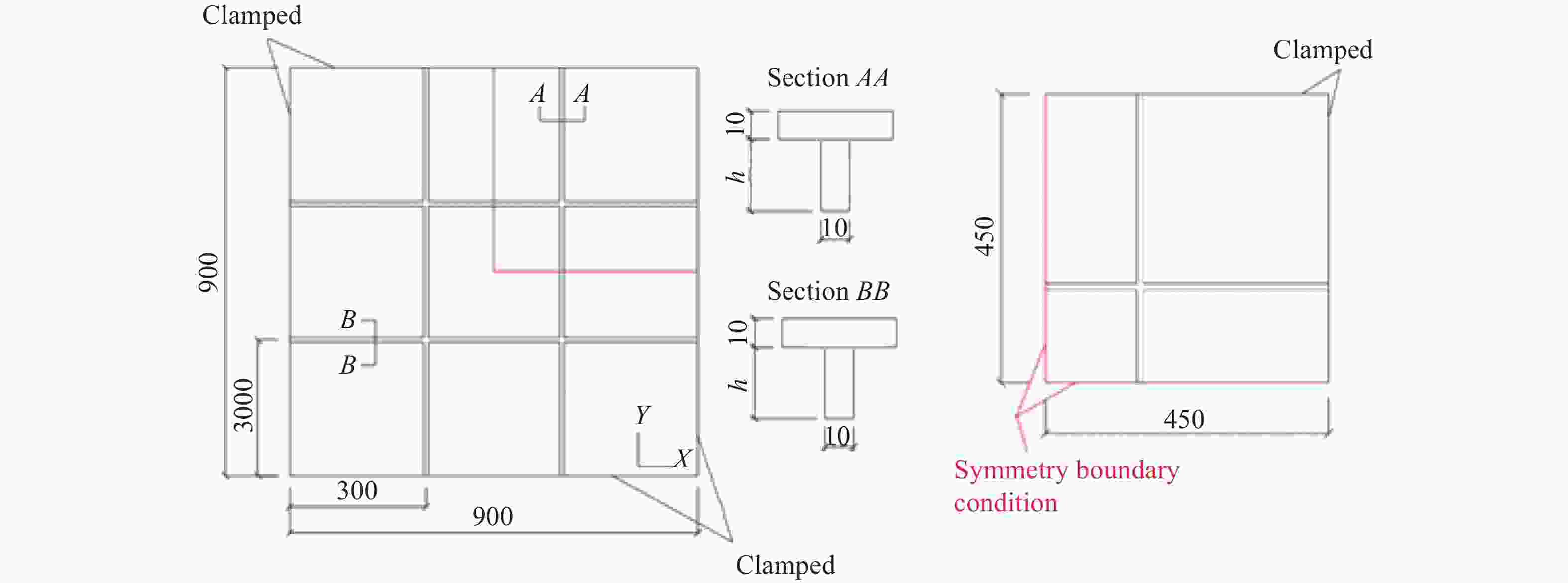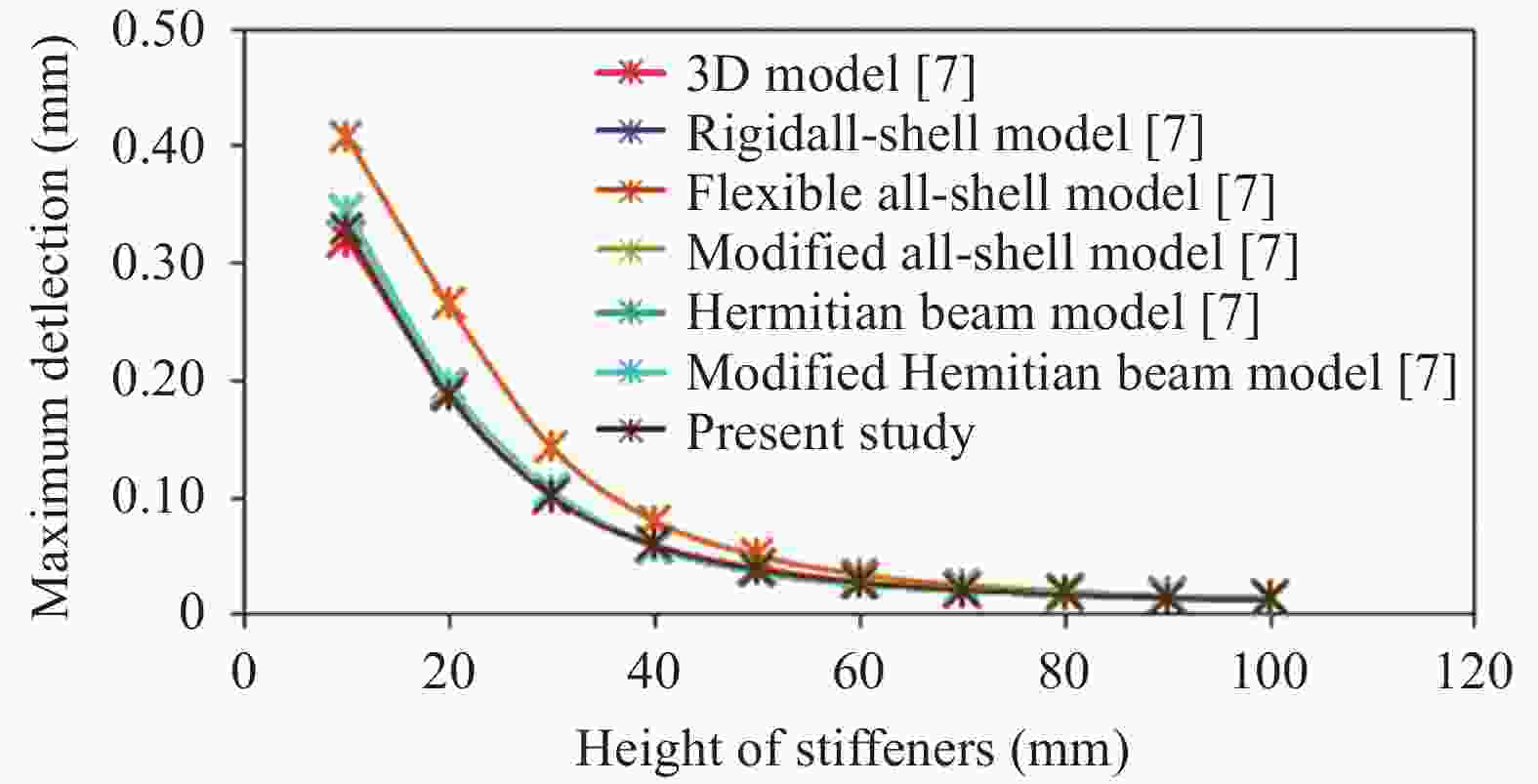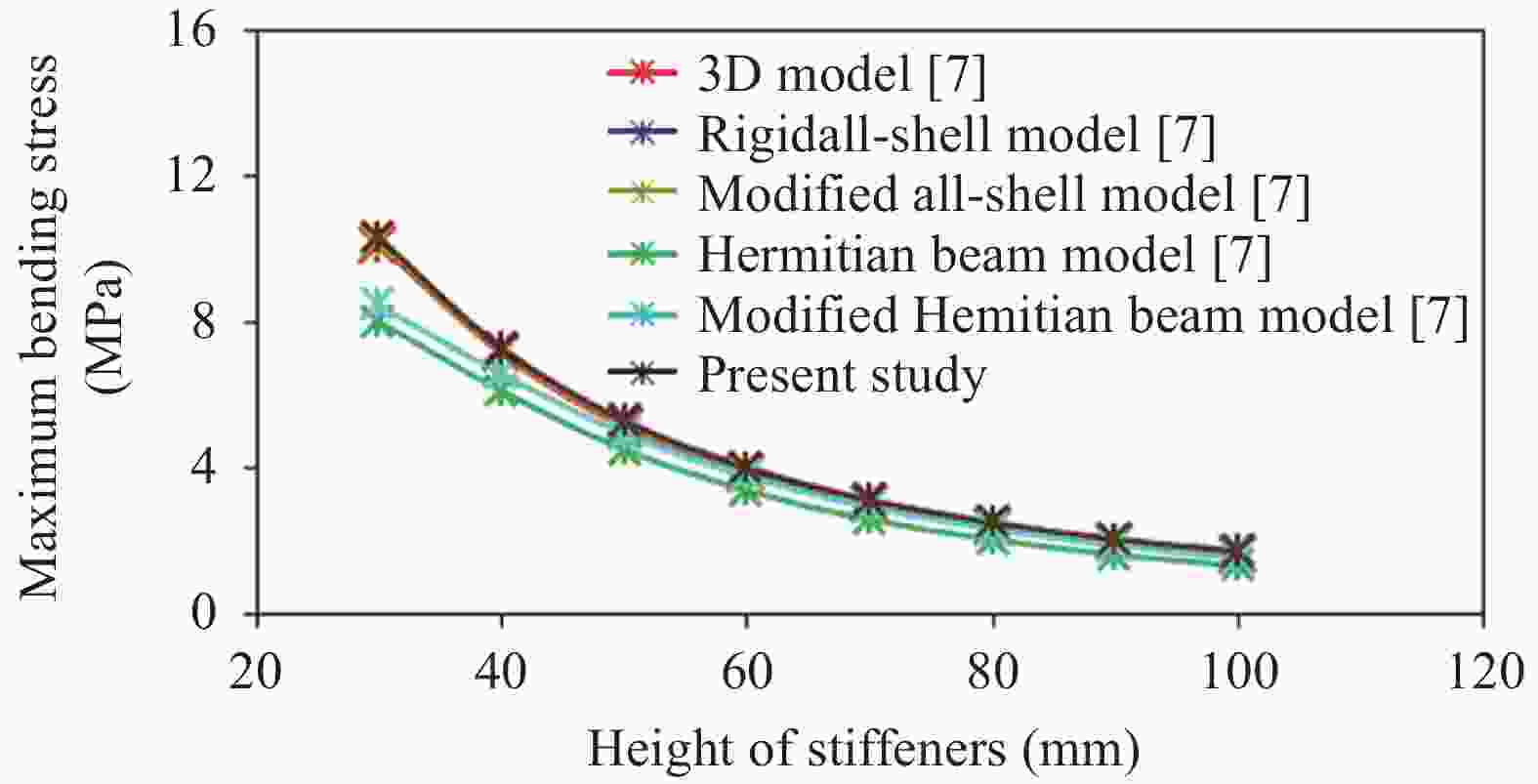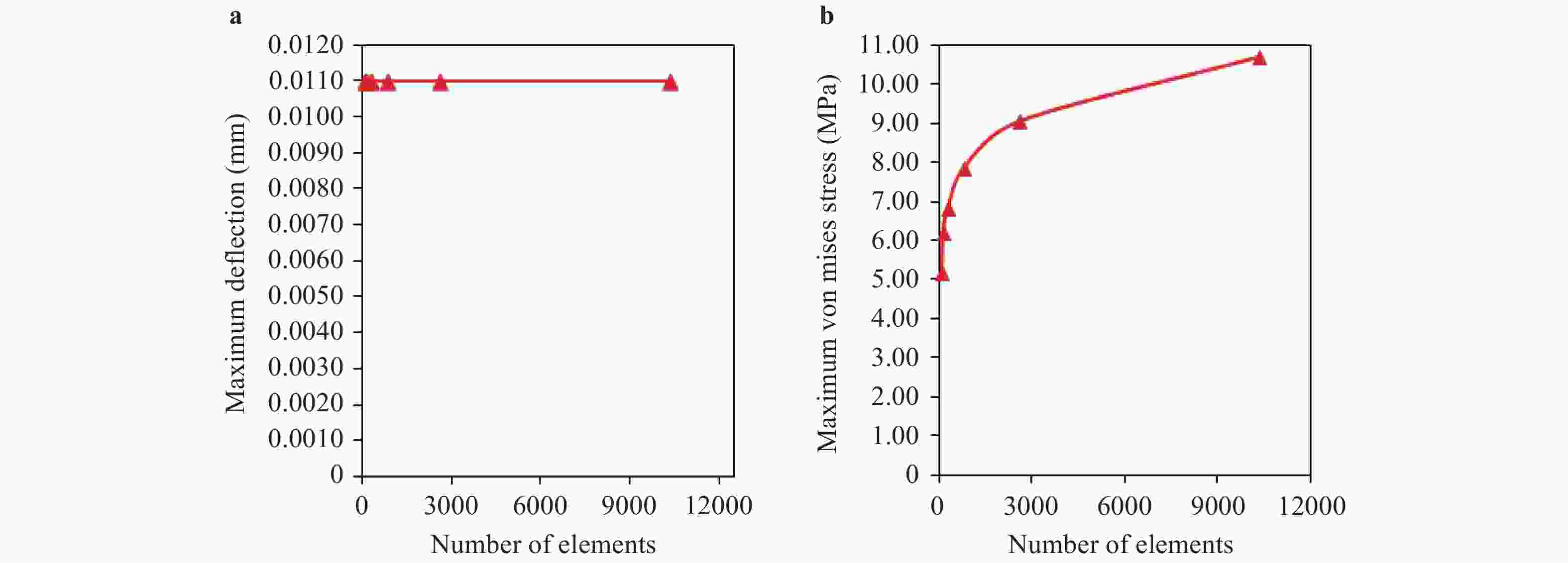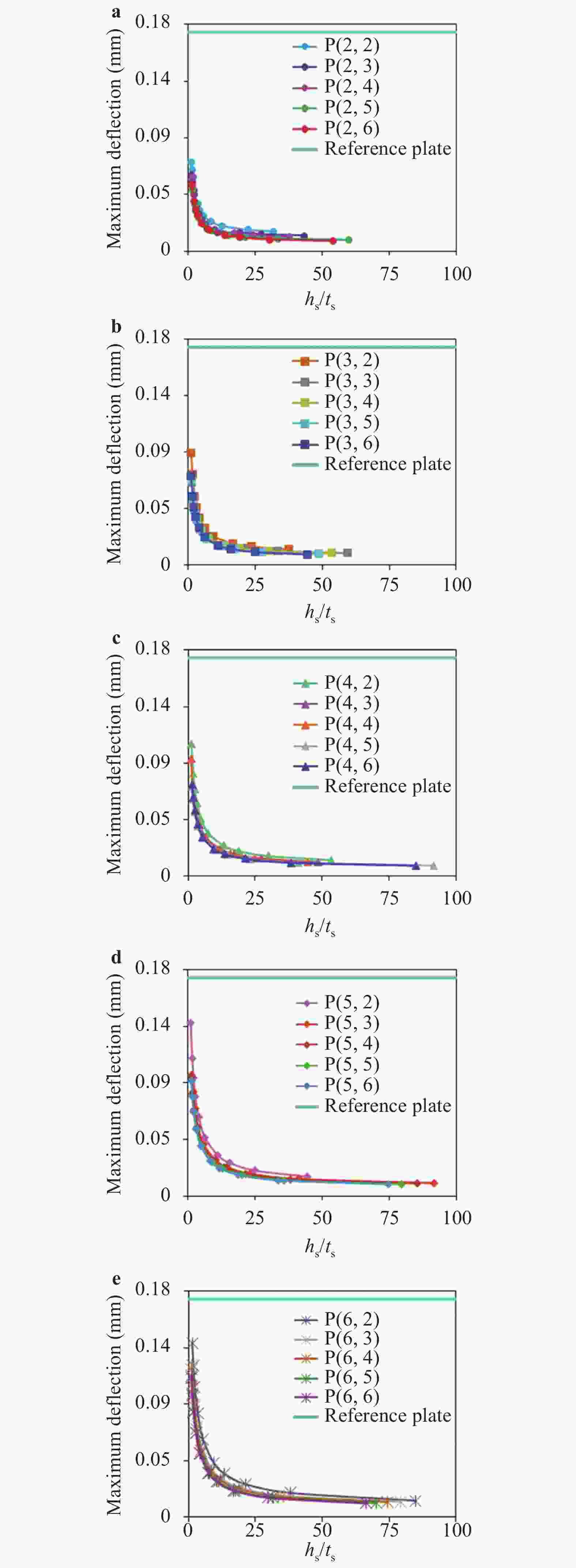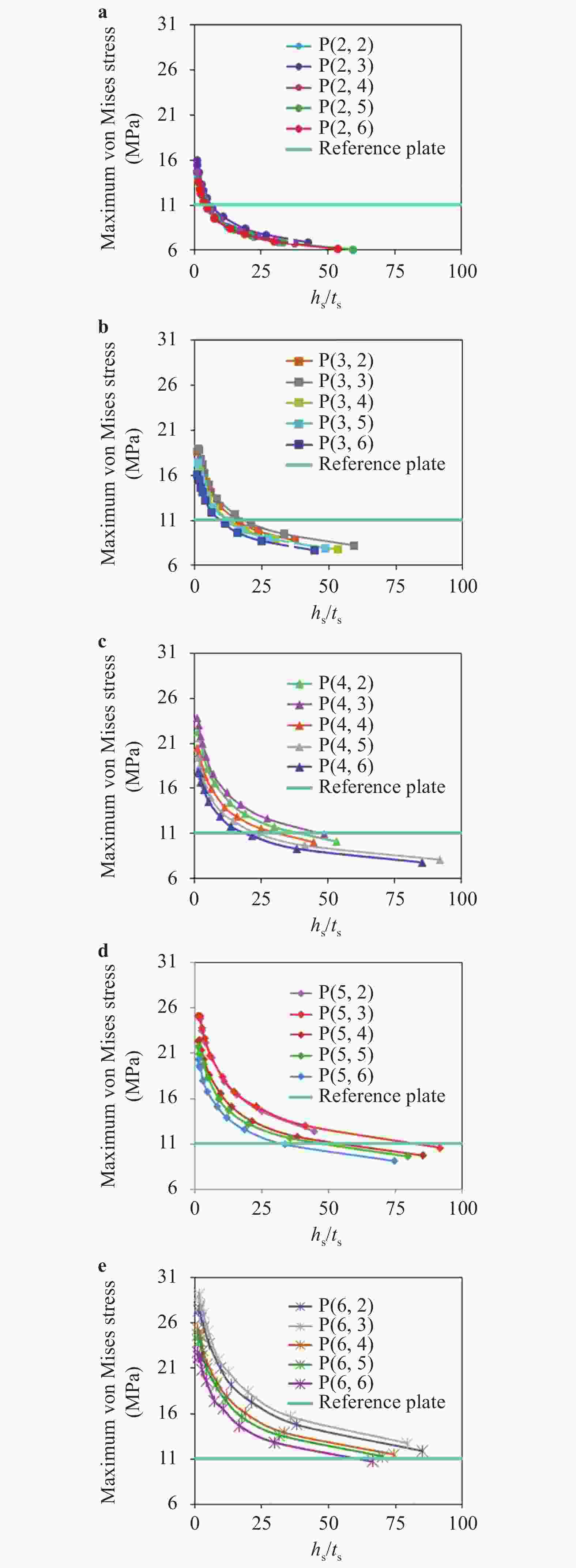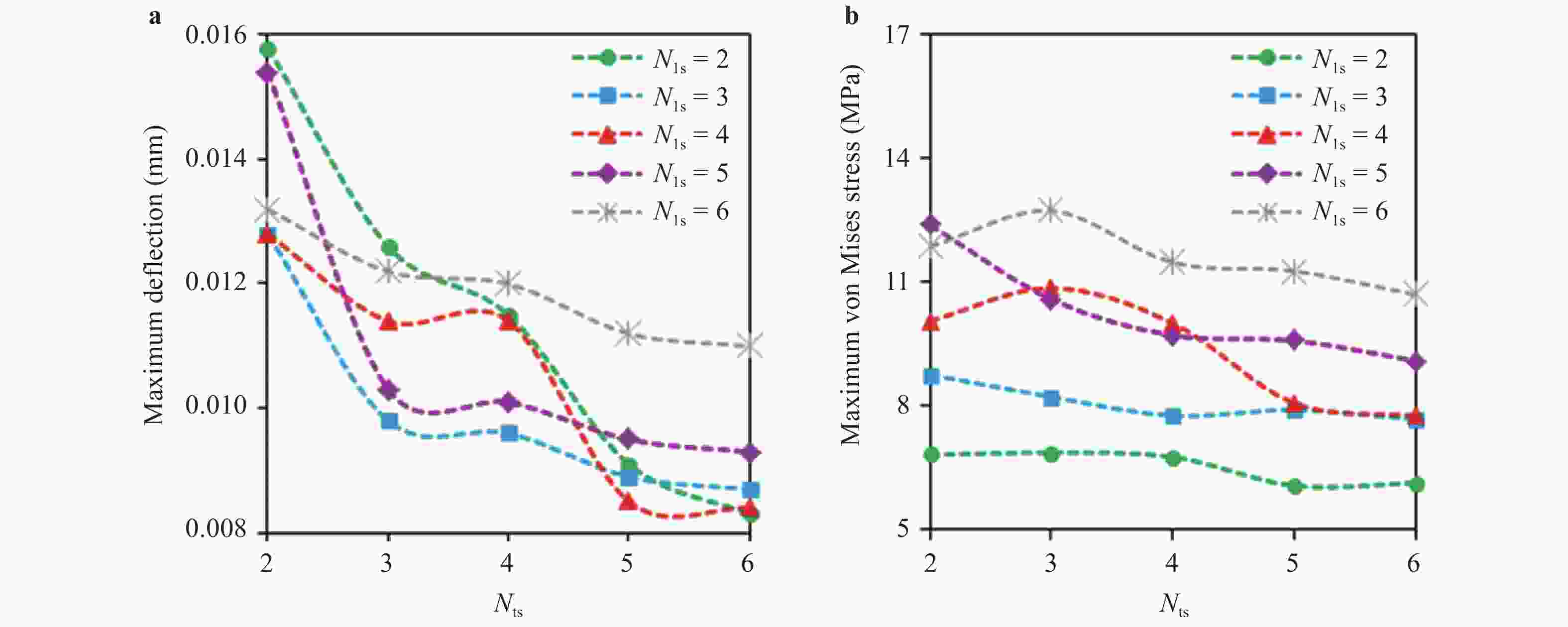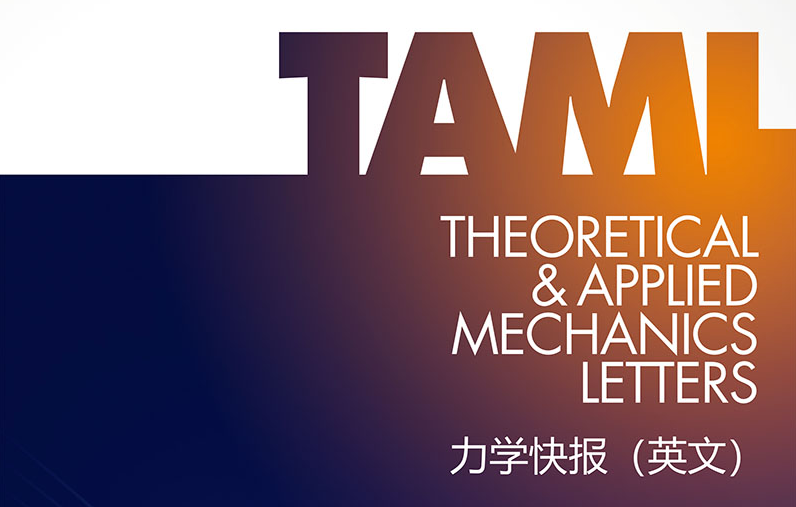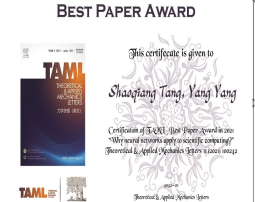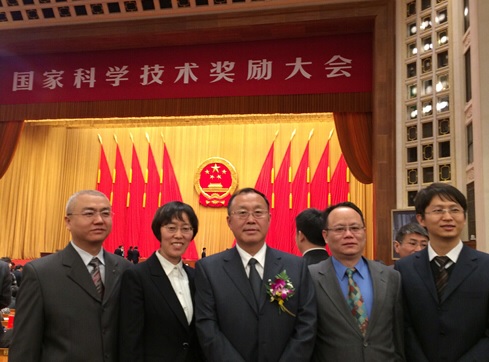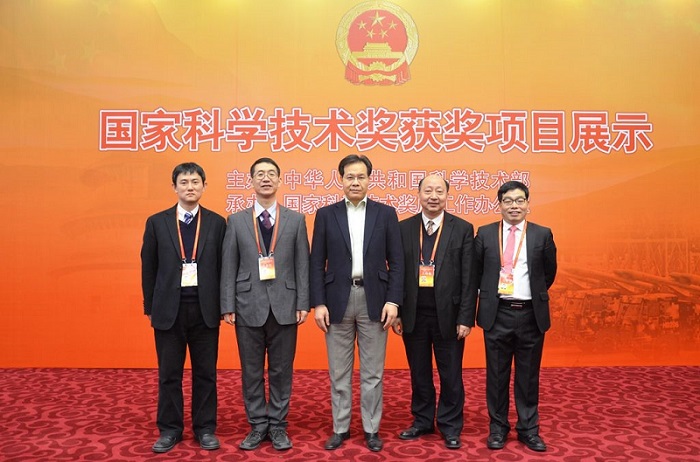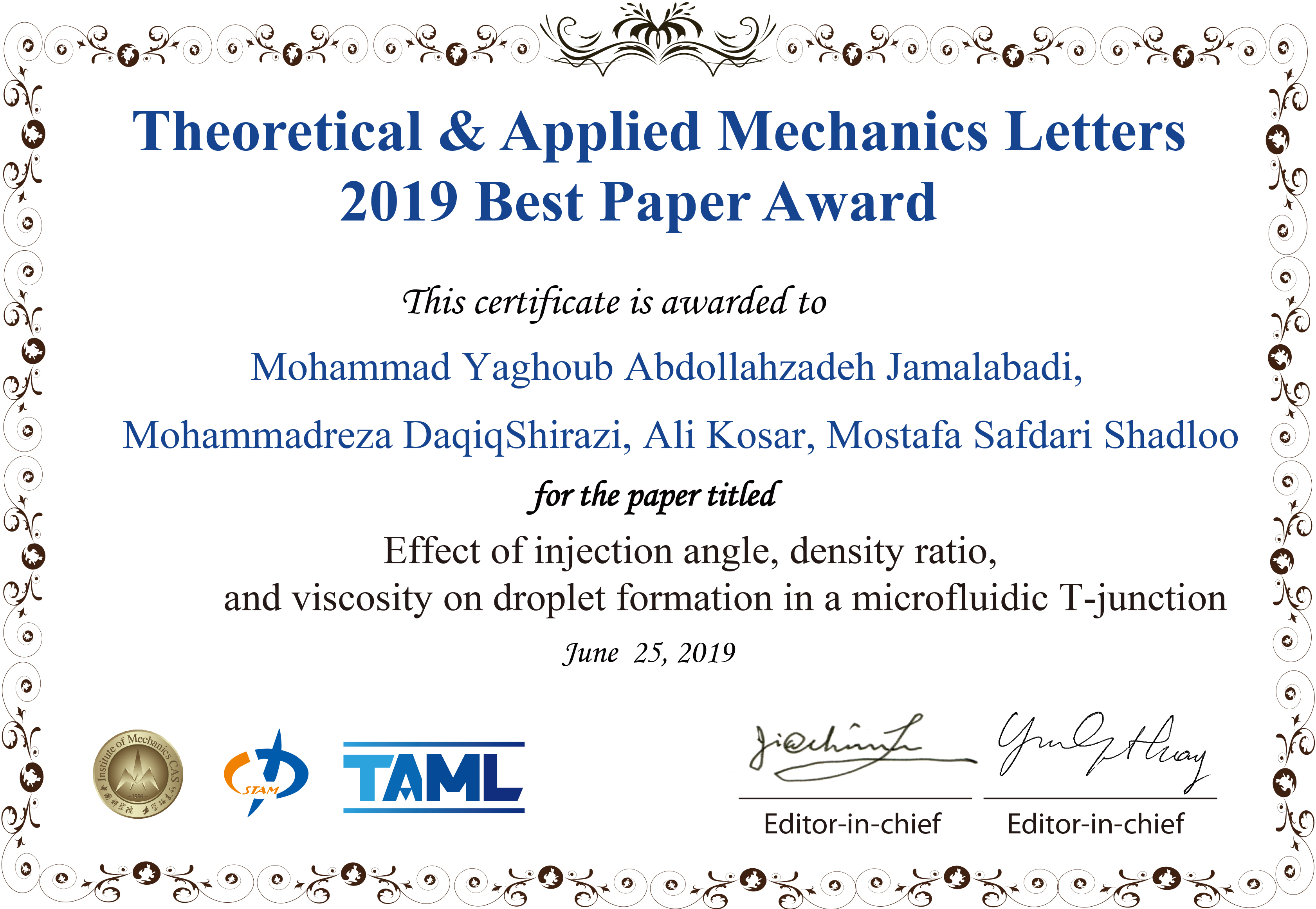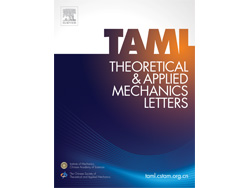Institute of Mechanics,
Chinese Academy of Sciences
2020 Vol.10(5)
Display Mode: |
Theoretical and Applied Mechanics Letters 2020, 10(5): 299-306.
doi: 10.1016/j.taml.2020.01.050
Abstract:
In recent years, shear horizontal (SH) waves are being paid more and more attention to in structural health monitoring as it has only one displacement component. In this paper, a unidirectional SH wave transducer based on phase-controlled antiparallel thickness-shear (d15) piezoelectric strips (APS) is proposed. Here two pairs of identical APS were used each of which is a bidirectional SH wave transducer. By setting the interval between the two pairs of APS as 1/4 wavelength and the excitation delay between them as 1/4 period of the central operating frequency, unidirectional SH waves can be excited. Both finite element simulations and experiments were performed to validate the proposed design. Results show that SH0 waves were successfully excited only along one direction and those along the unwanted directions were suppressed very well. The proposed unidirectional SH wave transducer is very helpful to study the fundamentals and applications of SH waves.
In recent years, shear horizontal (SH) waves are being paid more and more attention to in structural health monitoring as it has only one displacement component. In this paper, a unidirectional SH wave transducer based on phase-controlled antiparallel thickness-shear (d15) piezoelectric strips (APS) is proposed. Here two pairs of identical APS were used each of which is a bidirectional SH wave transducer. By setting the interval between the two pairs of APS as 1/4 wavelength and the excitation delay between them as 1/4 period of the central operating frequency, unidirectional SH waves can be excited. Both finite element simulations and experiments were performed to validate the proposed design. Results show that SH0 waves were successfully excited only along one direction and those along the unwanted directions were suppressed very well. The proposed unidirectional SH wave transducer is very helpful to study the fundamentals and applications of SH waves.
Theoretical and Applied Mechanics Letters 2020, 10(5): 307-314.
doi: 10.1016/j.taml.2020.01.040
Abstract:
The emergence of new types of composite materials, the depletion of existing hydrocarbon deposits, and the increase in the speed of trains require the development of new research methods based on wave scattering. Therefore, it is necessary to determine the laws of wave scattering in inhomogeneous media. We propose a method that combines the advantages of a numerical simulation with an analytical study of the boundary value problem of elastic and acoustic wave equations. In this letter we present the results of the study using the proposed method: the formation of a response from a shear wave in an acoustic medium and the formation of shear waves when a vertically incident longitudinal wave is scattered by a vertical gas-filled fracture. We have obtained a number of analytical expressions characterising the scattering of these wave types.
The emergence of new types of composite materials, the depletion of existing hydrocarbon deposits, and the increase in the speed of trains require the development of new research methods based on wave scattering. Therefore, it is necessary to determine the laws of wave scattering in inhomogeneous media. We propose a method that combines the advantages of a numerical simulation with an analytical study of the boundary value problem of elastic and acoustic wave equations. In this letter we present the results of the study using the proposed method: the formation of a response from a shear wave in an acoustic medium and the formation of shear waves when a vertically incident longitudinal wave is scattered by a vertical gas-filled fracture. We have obtained a number of analytical expressions characterising the scattering of these wave types.
Theoretical and Applied Mechanics Letters 2020, 10(5): 315-320.
doi: 10.1016/j.taml.2020.01.044
Abstract:
Accelerated proximal gradient methods have recently been developed for solving quasi-static incremental problems of elastoplastic analysis with some different yield criteria. It has been demonstrated through numerical experiments that these methods can outperform conventional optimization-based approaches in computational plasticity. However, in literature these algorithms are described individually for specific yield criteria, and hence there exists no guide for application of the algorithms to other yield criteria. This short paper presents a general form of algorithm design, independent of specific forms of yield criteria, that unifies the existing proximal gradient methods. Clear interpretation is also given to each step of the presented general algorithm so that each update rule is linked to the underlying physical laws in terms of mechanical quantities.
Accelerated proximal gradient methods have recently been developed for solving quasi-static incremental problems of elastoplastic analysis with some different yield criteria. It has been demonstrated through numerical experiments that these methods can outperform conventional optimization-based approaches in computational plasticity. However, in literature these algorithms are described individually for specific yield criteria, and hence there exists no guide for application of the algorithms to other yield criteria. This short paper presents a general form of algorithm design, independent of specific forms of yield criteria, that unifies the existing proximal gradient methods. Clear interpretation is also given to each step of the presented general algorithm so that each update rule is linked to the underlying physical laws in terms of mechanical quantities.
Theoretical and Applied Mechanics Letters 2020, 10(5): 321-326.
doi: 10.1016/j.taml.2020.01.045
Abstract:
The rock fragmentation involves the inter-block and the intra-block fracture. A simulation method for rock fragmentation is developed by coupling Voronoi diagram (VD) and discretized virtual internal bond (DVIB). The DVIB is a lattice model that consists of bonds. The VD is used to generate the potential block structure in the DVIB mesh. Each potential block may contain any number of bond cells. To characterize the inter-block fracture, a hyperelastic bond potential is employed for the bond cells that are cut by the VD edges. While to characterize the intra-block fracture, an elastobrittle bond potential is adopted for the bonds in a block. By this method, both the inter-block and intra-block fracture can be well simulated. The simulation results suggest that this method is a simple and efficient approach to rock fragmentation simulation with block smash.
The rock fragmentation involves the inter-block and the intra-block fracture. A simulation method for rock fragmentation is developed by coupling Voronoi diagram (VD) and discretized virtual internal bond (DVIB). The DVIB is a lattice model that consists of bonds. The VD is used to generate the potential block structure in the DVIB mesh. Each potential block may contain any number of bond cells. To characterize the inter-block fracture, a hyperelastic bond potential is employed for the bond cells that are cut by the VD edges. While to characterize the intra-block fracture, an elastobrittle bond potential is adopted for the bonds in a block. By this method, both the inter-block and intra-block fracture can be well simulated. The simulation results suggest that this method is a simple and efficient approach to rock fragmentation simulation with block smash.
Theoretical and Applied Mechanics Letters 2020, 10(5): 327-332.
doi: 10.1016/j.taml.2020.01.051
Abstract:
The transient cavitating flow around the Clark-Y hydrofoil is numerically investigated by the dynamic mode decomposition with criterion. Based on the ranking dominant modes, frequencies of the first four modes are in good accordance with those obtained by fast Fourier transform. Furthermore, the cavitating flow field is reconstructed by the first four modes, and the dominant flow features are well captured with the reconstructed error below 12% when compared to the simulated flow field. This paper offers a reference for observing and reconstructing the flow fields, and gives a novel insight into the transient cavitating flow features.
The transient cavitating flow around the Clark-Y hydrofoil is numerically investigated by the dynamic mode decomposition with criterion. Based on the ranking dominant modes, frequencies of the first four modes are in good accordance with those obtained by fast Fourier transform. Furthermore, the cavitating flow field is reconstructed by the first four modes, and the dominant flow features are well captured with the reconstructed error below 12% when compared to the simulated flow field. This paper offers a reference for observing and reconstructing the flow fields, and gives a novel insight into the transient cavitating flow features.
Theoretical and Applied Mechanics Letters 2020, 10(5): 333-342.
doi: 10.1016/j.taml.2020.01.049
Abstract:
The aim of the present study is to design a new fifth order system of Emden–Fowler equations and related four types of the model. The standard second order form of the Emden–Fowler has been used to obtain the new model. The shape factor that appear more than one time discussed in detail for every case of the designed model. The singularity at η = 0 at one point or multiple points is also discussed at each type of the model. For validation and correctness of the new designed model, one example of each type based on system of fifth order Emden–Fowler equations are provided and numerical solutions of the designed equations of each type have been obtained by using variational iteration scheme. The comparison of the exact results and present numerical outcomes for solving one problem of each type is presented to check the accuracy of the designed model.
The aim of the present study is to design a new fifth order system of Emden–Fowler equations and related four types of the model. The standard second order form of the Emden–Fowler has been used to obtain the new model. The shape factor that appear more than one time discussed in detail for every case of the designed model. The singularity at η = 0 at one point or multiple points is also discussed at each type of the model. For validation and correctness of the new designed model, one example of each type based on system of fifth order Emden–Fowler equations are provided and numerical solutions of the designed equations of each type have been obtained by using variational iteration scheme. The comparison of the exact results and present numerical outcomes for solving one problem of each type is presented to check the accuracy of the designed model.
Theoretical and Applied Mechanics Letters 2020, 10(5): 343-353.
doi: 10.1016/j.taml.2020.01.037
Abstract:
Ultrasound guided breast biopsy navigation system with a graphical user interface and a passive robotic needle holder is developed to increase the performance and reliability of the radiologist. Ultrasound calibration and tool tip calibration are required before using the system. A ladder phantom is developed to be used for ultrasound calibration in real time system with only one ultrasound image required. The passive robotic needle holder structure results in an identity matrix for the makes the rotation matrix; therefore, only translation and scaling are required in the system. This method can be applied to multiple ultrasound depths, which has a relationship at each depth and a relationship to the ultrasound image on the display. The results show high accuracy (<1 mm.) and rapid calibration (5–10 minutes) which is suitable for a real time system like a breast biopsy navigation system based on tests with a breast phantom.
Ultrasound guided breast biopsy navigation system with a graphical user interface and a passive robotic needle holder is developed to increase the performance and reliability of the radiologist. Ultrasound calibration and tool tip calibration are required before using the system. A ladder phantom is developed to be used for ultrasound calibration in real time system with only one ultrasound image required. The passive robotic needle holder structure results in an identity matrix for the makes the rotation matrix; therefore, only translation and scaling are required in the system. This method can be applied to multiple ultrasound depths, which has a relationship at each depth and a relationship to the ultrasound image on the display. The results show high accuracy (<1 mm.) and rapid calibration (5–10 minutes) which is suitable for a real time system like a breast biopsy navigation system based on tests with a breast phantom.
Theoretical and Applied Mechanics Letters 2020, 10(5): 354-365.
doi: 10.1016/j.taml.2020.01.046
Abstract:
This paper deals with a numerical study of weak shock-waves propagation and their attenuation in channel flow having different heights and exhibiting a hollow circular cavities with different depths and diffraction angles inside. The effect of initial diffraction angle and cavity depth on the shock mitigation is investigated. A better shock attenuation is achieved with diffraction angle\begin{document}$ \theta_{w} = 90^\circ $\end{document} ![]()
![]()
\begin{document}$M_{\rm{s}} = 1.6$\end{document} ![]()
![]()
\begin{document}$M_{\rm{s}} = 1.1$\end{document} ![]()
![]()
This paper deals with a numerical study of weak shock-waves propagation and their attenuation in channel flow having different heights and exhibiting a hollow circular cavities with different depths and diffraction angles inside. The effect of initial diffraction angle and cavity depth on the shock mitigation is investigated. A better shock attenuation is achieved with diffraction angle
Theoretical and Applied Mechanics Letters 2020, 10(5): 366-376.
doi: 10.1016/j.taml.2020.01.042
Abstract:
A new computational procedure for modelling the structural behavior of stiffened plates with symmetry boundary conditions is here presented. It uses two-dimensional finite elements as a way to decrease computational time without losing precision thanks to a relatively small number of elements applied for analyzing out-of-plane displacements (deflections) and stresses. Adding, the constructal design method was included in the procedure, together with the exhaustive search technique, with the scope to optimize the stress/strain status of stiffened plates by design changes. For the purpose, a reference plate without stiffeners was initially design and used as starting point. Part of the volume was reshaped into stiffeners: thickness was reduced maintaining unchanged weight, length and width. The main goal was to minimize strains and stresses by geometric changes. Results demonstrated that, thanks to this design procedure, it is always possible to find an adequate geometry transformation from reference plate into stiffeners, allowing significant improvements in mechanical behavior.
A new computational procedure for modelling the structural behavior of stiffened plates with symmetry boundary conditions is here presented. It uses two-dimensional finite elements as a way to decrease computational time without losing precision thanks to a relatively small number of elements applied for analyzing out-of-plane displacements (deflections) and stresses. Adding, the constructal design method was included in the procedure, together with the exhaustive search technique, with the scope to optimize the stress/strain status of stiffened plates by design changes. For the purpose, a reference plate without stiffeners was initially design and used as starting point. Part of the volume was reshaped into stiffeners: thickness was reduced maintaining unchanged weight, length and width. The main goal was to minimize strains and stresses by geometric changes. Results demonstrated that, thanks to this design procedure, it is always possible to find an adequate geometry transformation from reference plate into stiffeners, allowing significant improvements in mechanical behavior.
 Submit a Paper
Submit a Paper
 Subscription
Subscription
News
MORE+
Call for Papers
MORE+
- Crossing-Mechanics Driven by Big Data
- Machine learning in the fluid mechanics research of wind energy
- Mechanics of Origami/Kirigami structures and metamaterials
- New insights and perspectives on impact biomechanics for human tissues: from injury prevention, protection to protective equipment
- Environmental Mechanics for Extreme Natural Events



